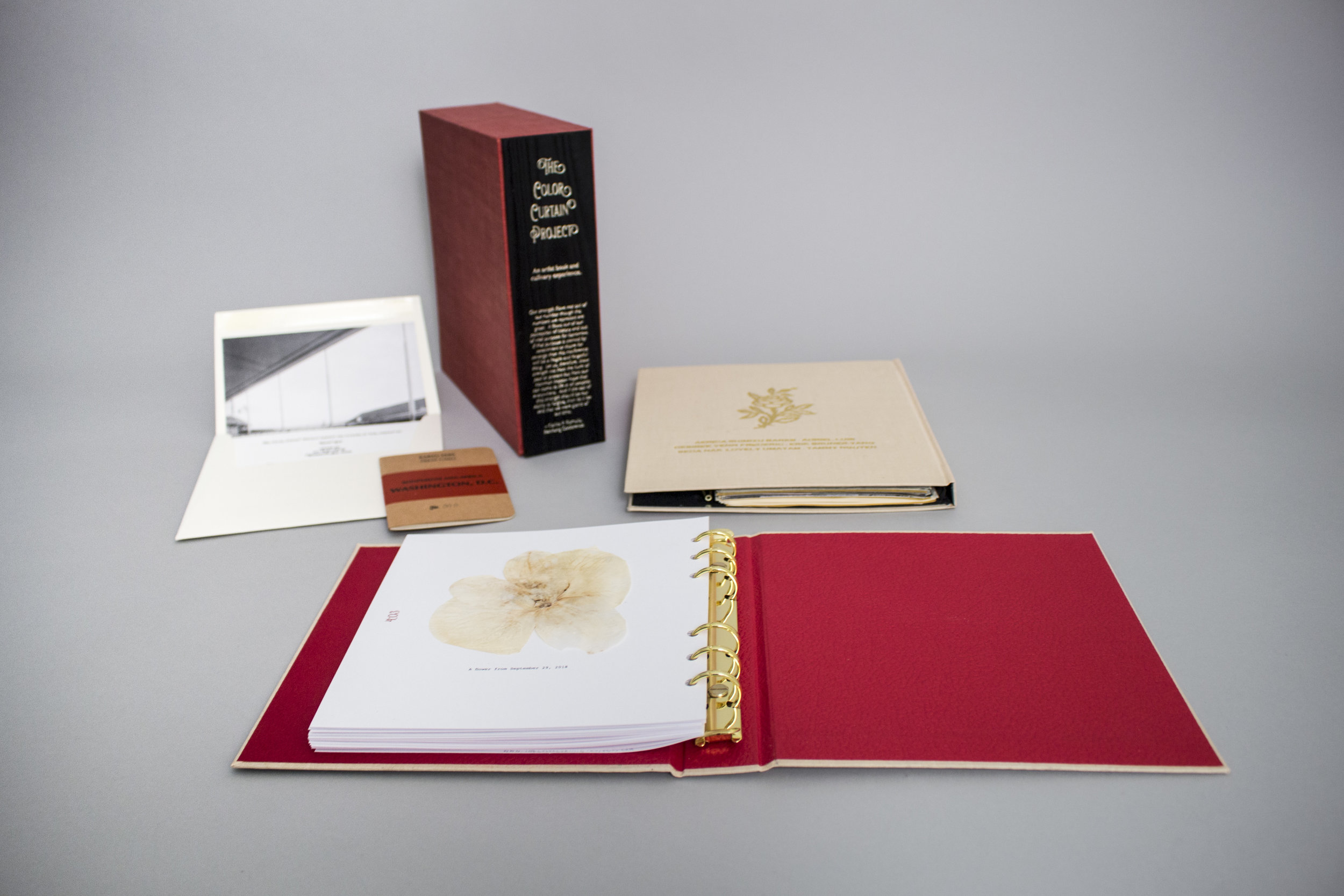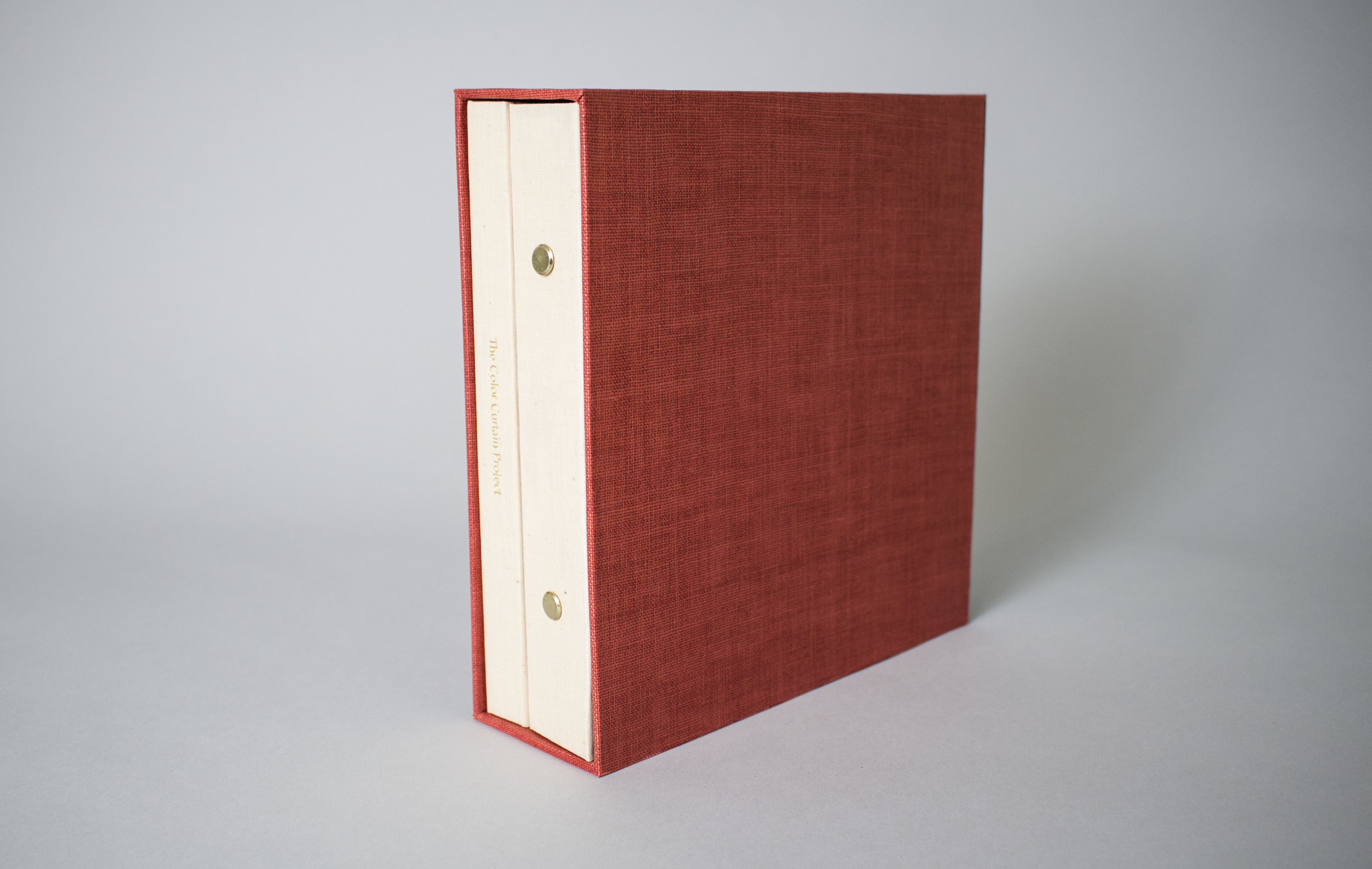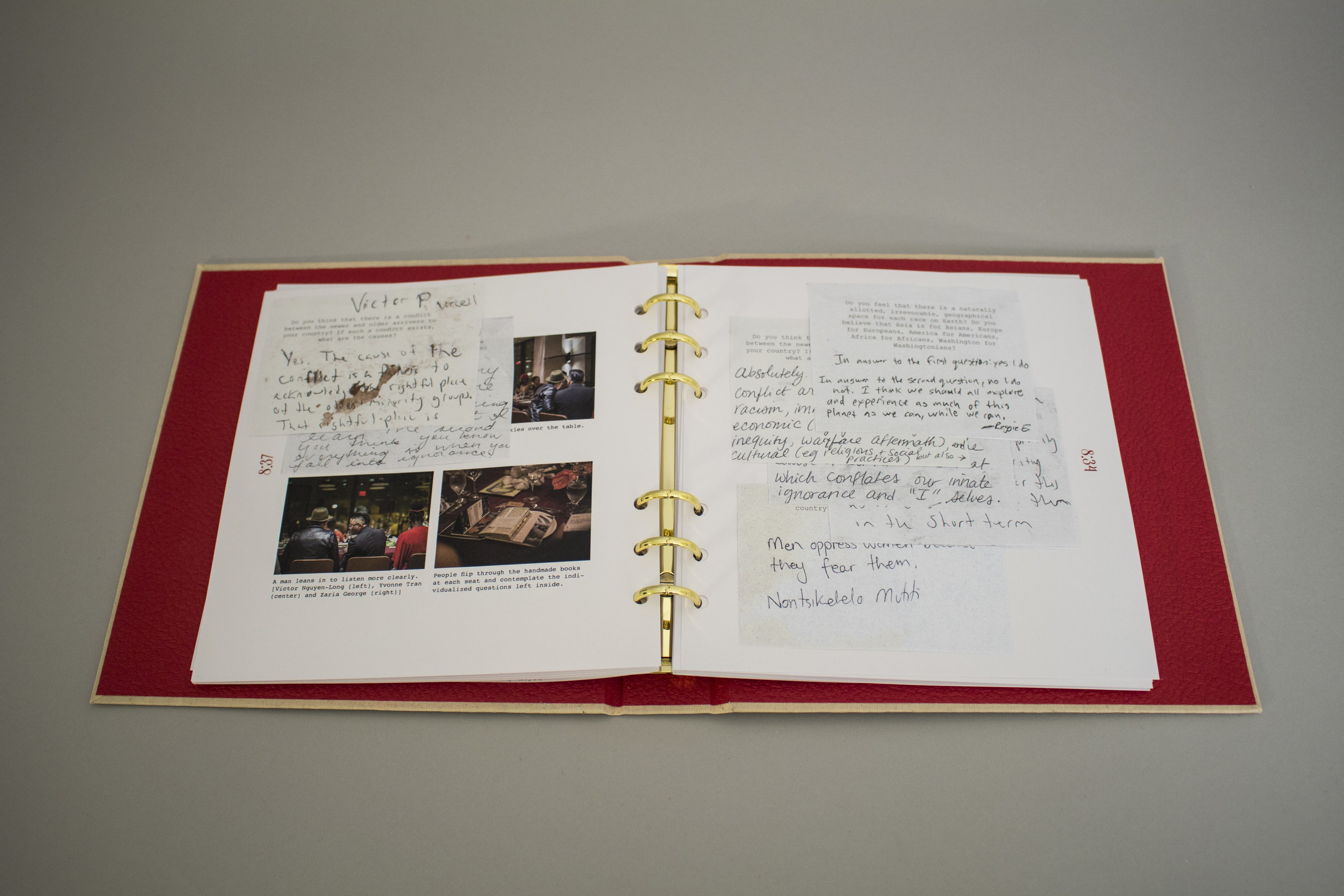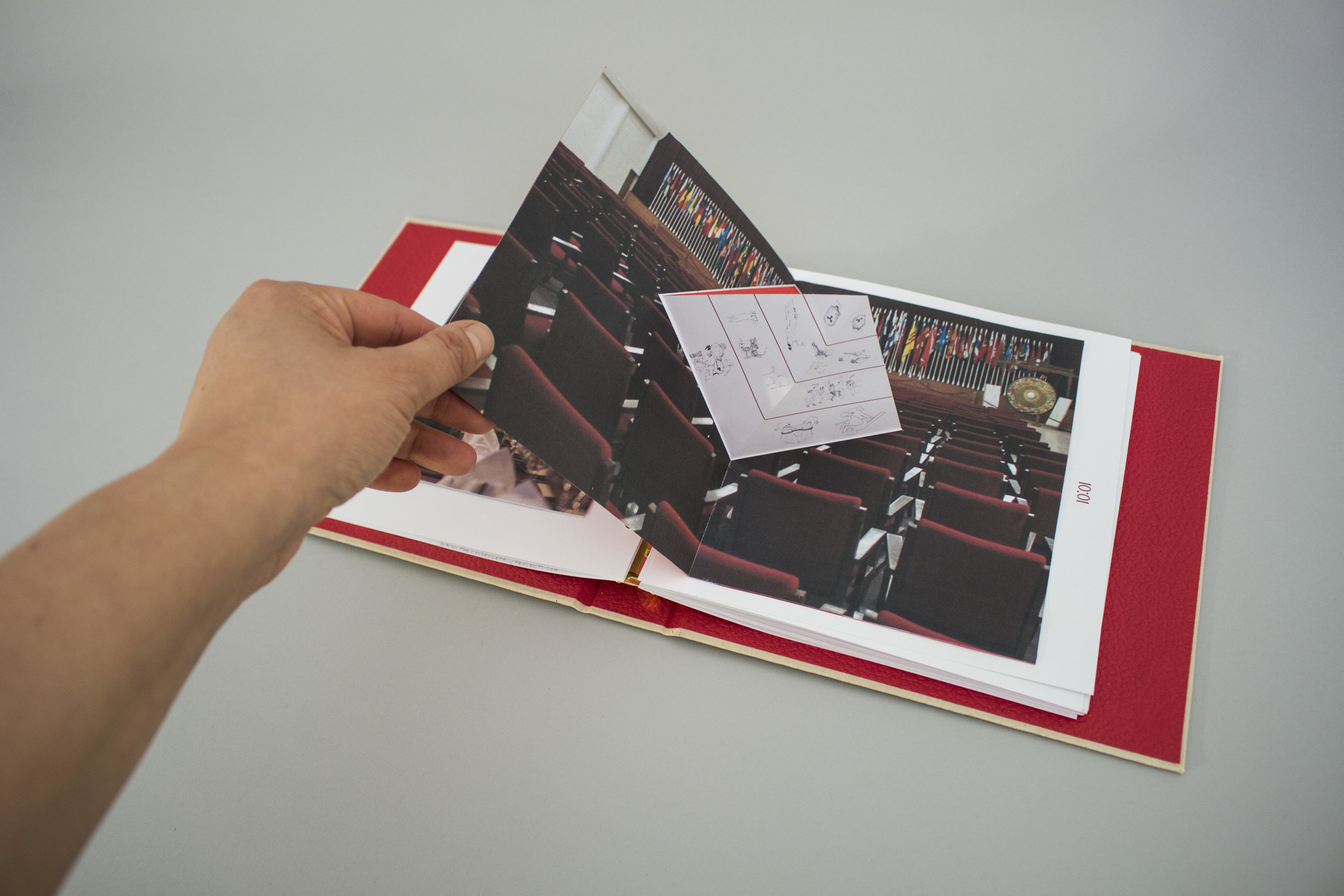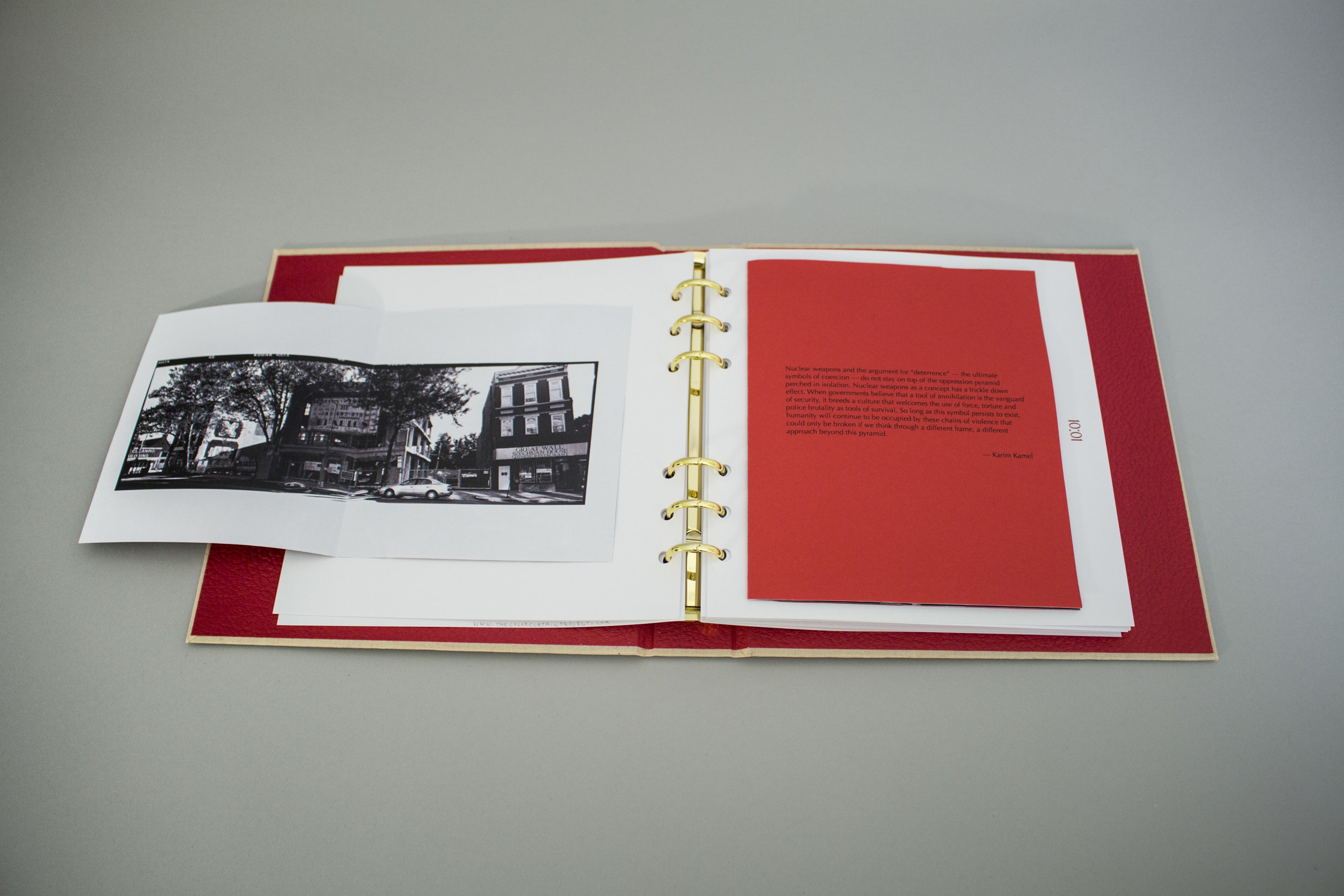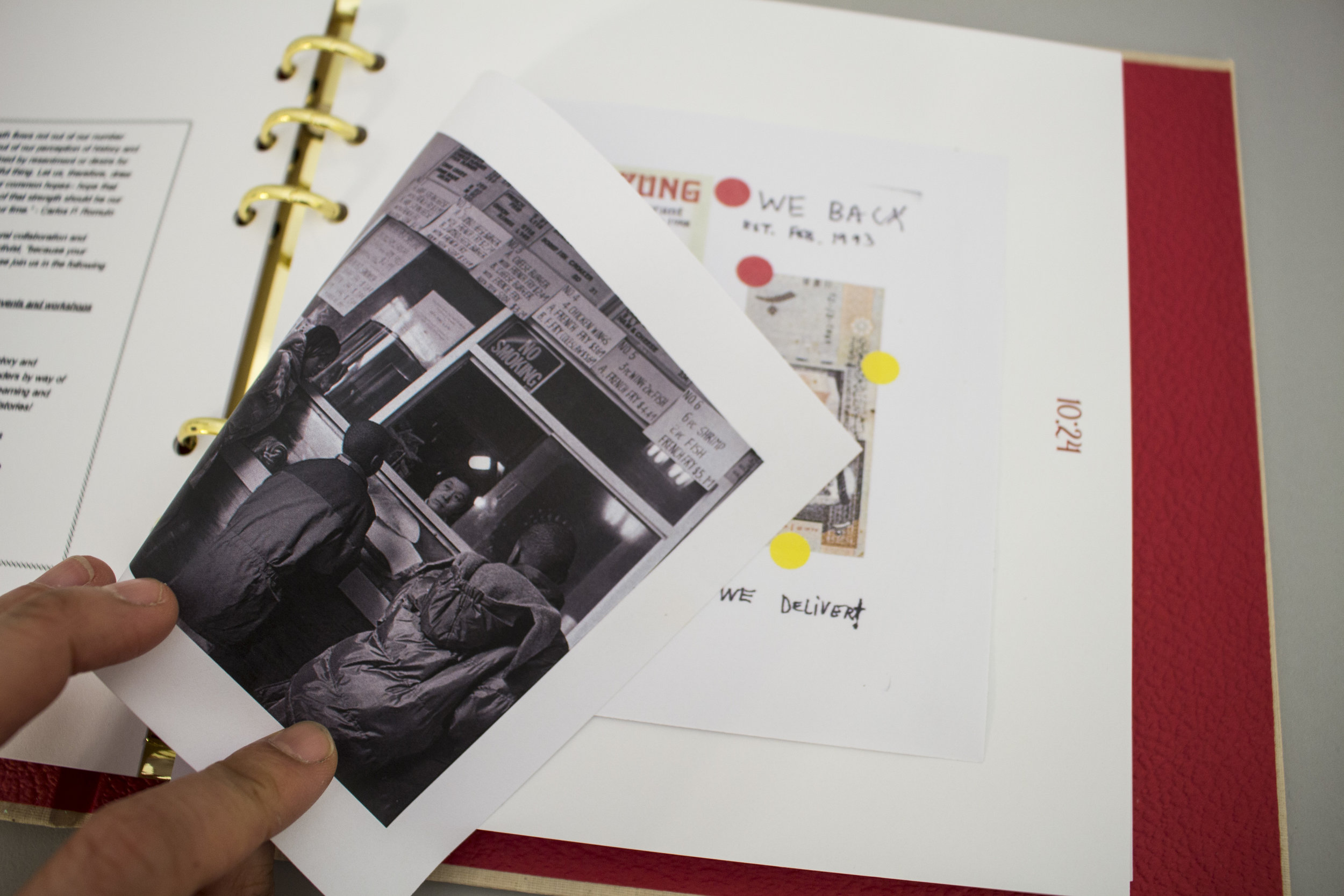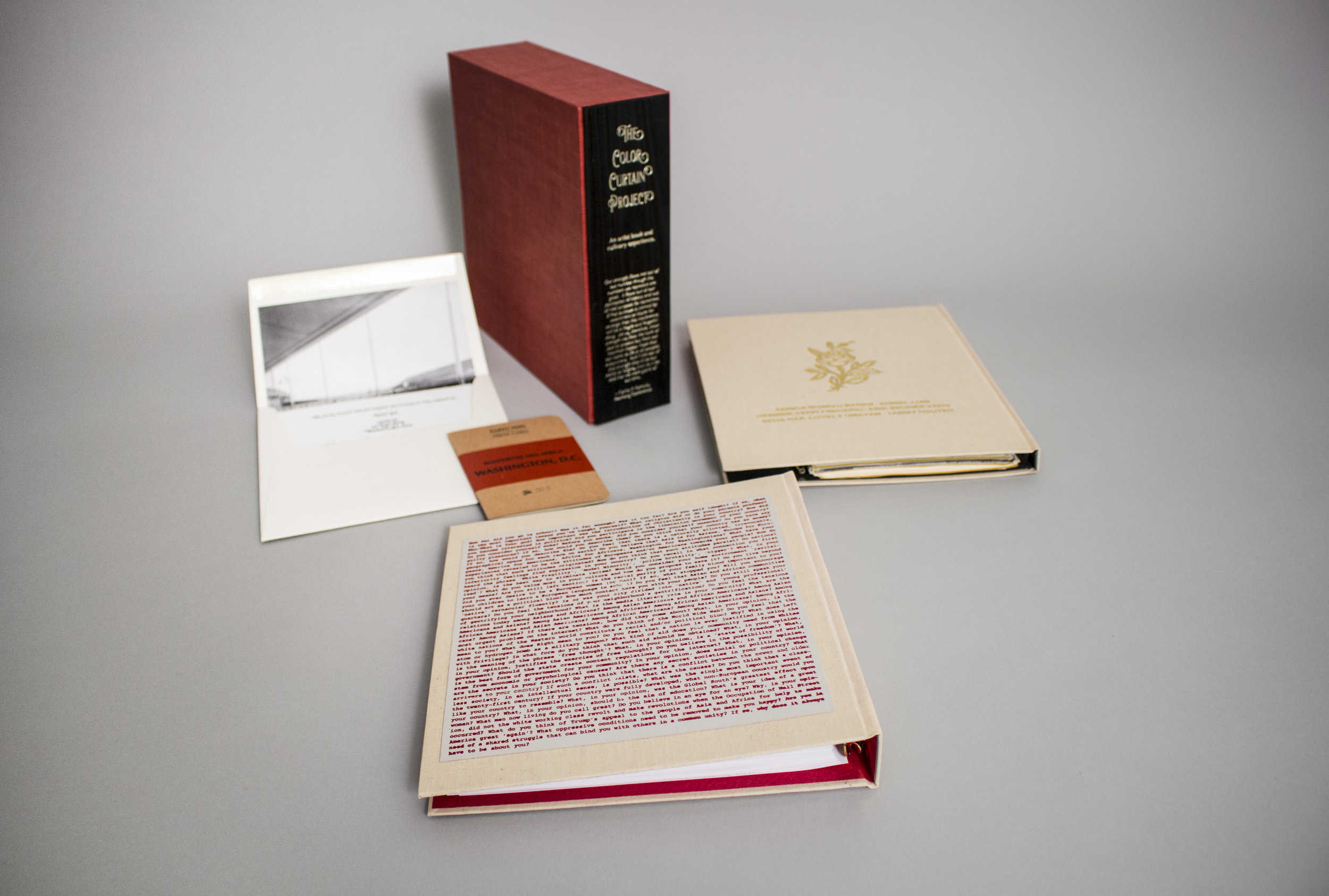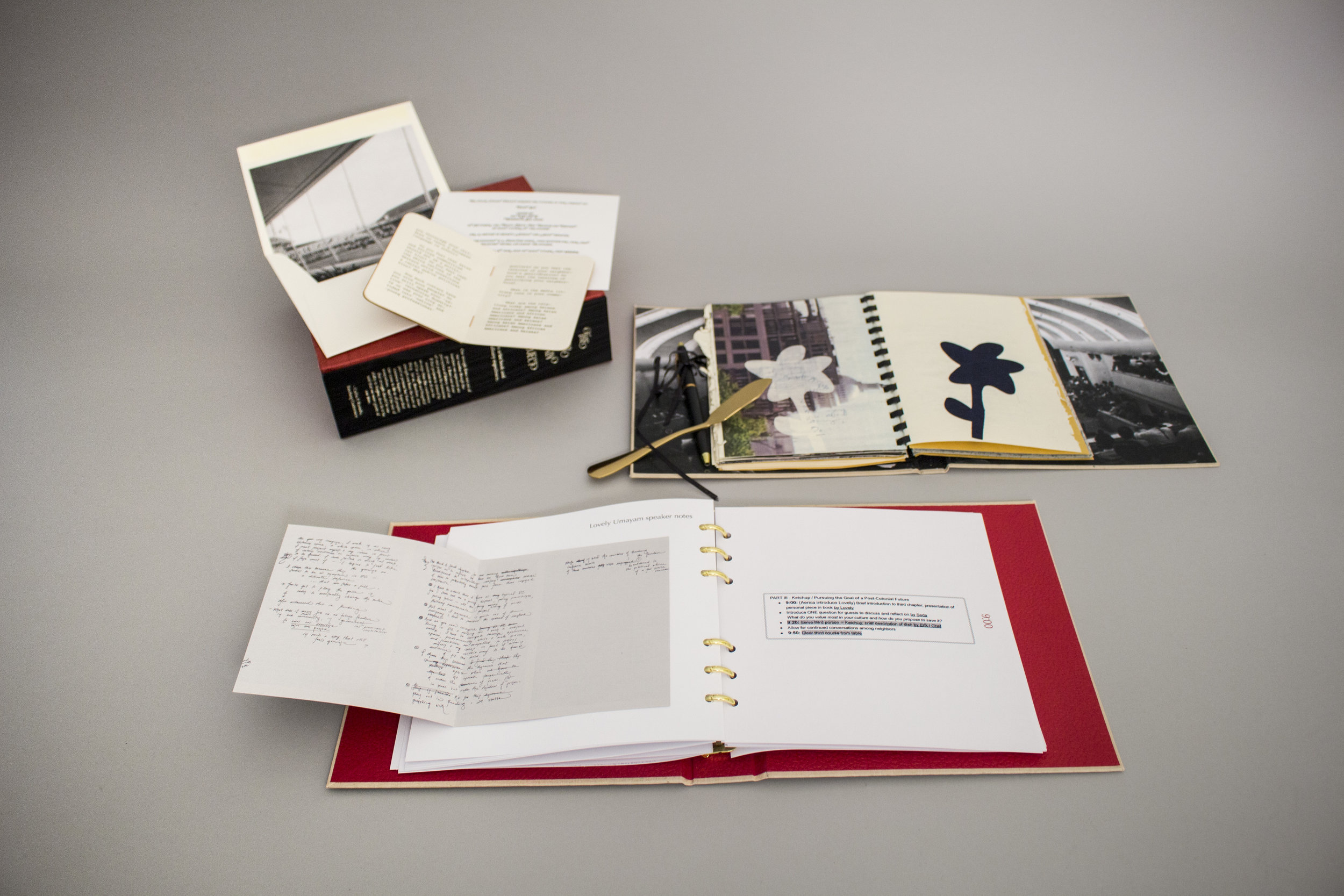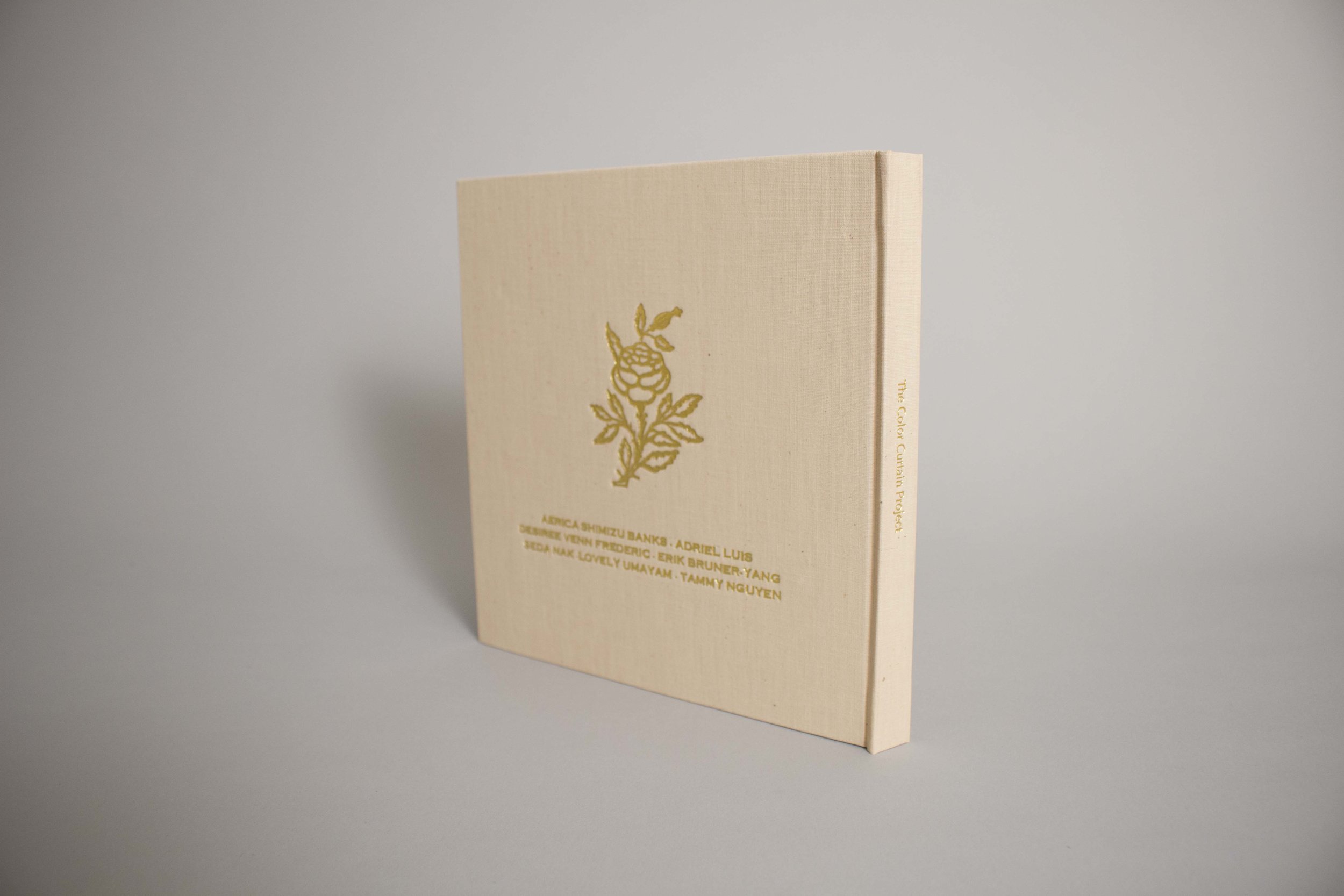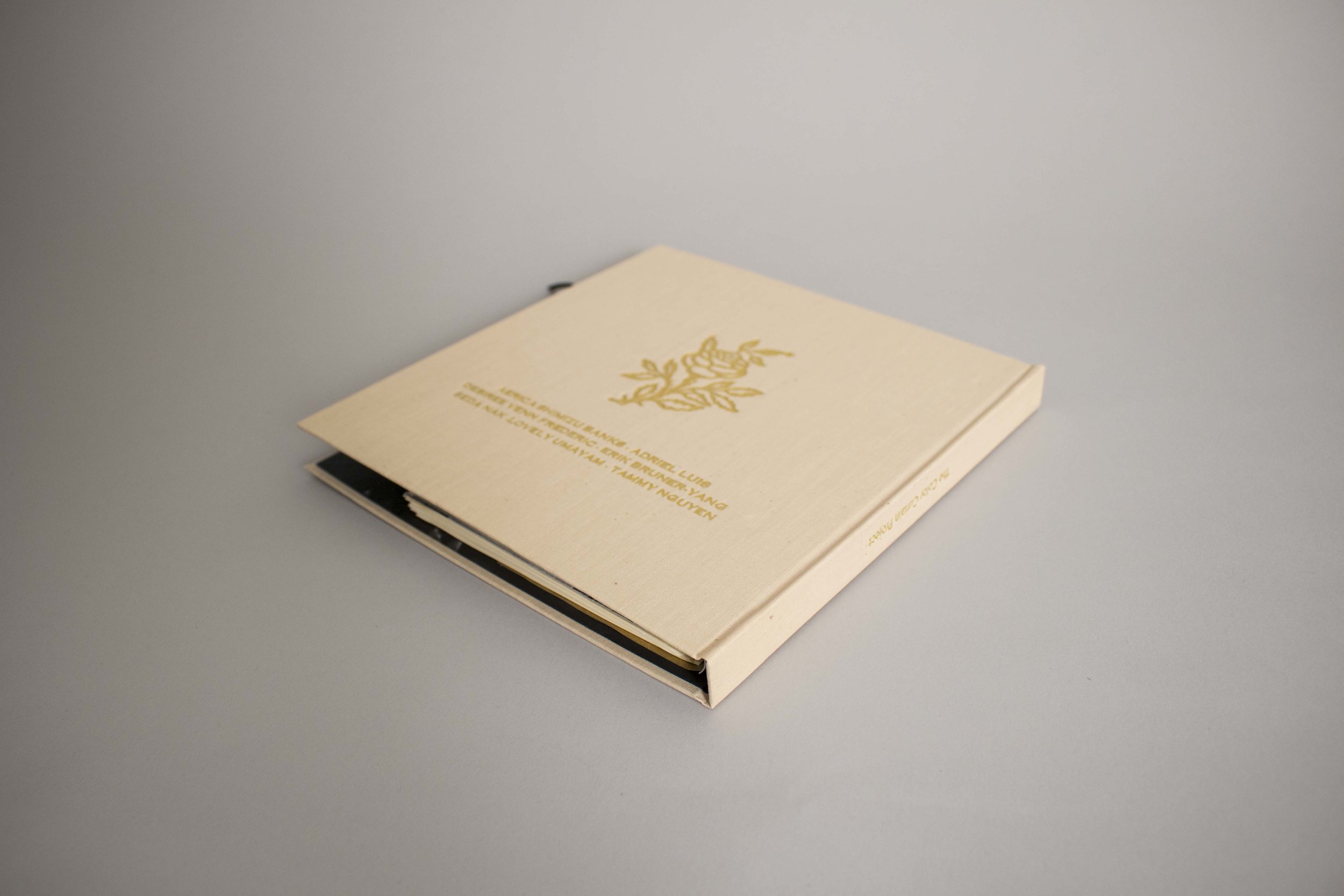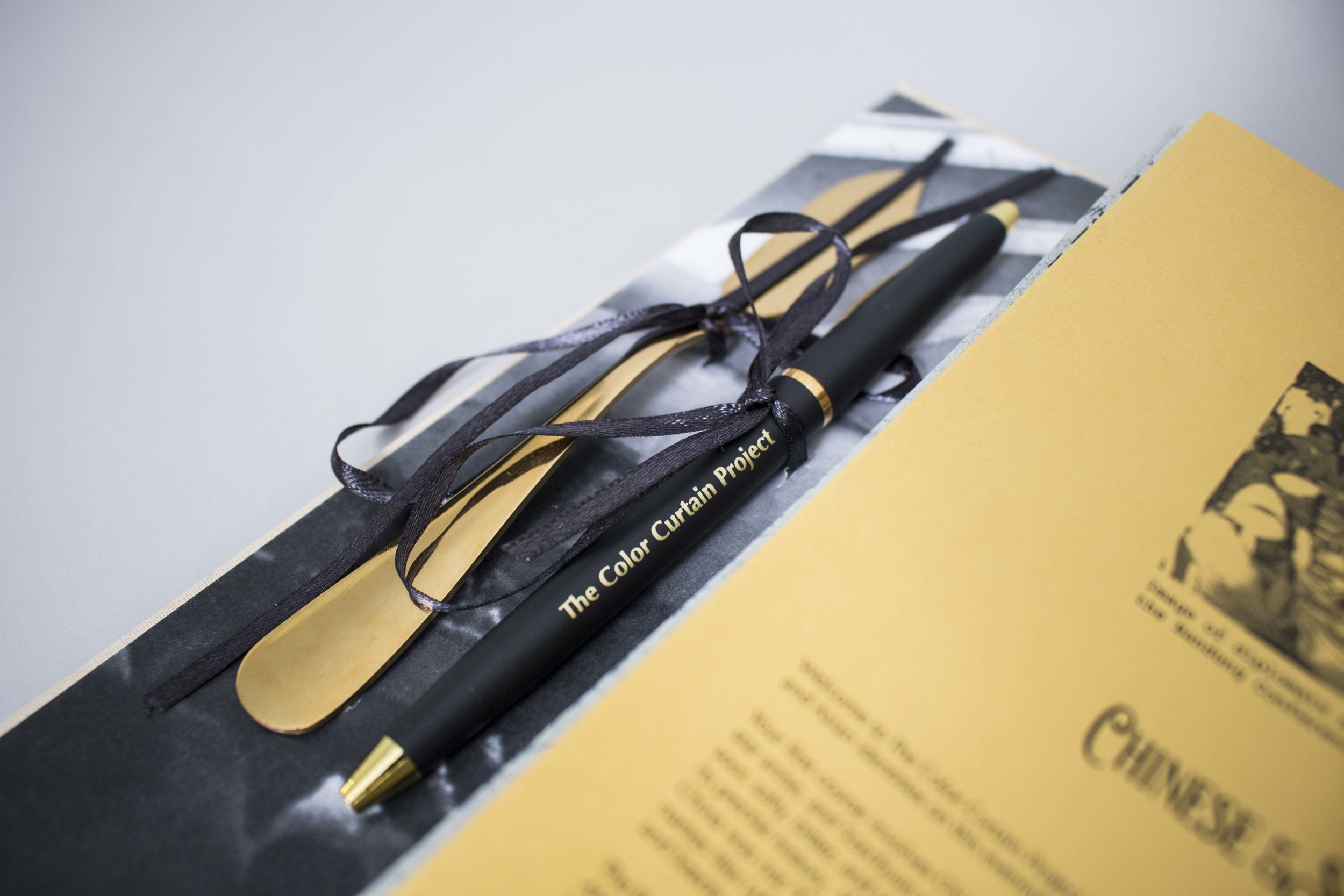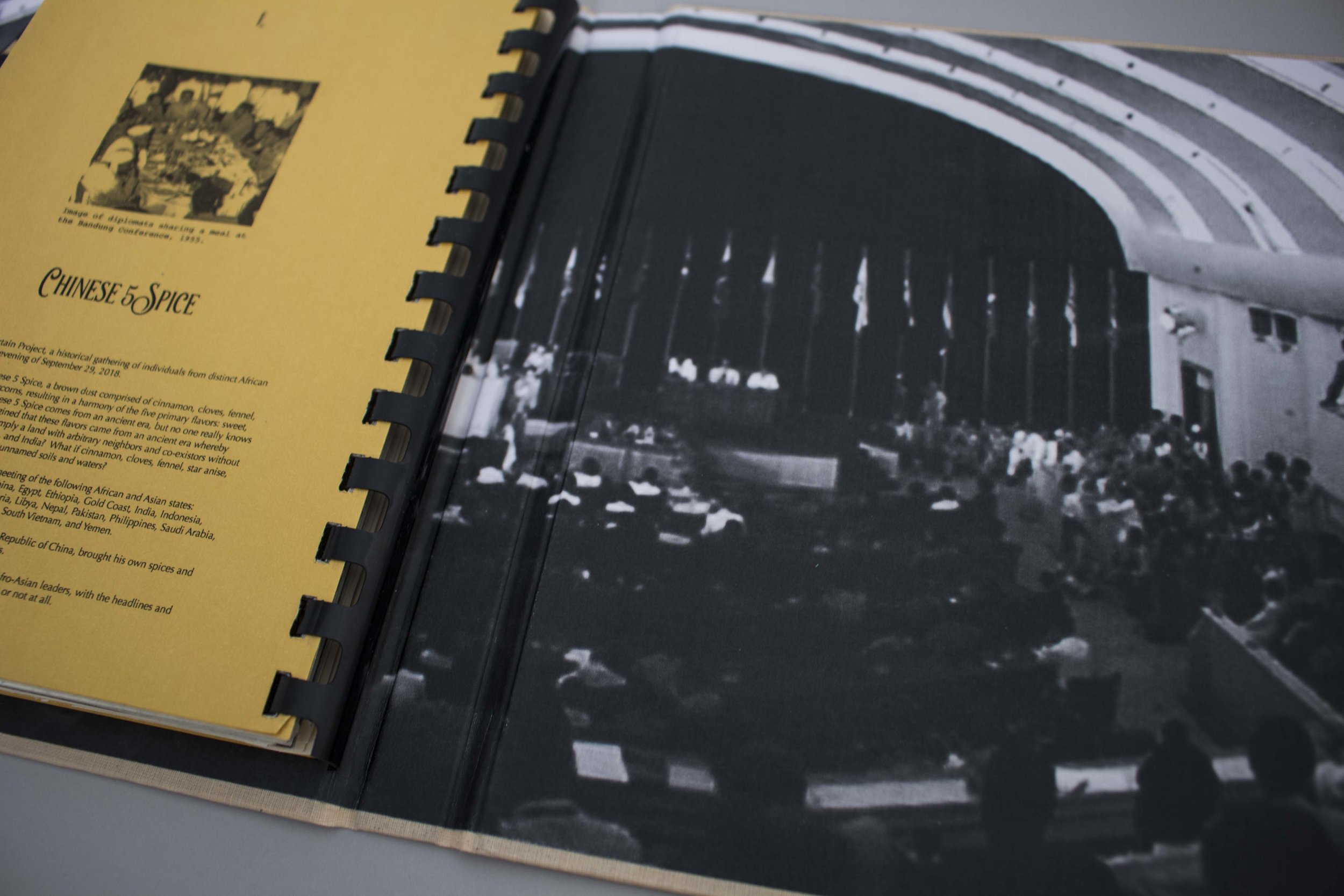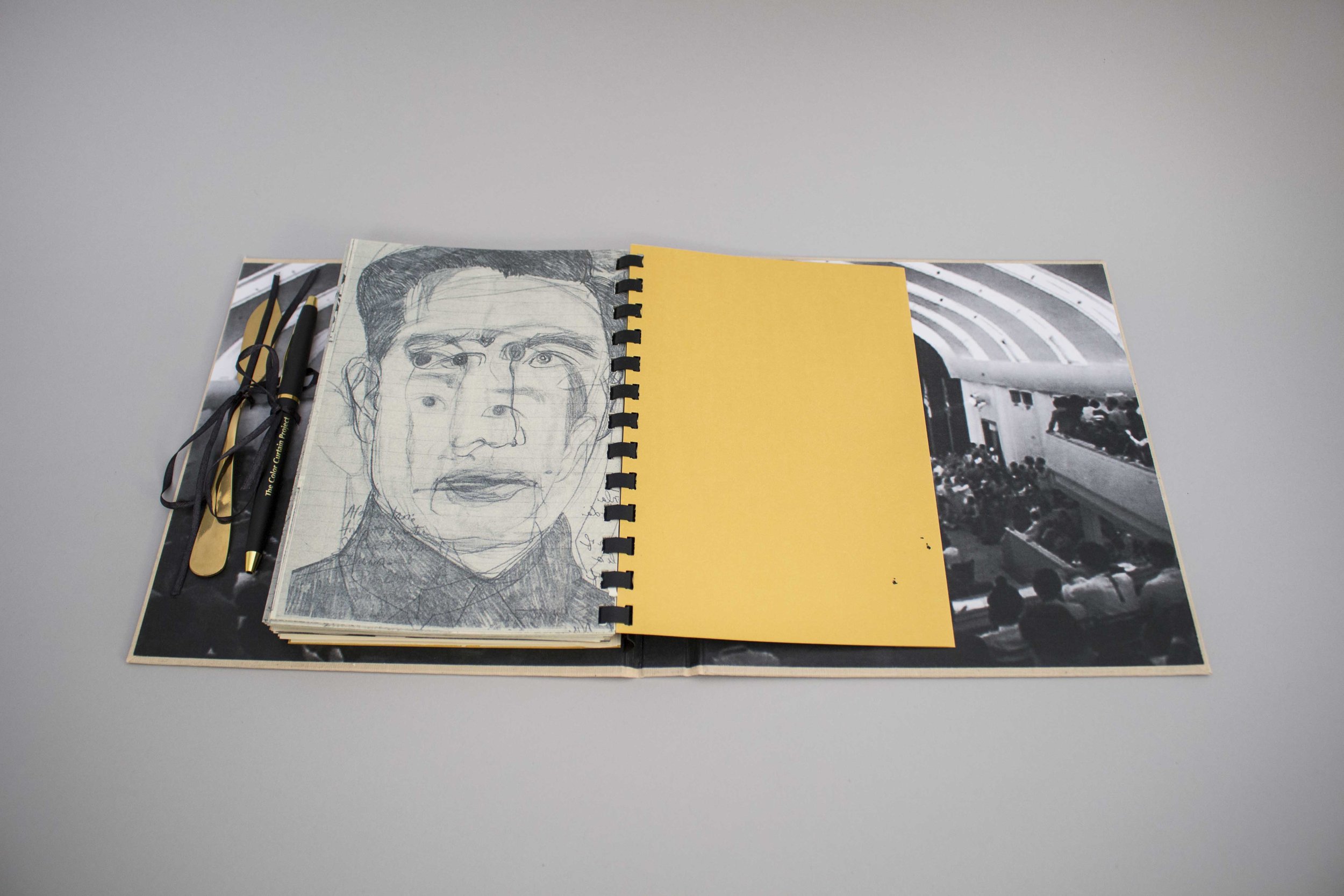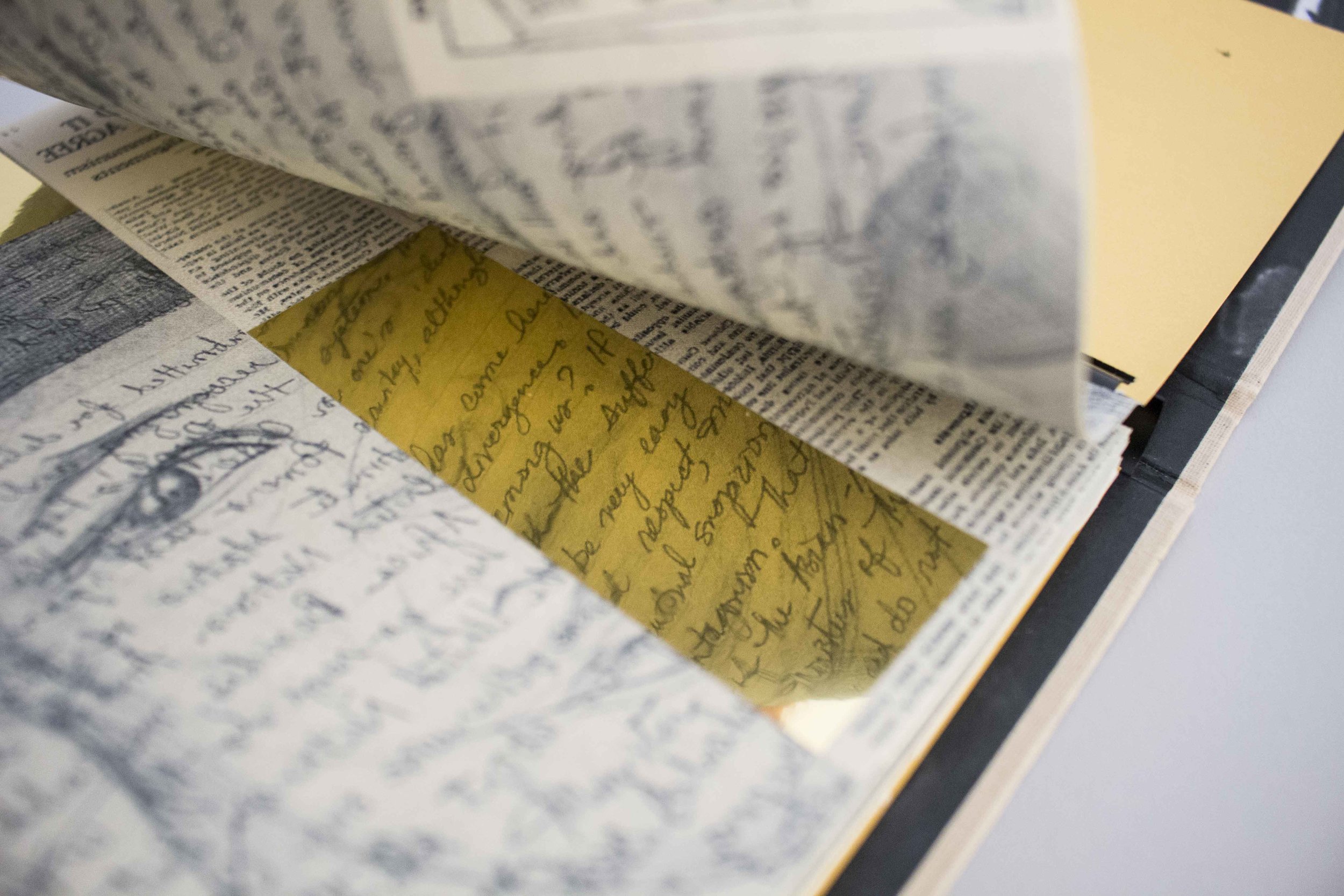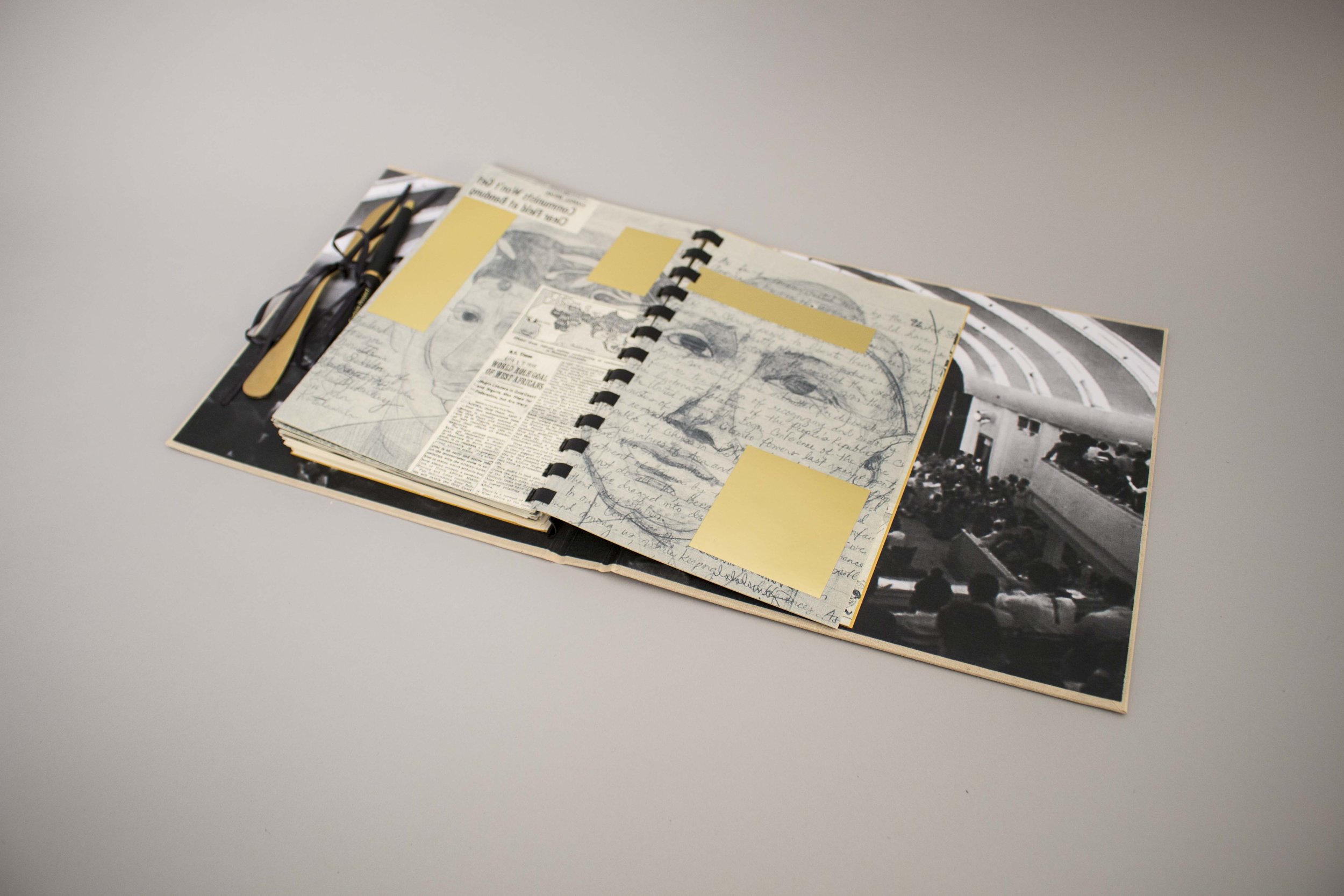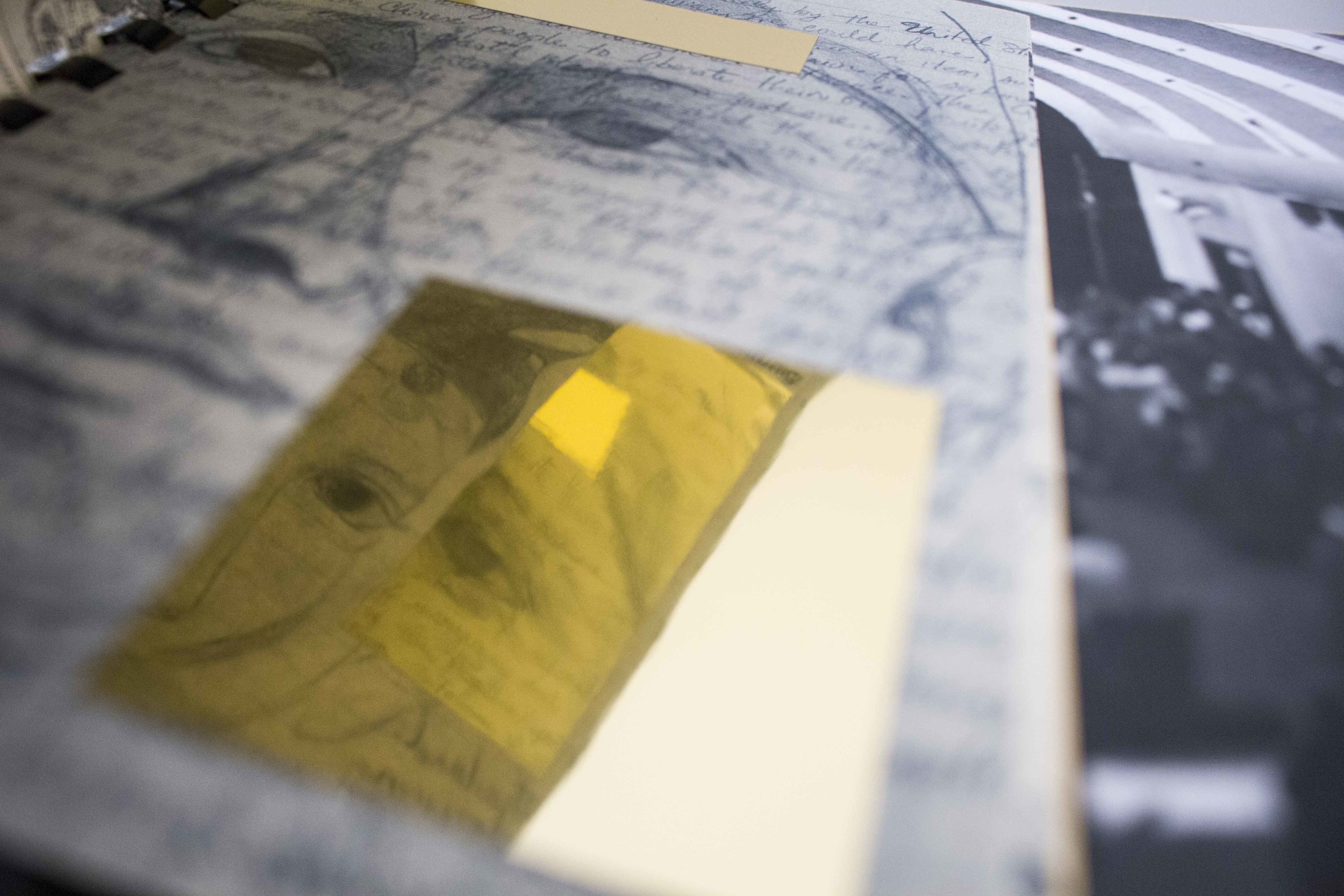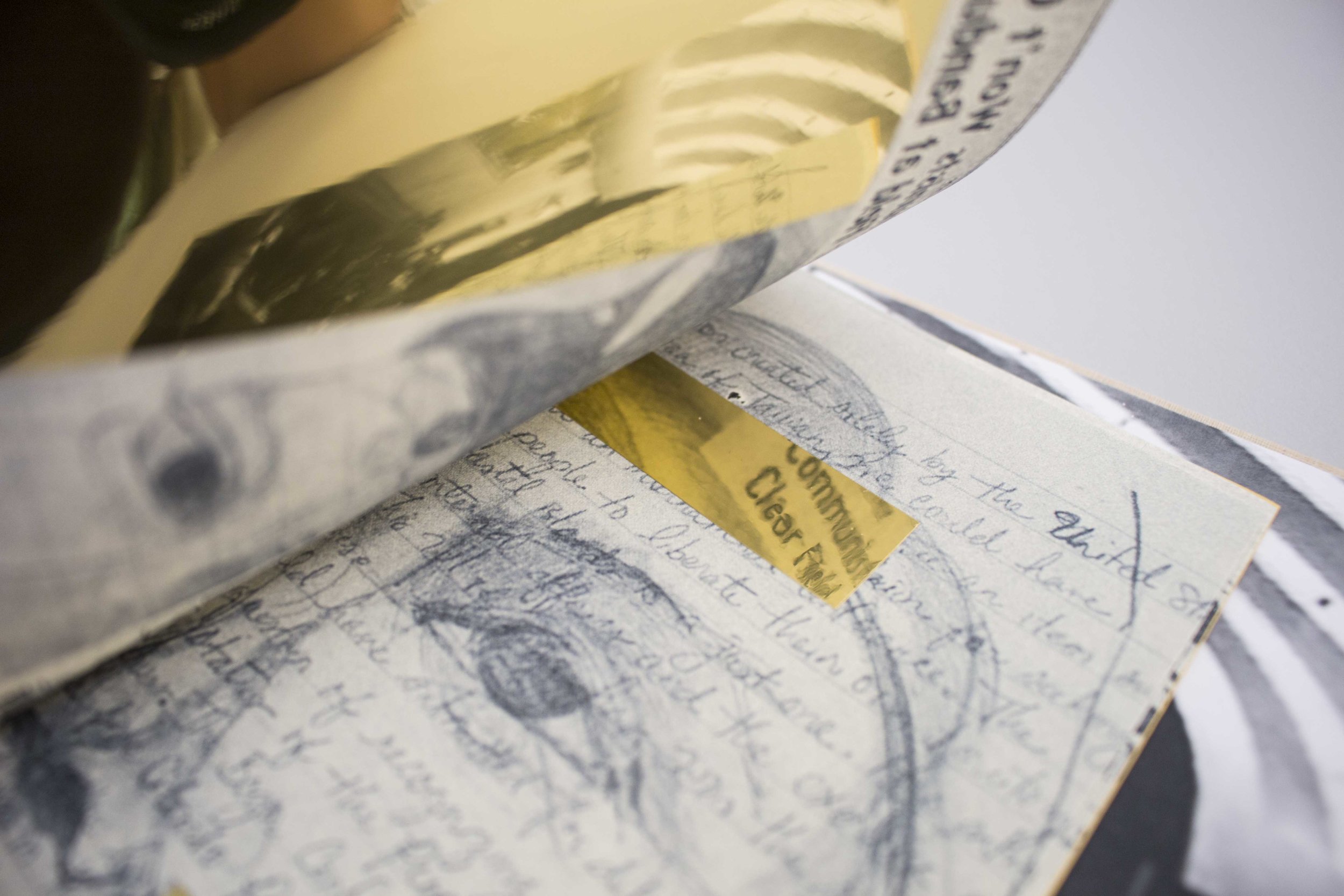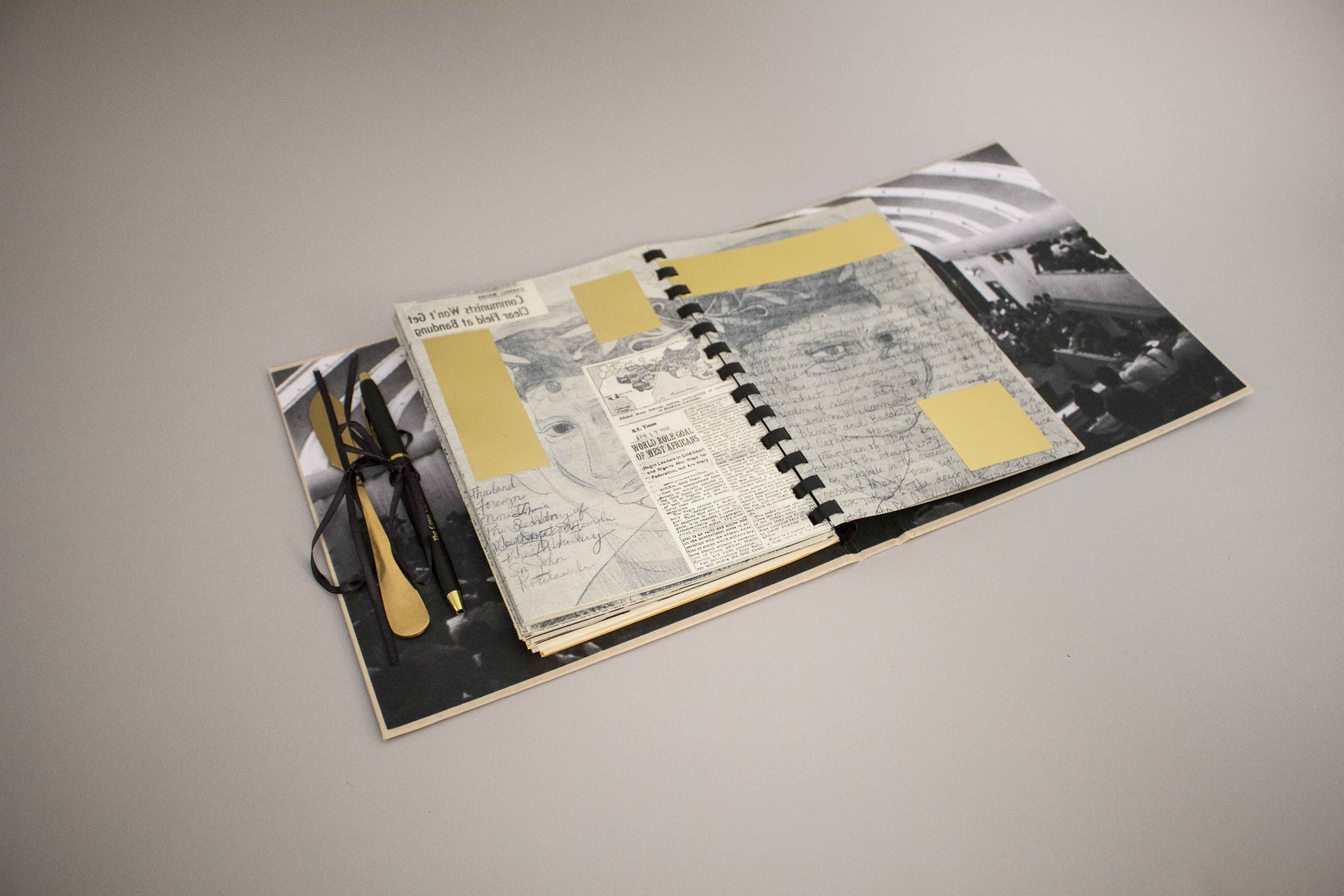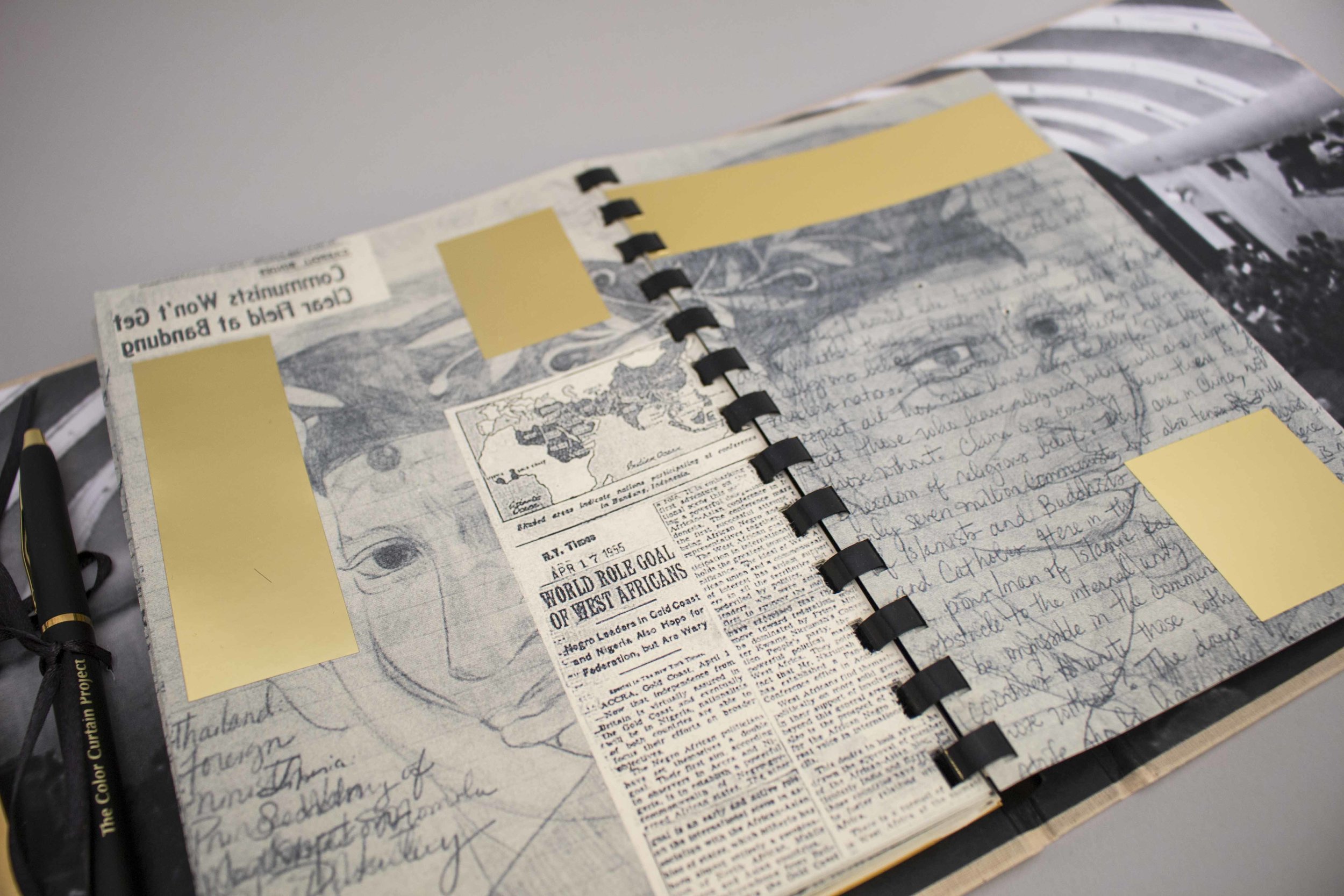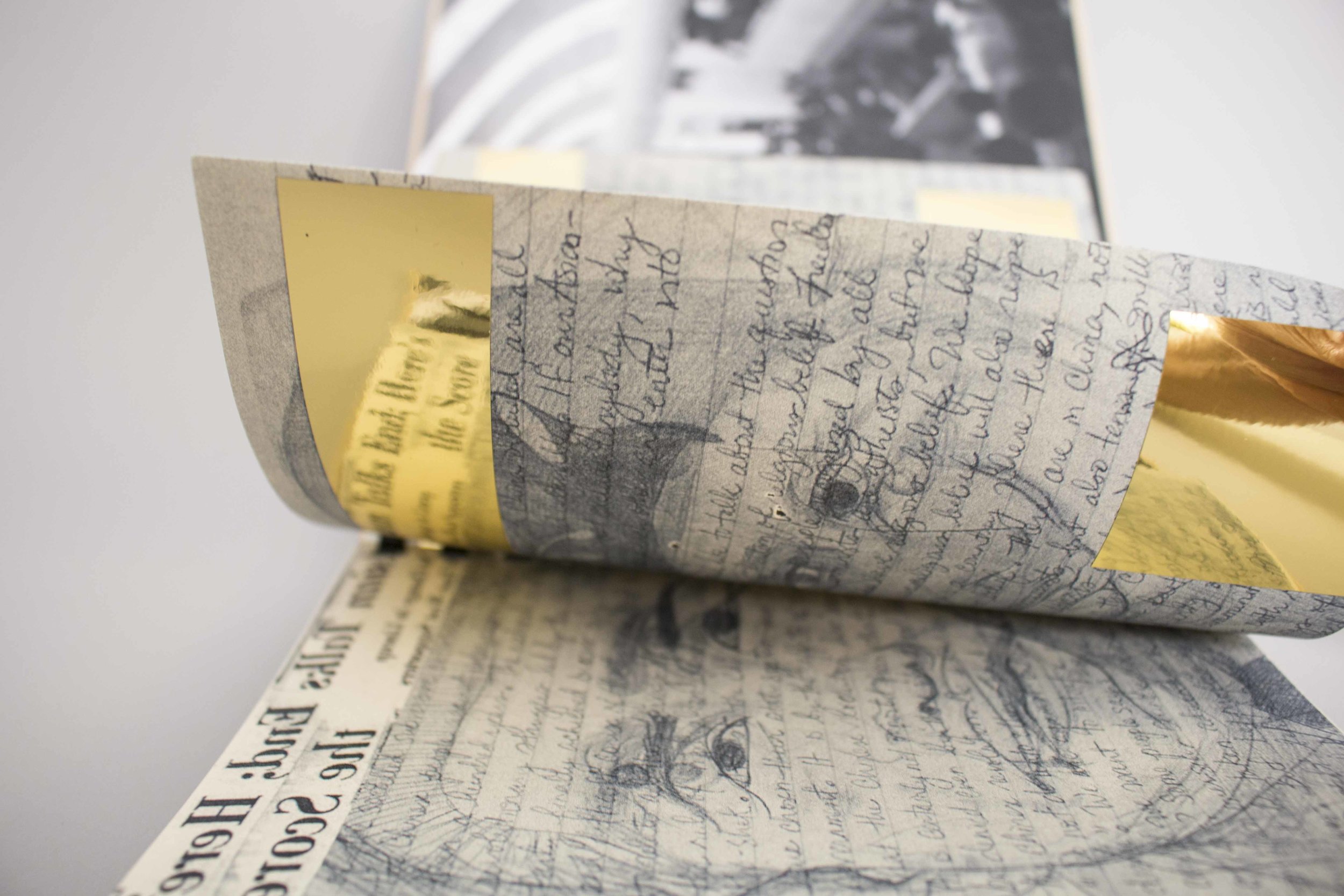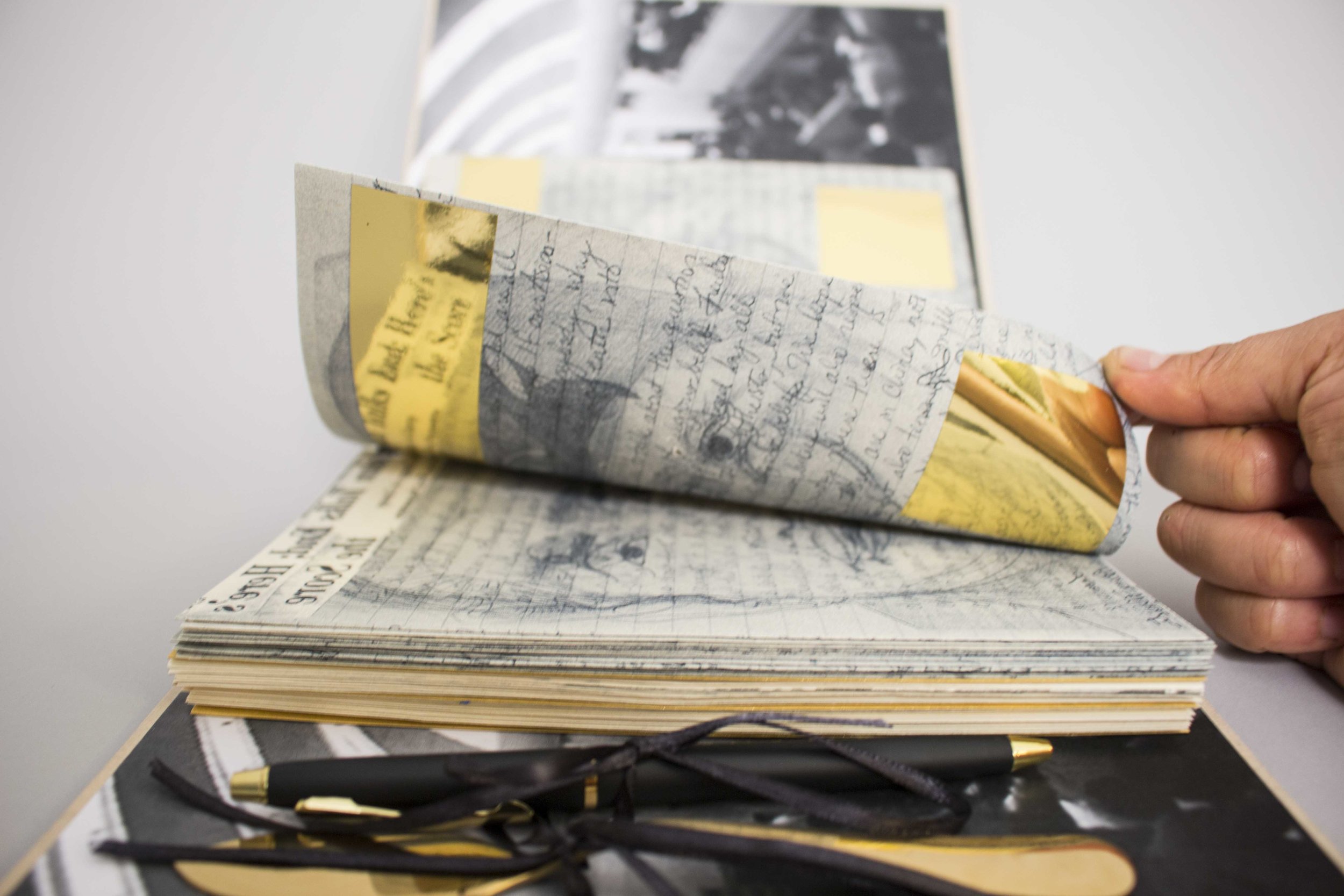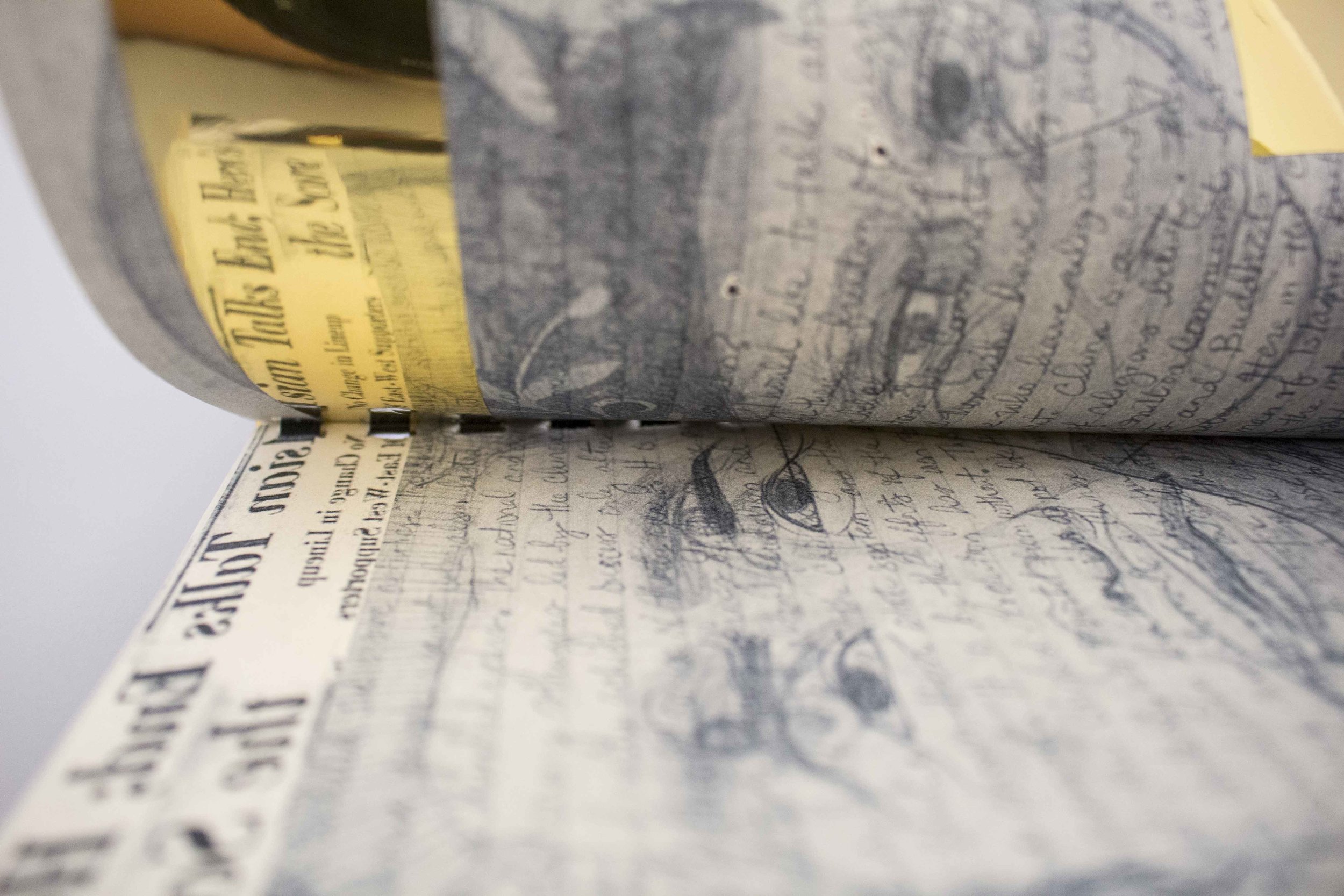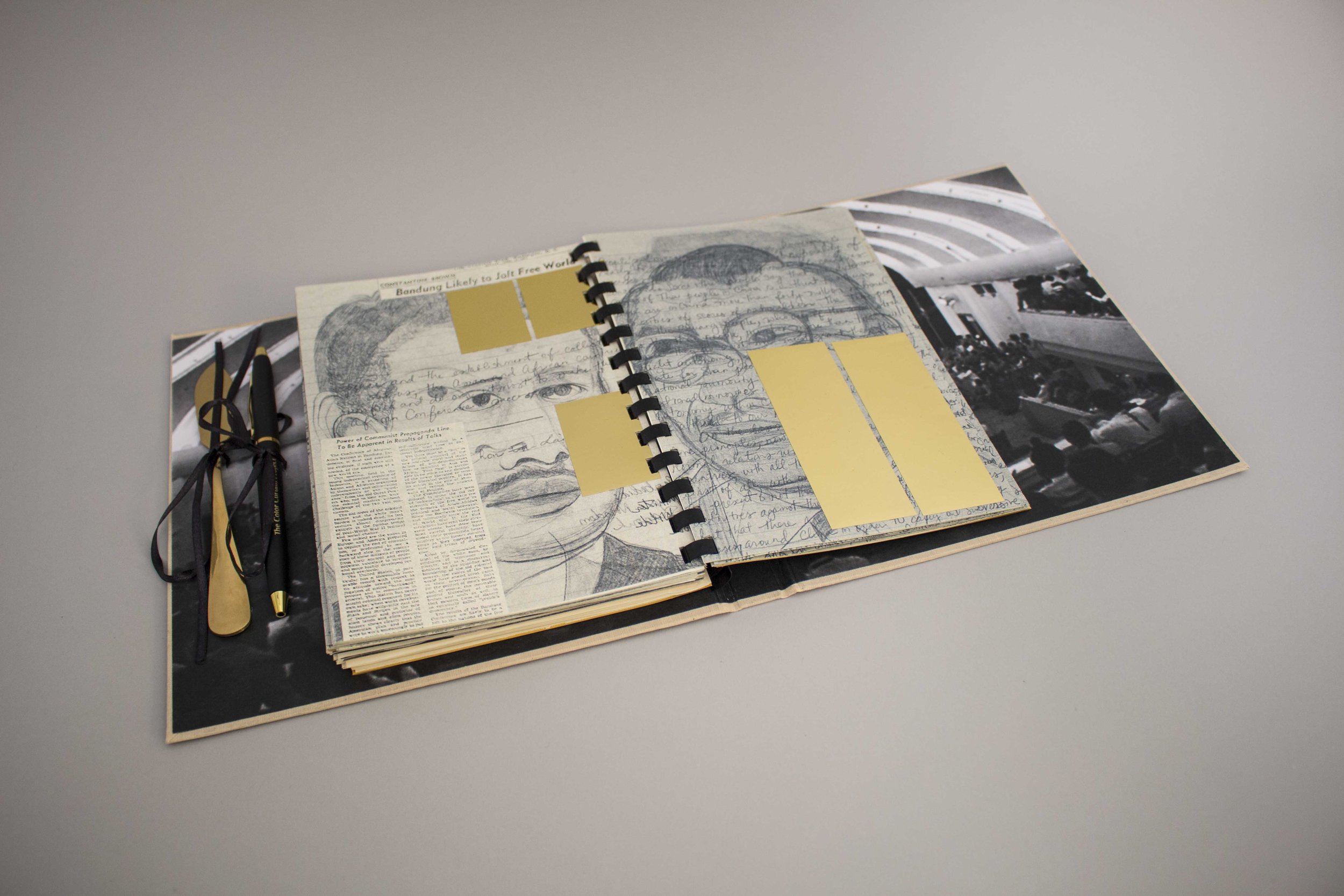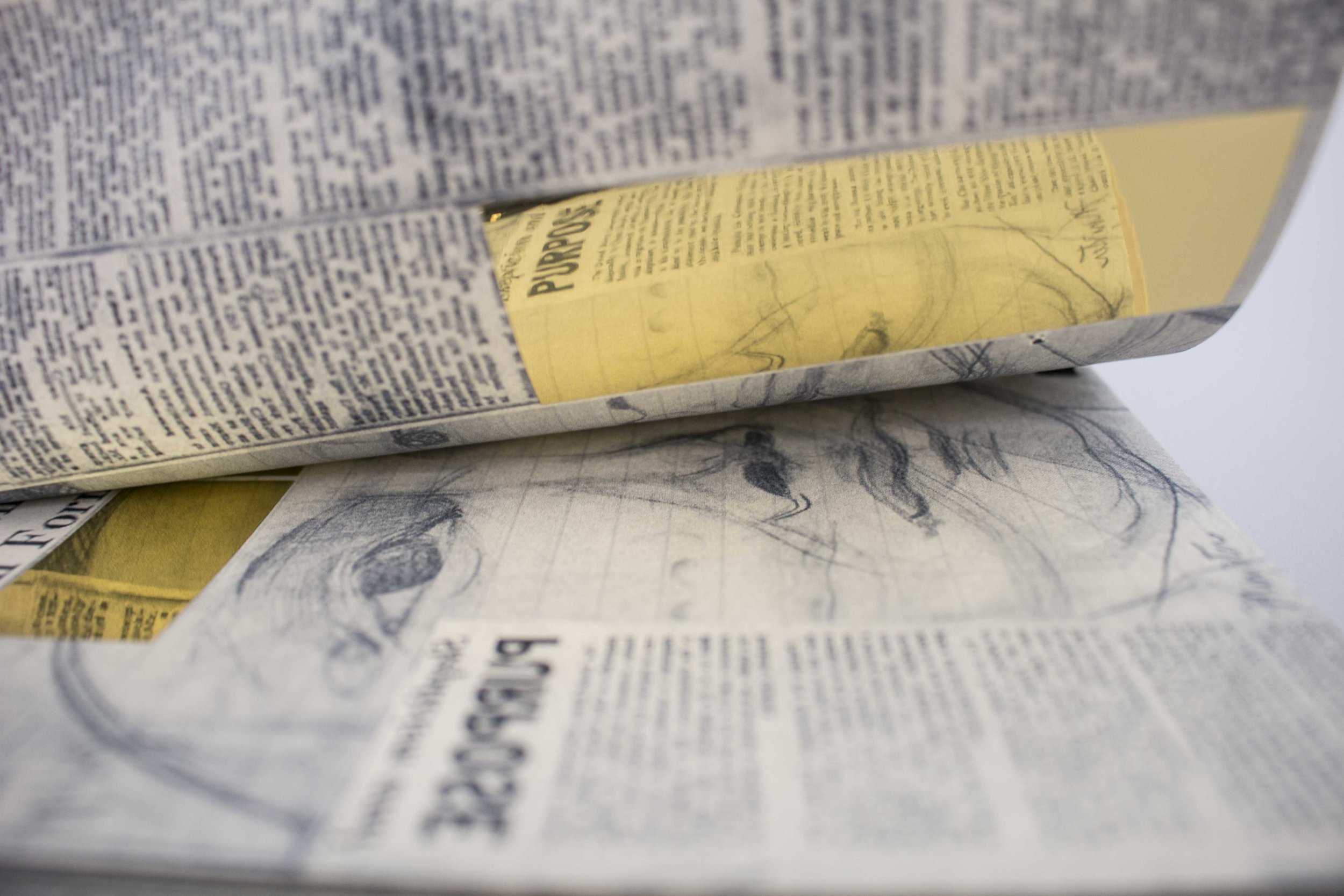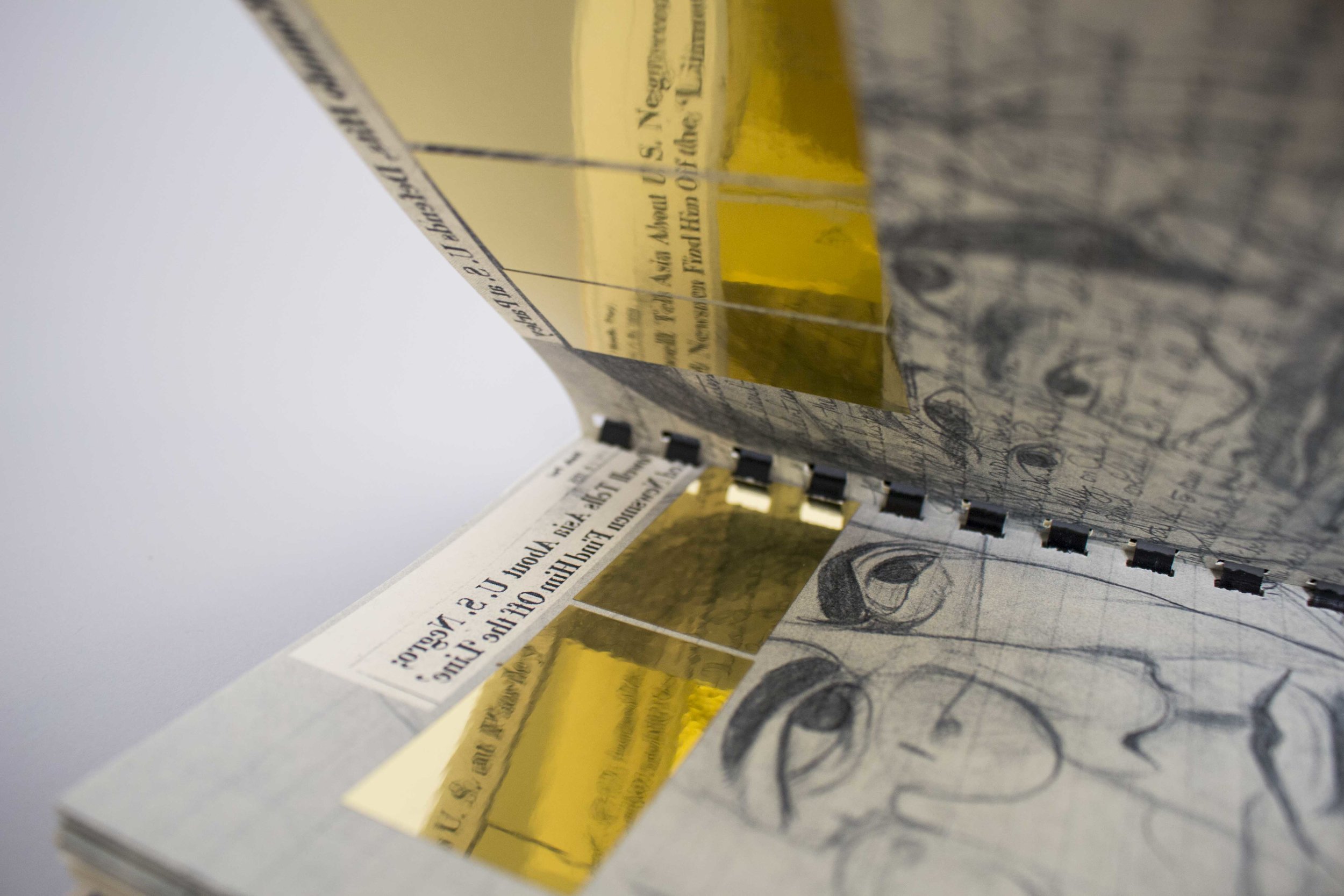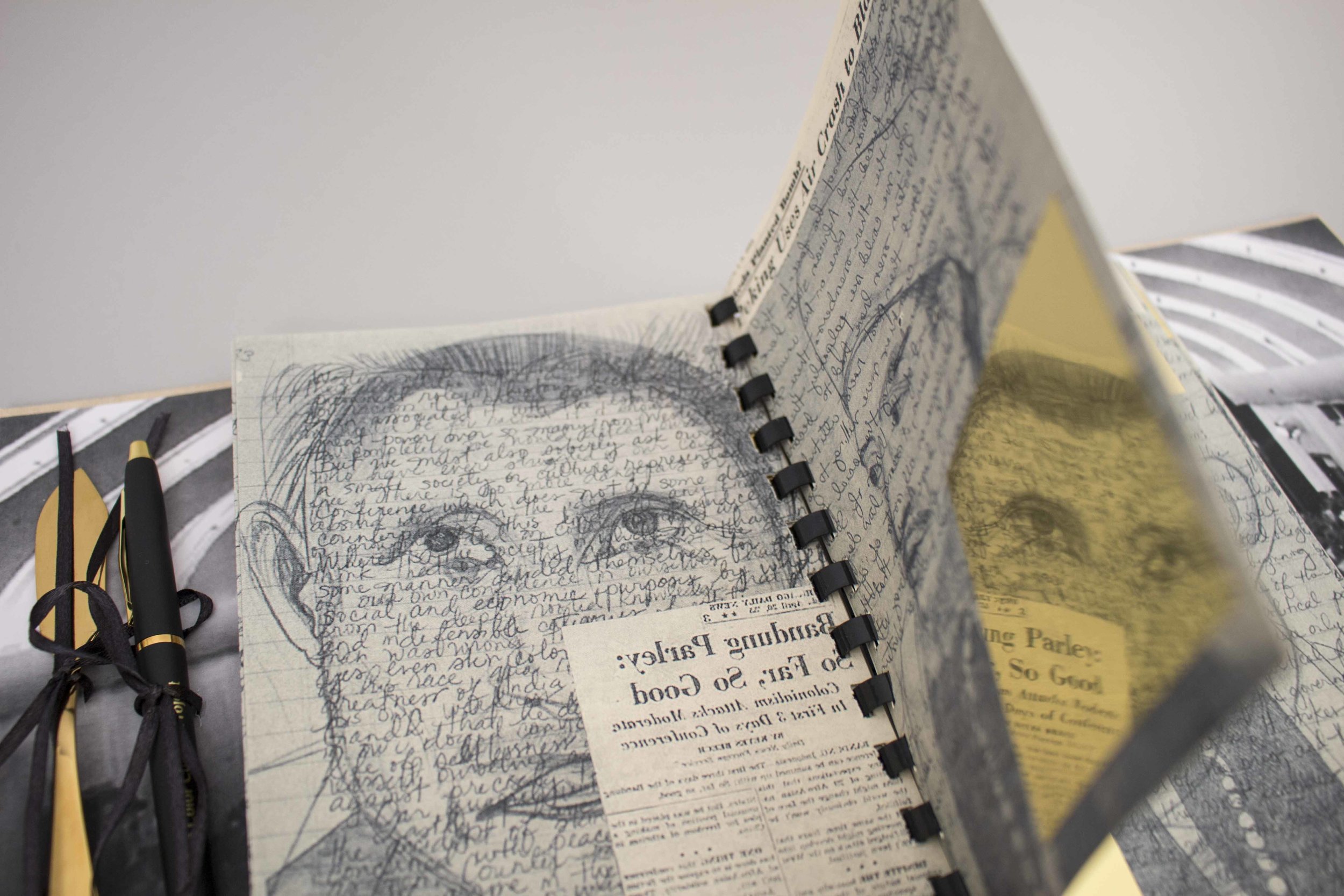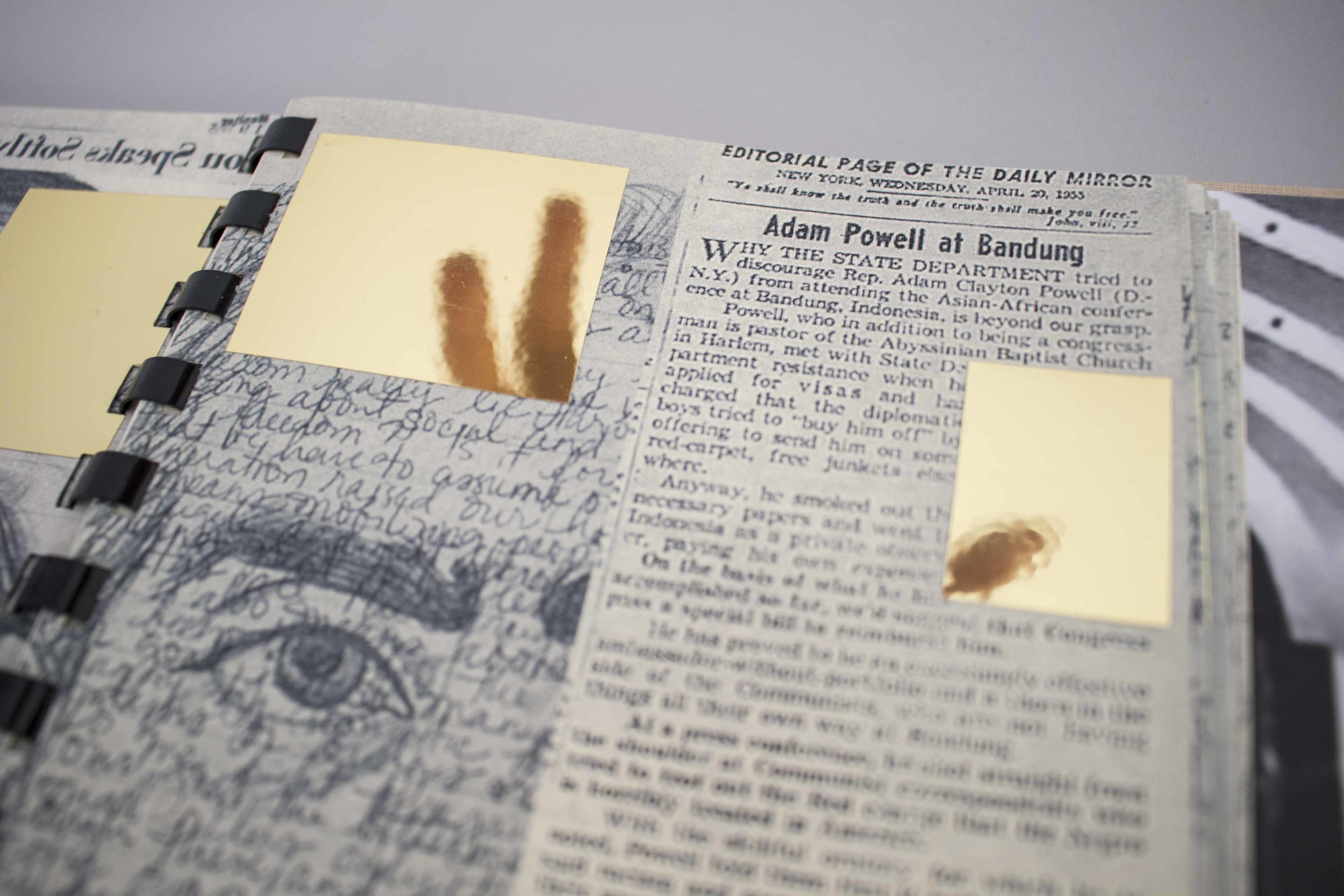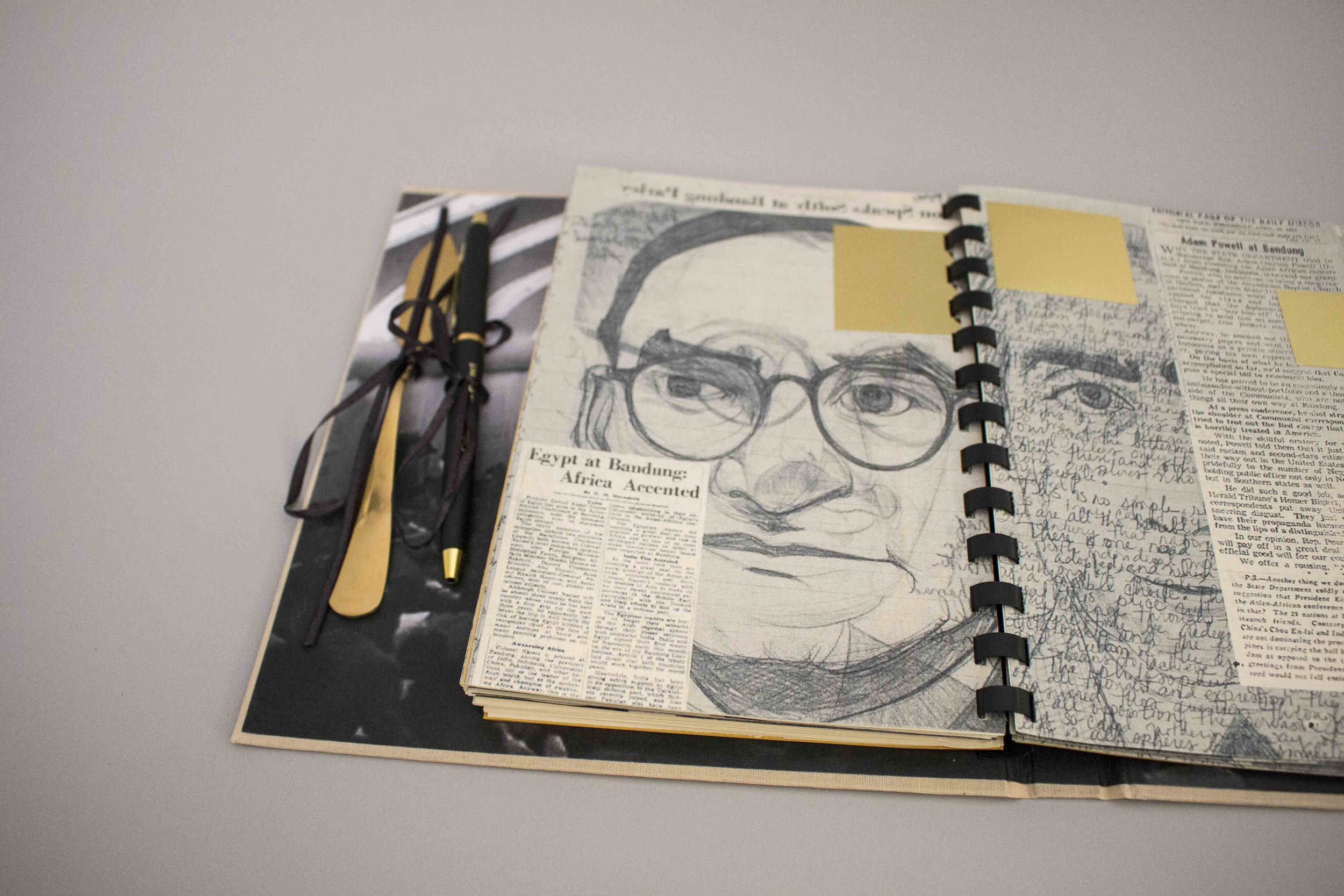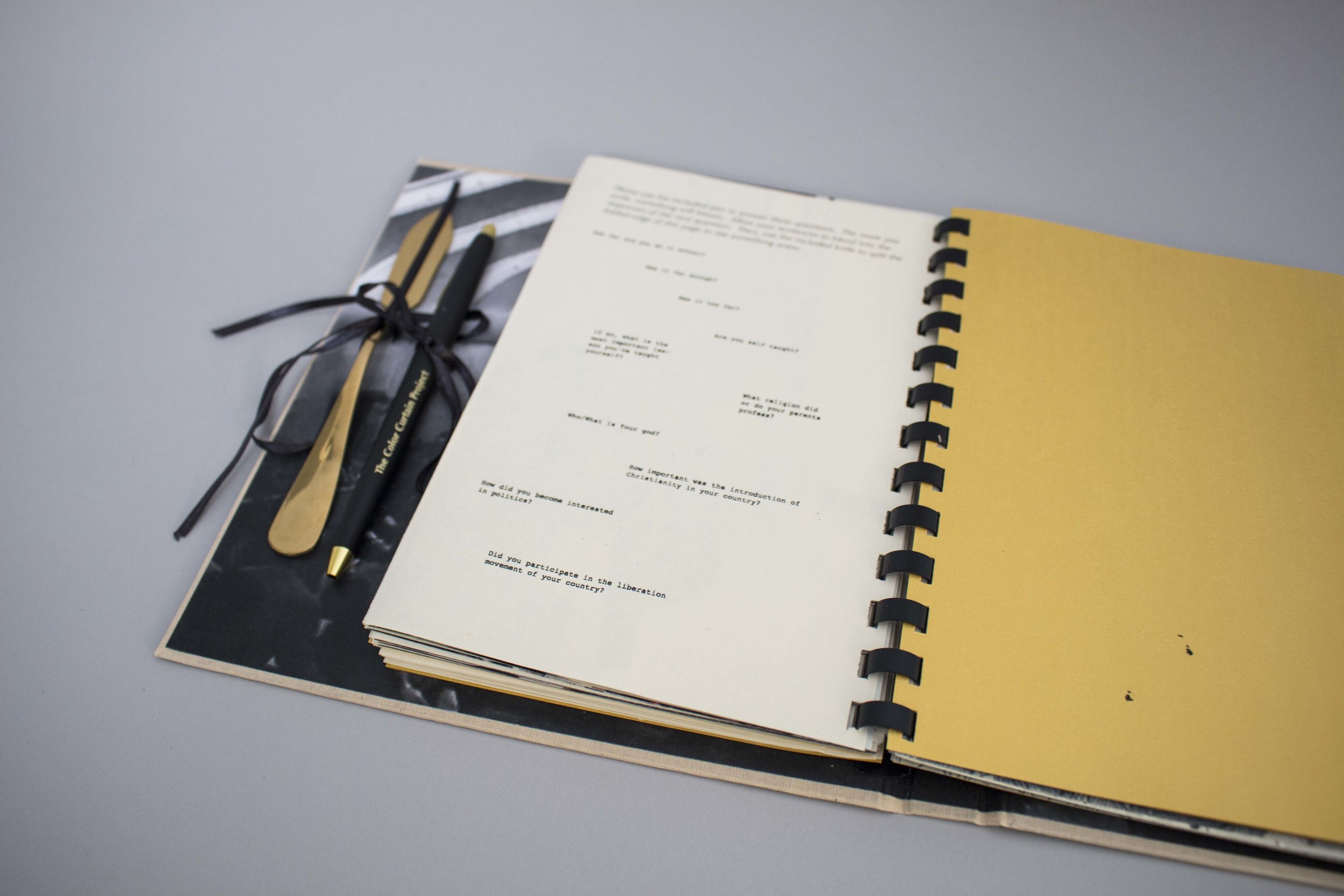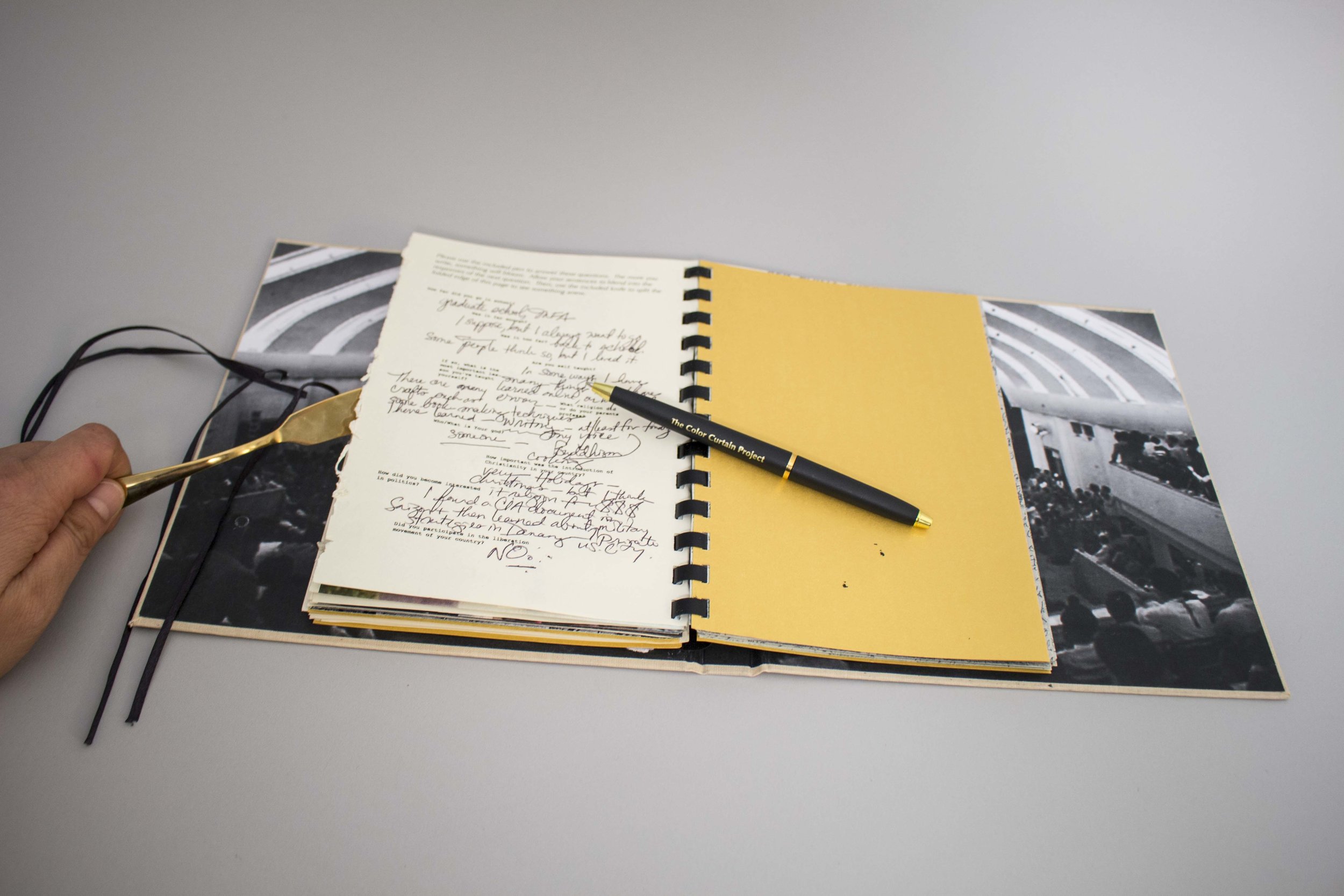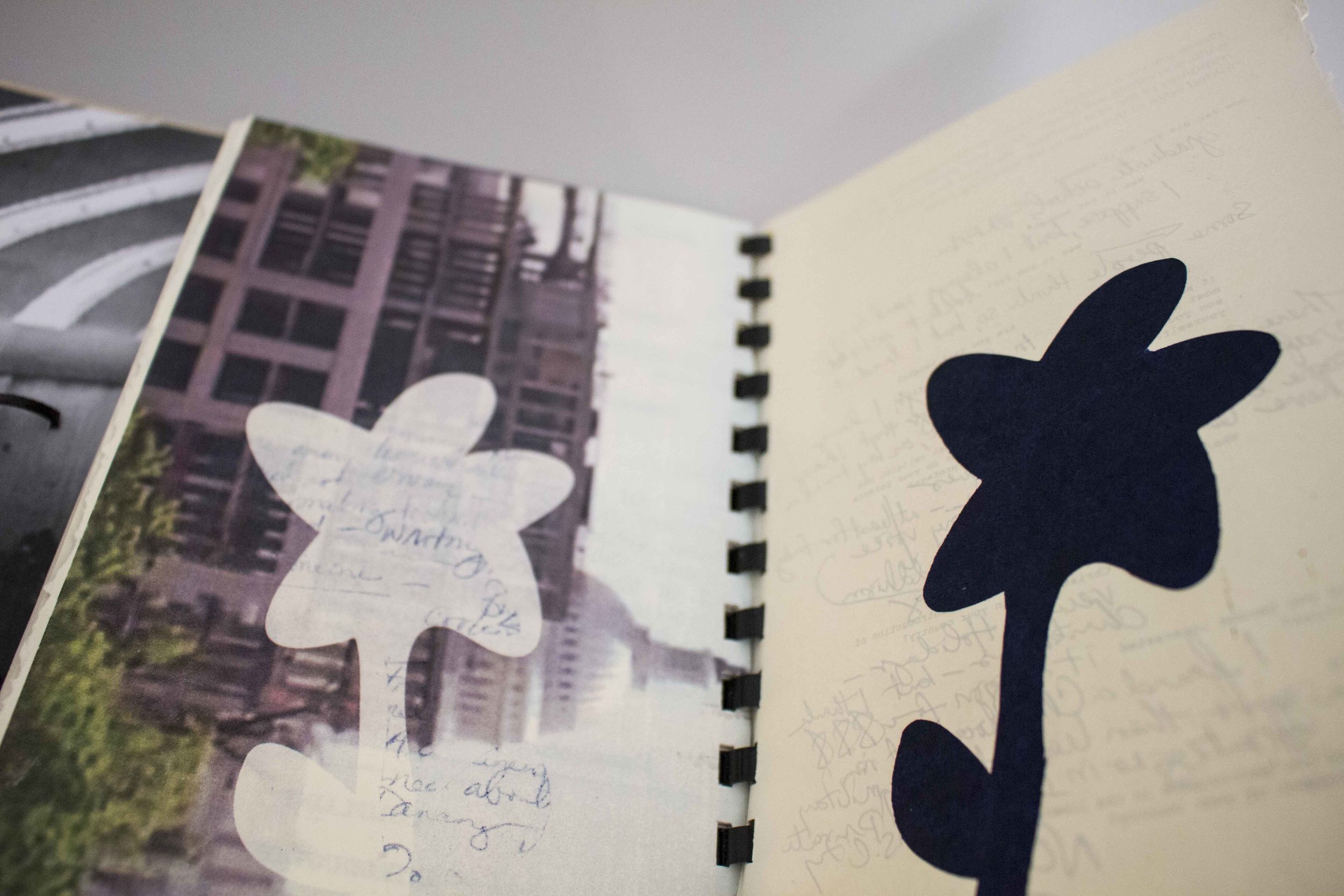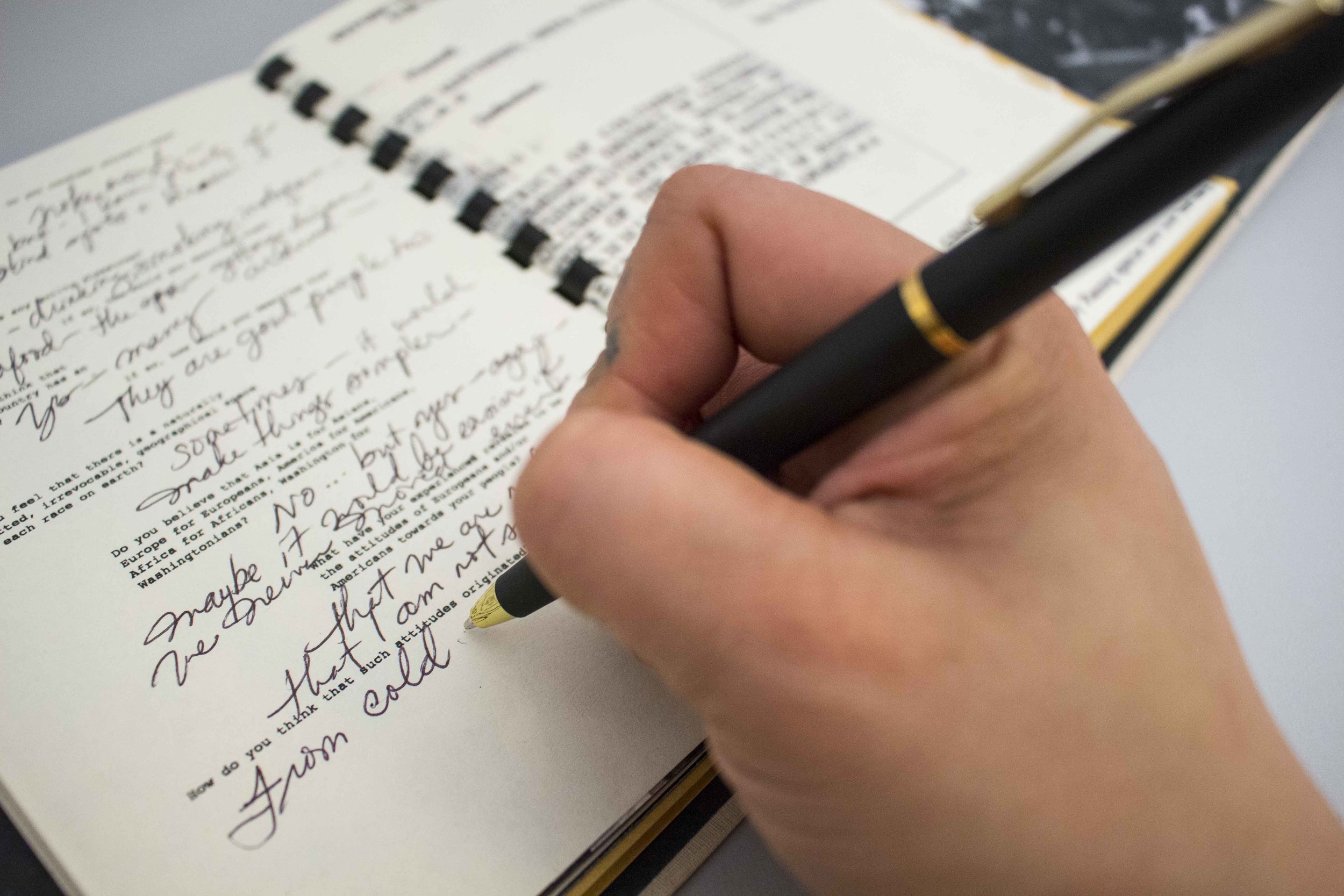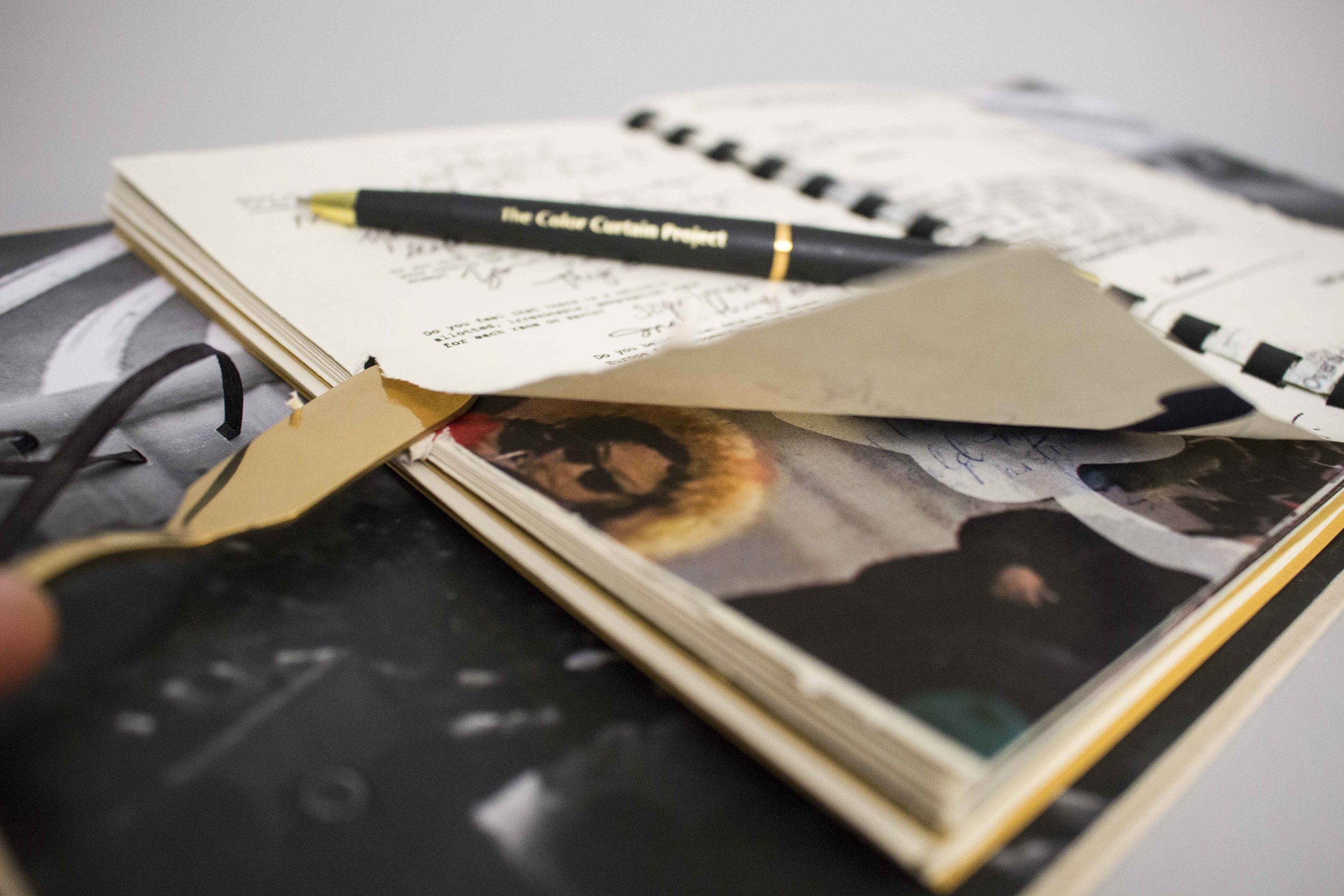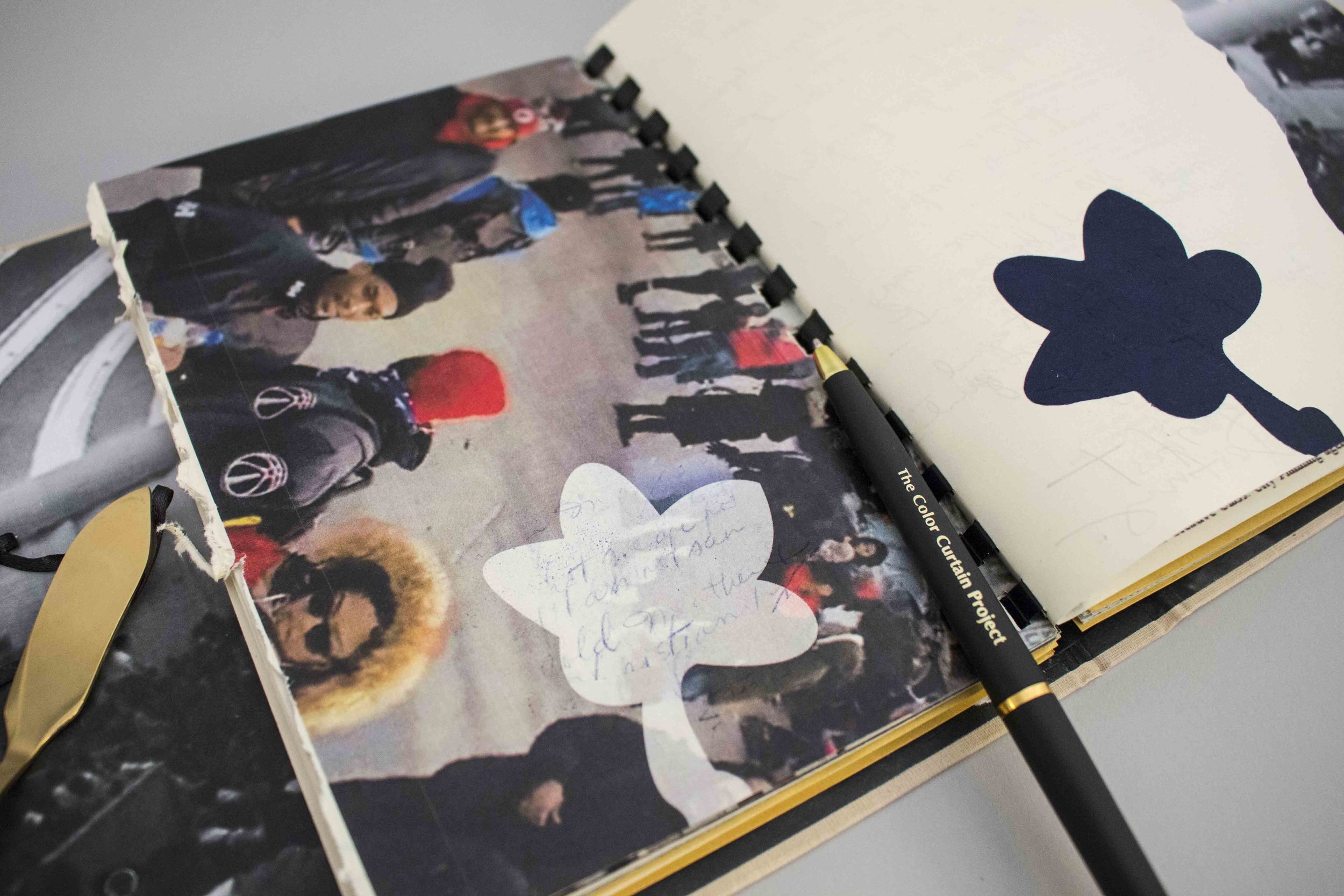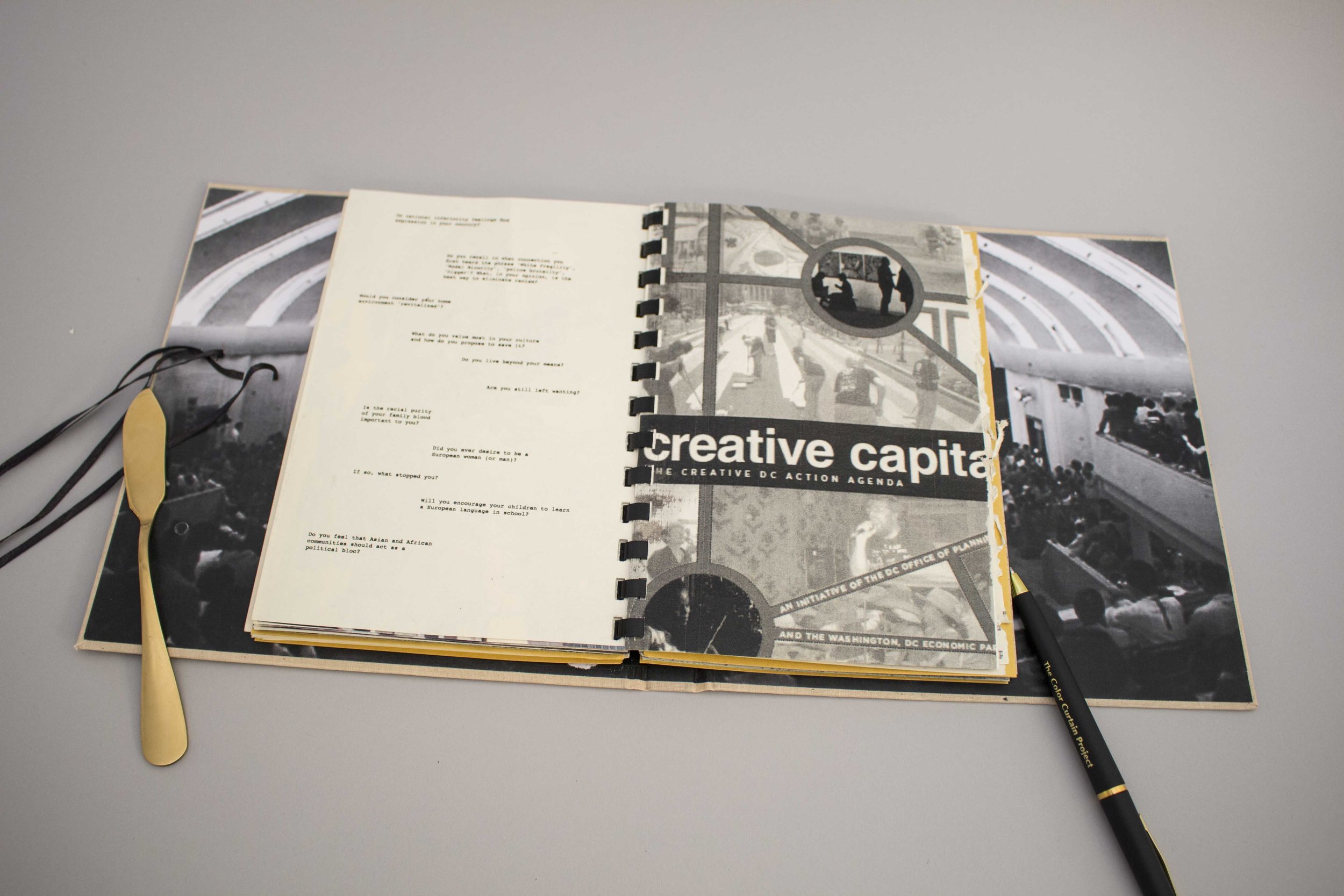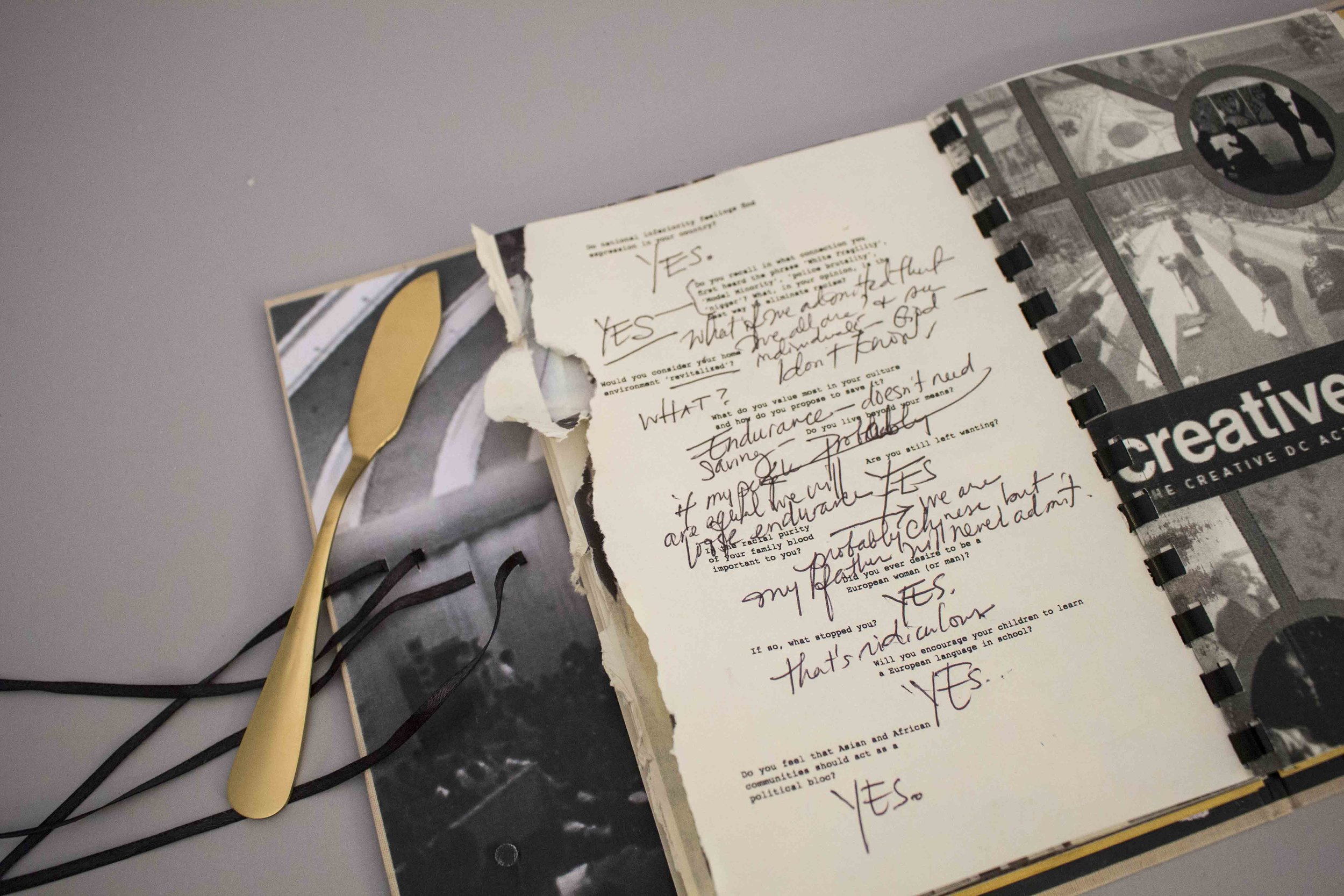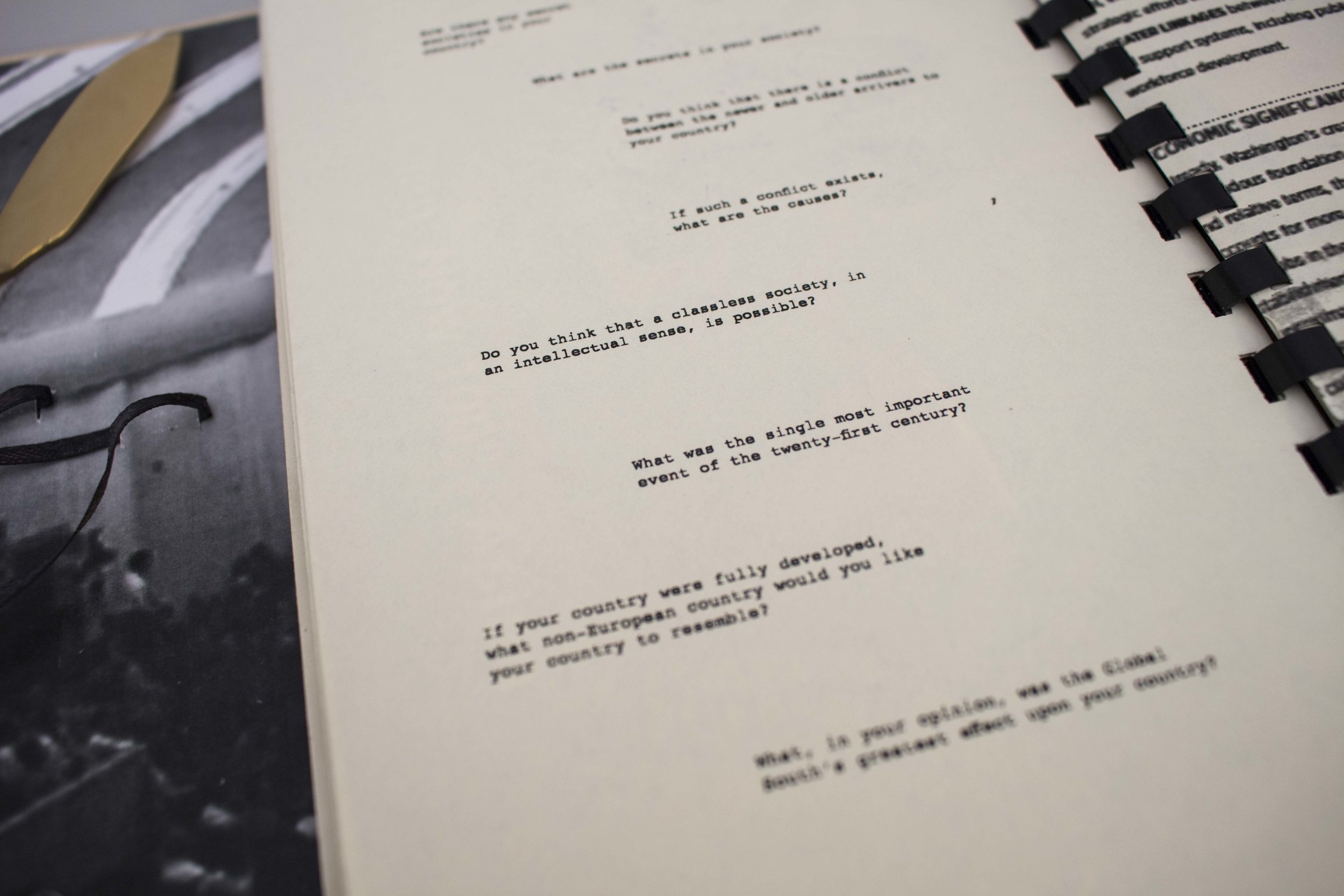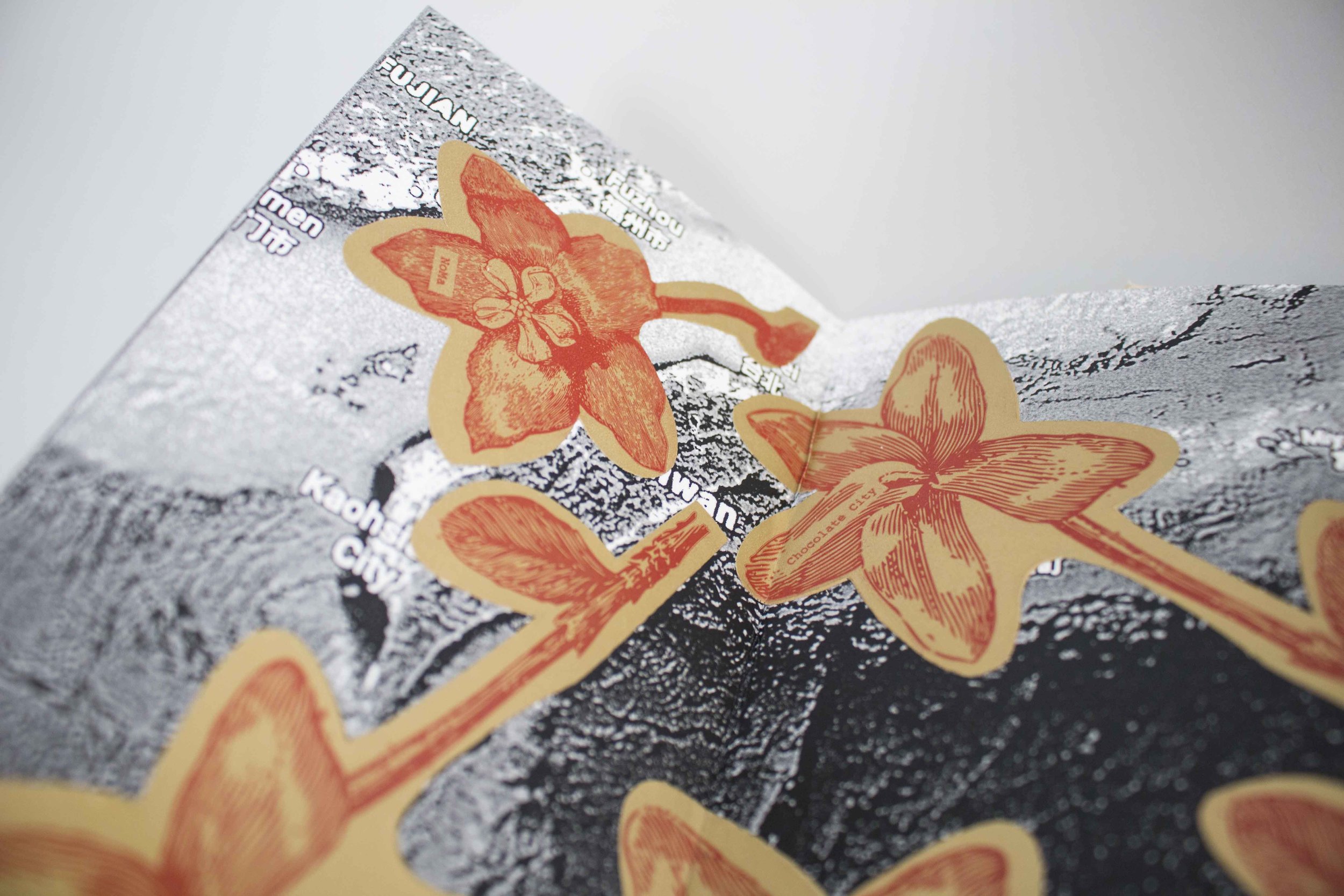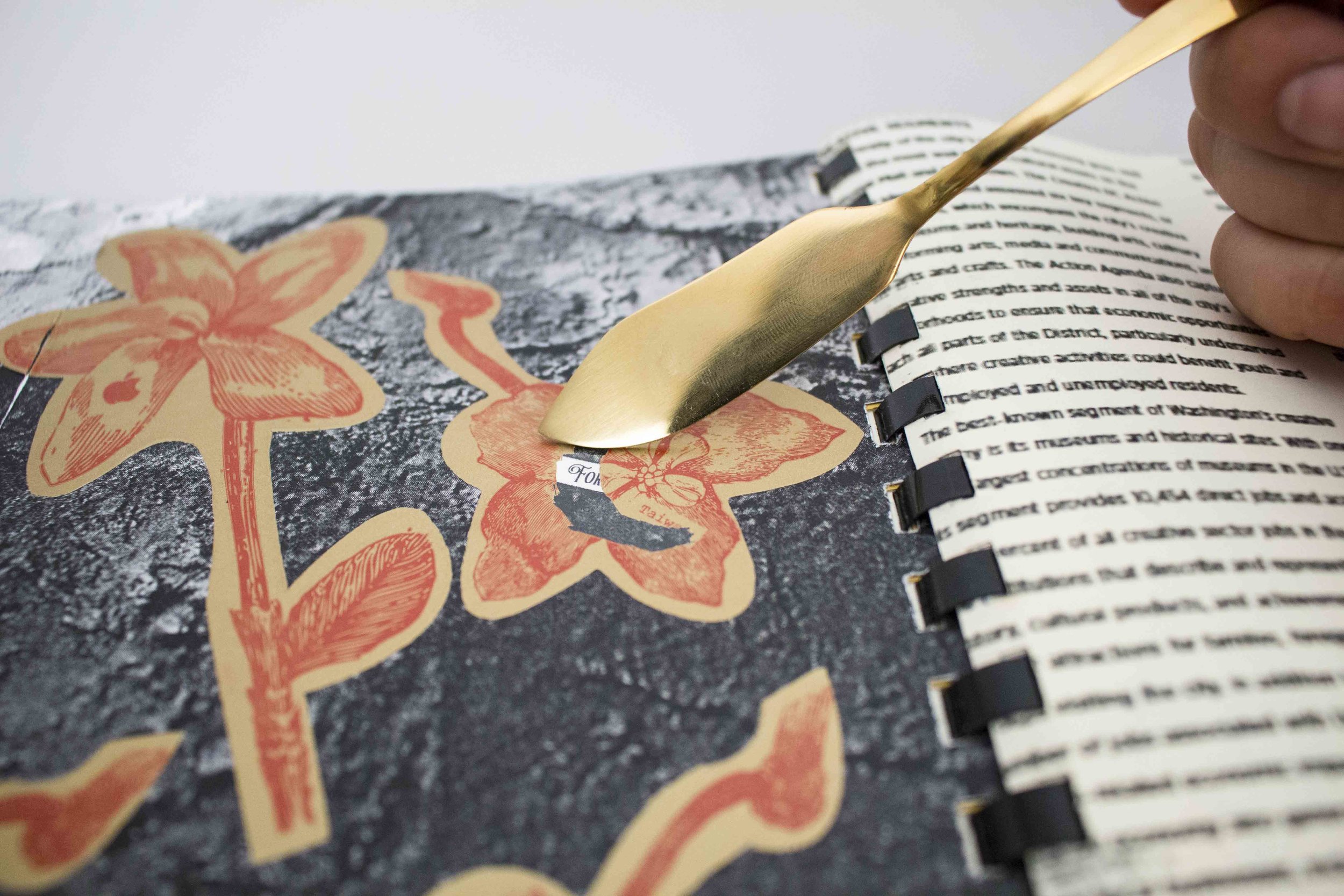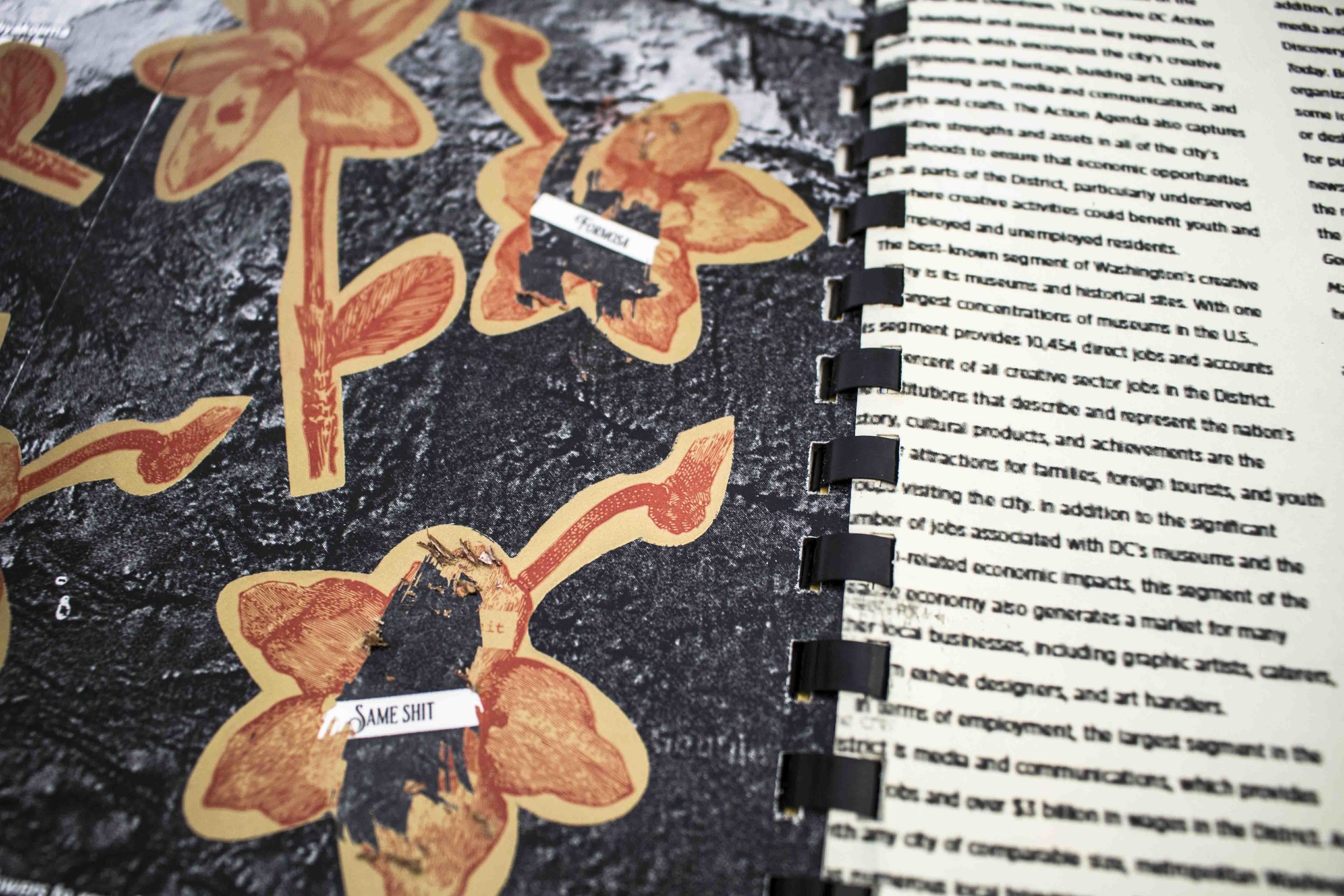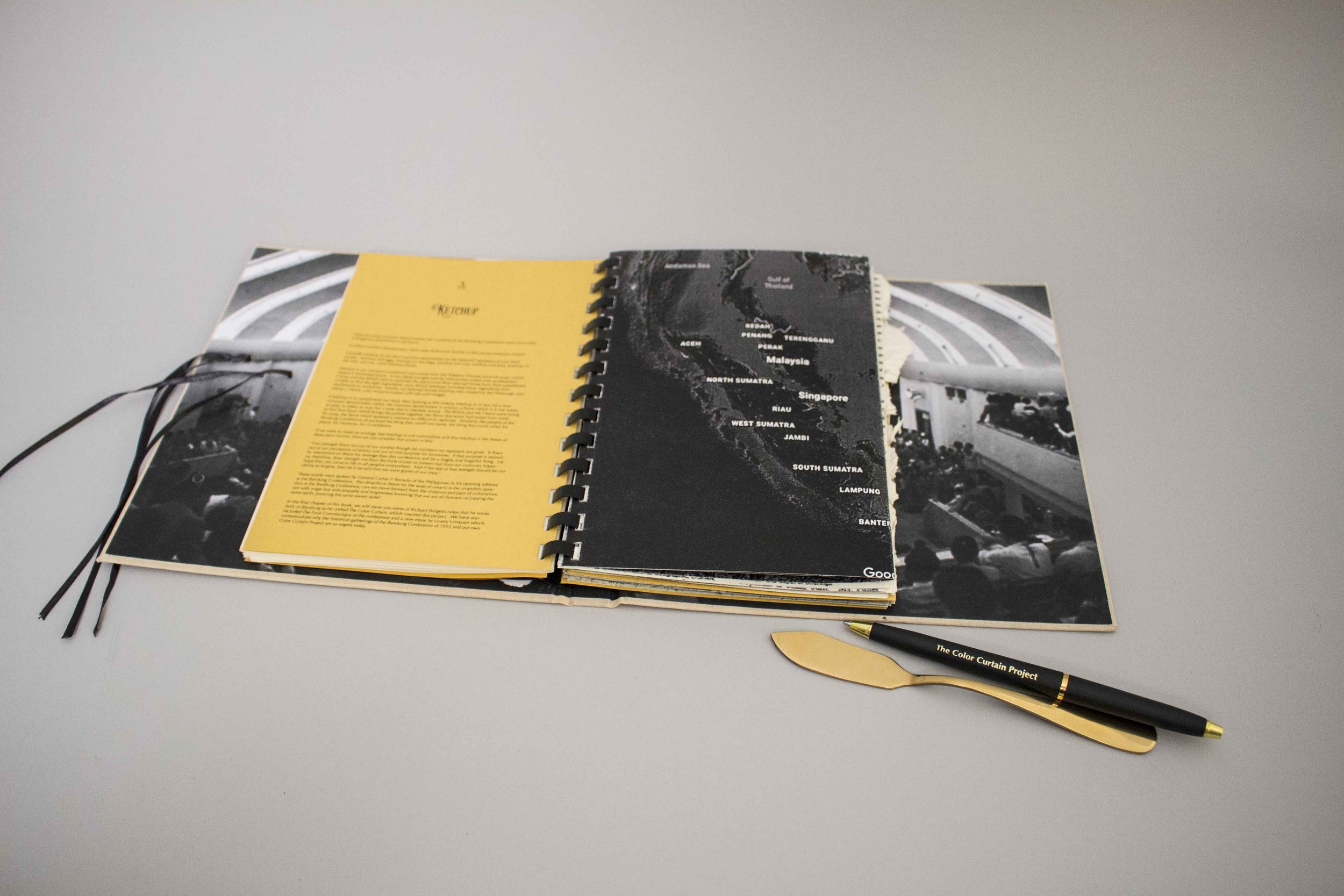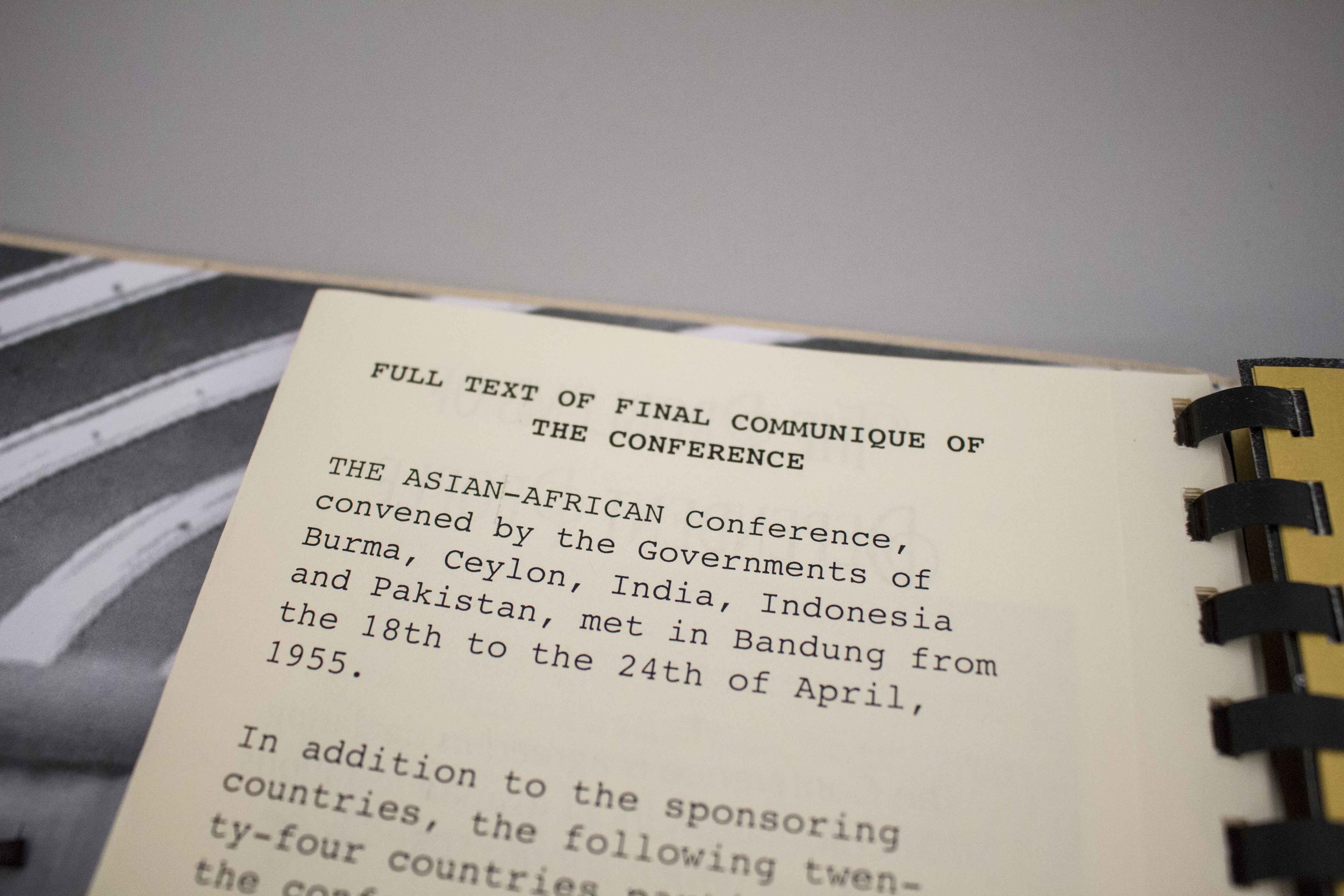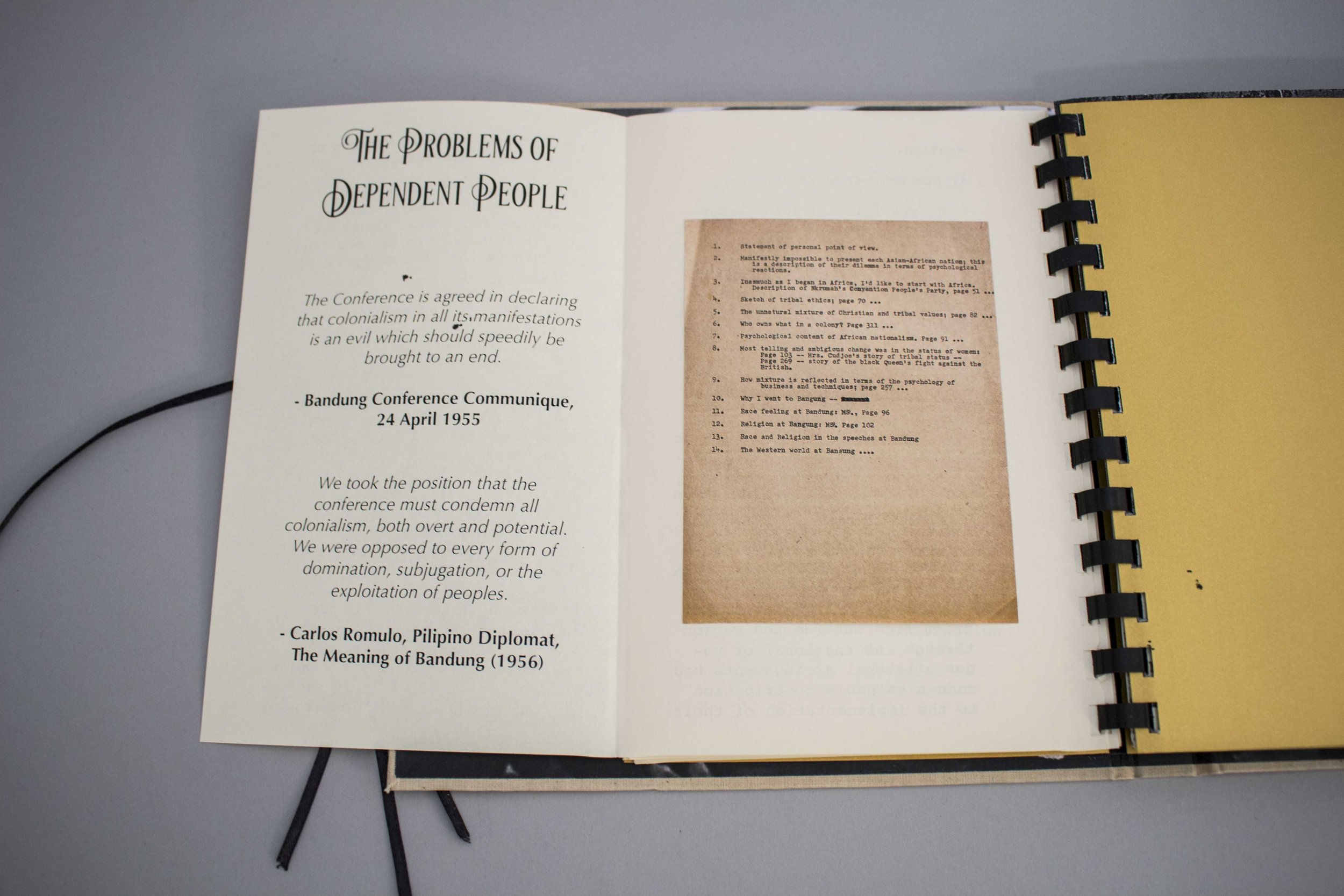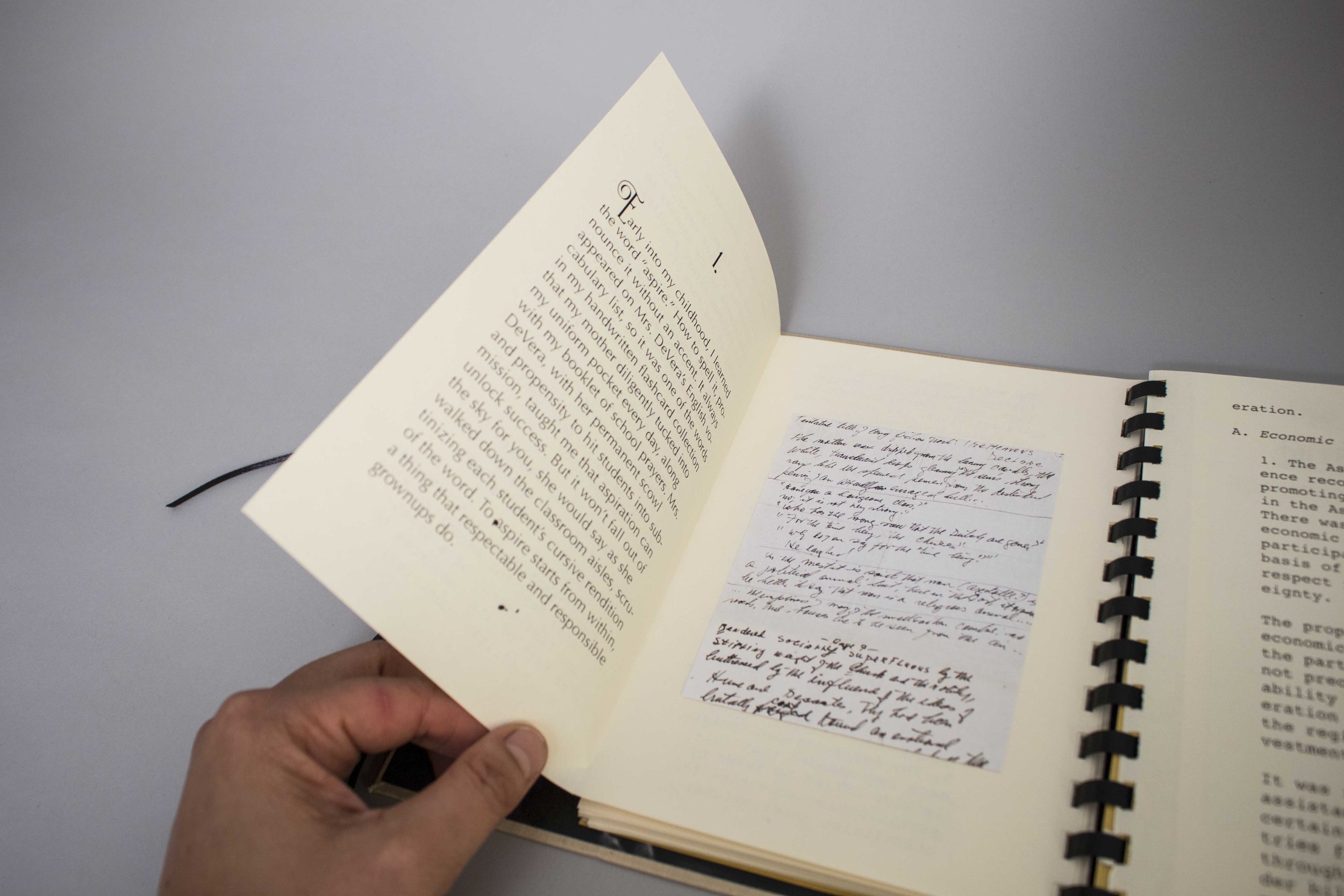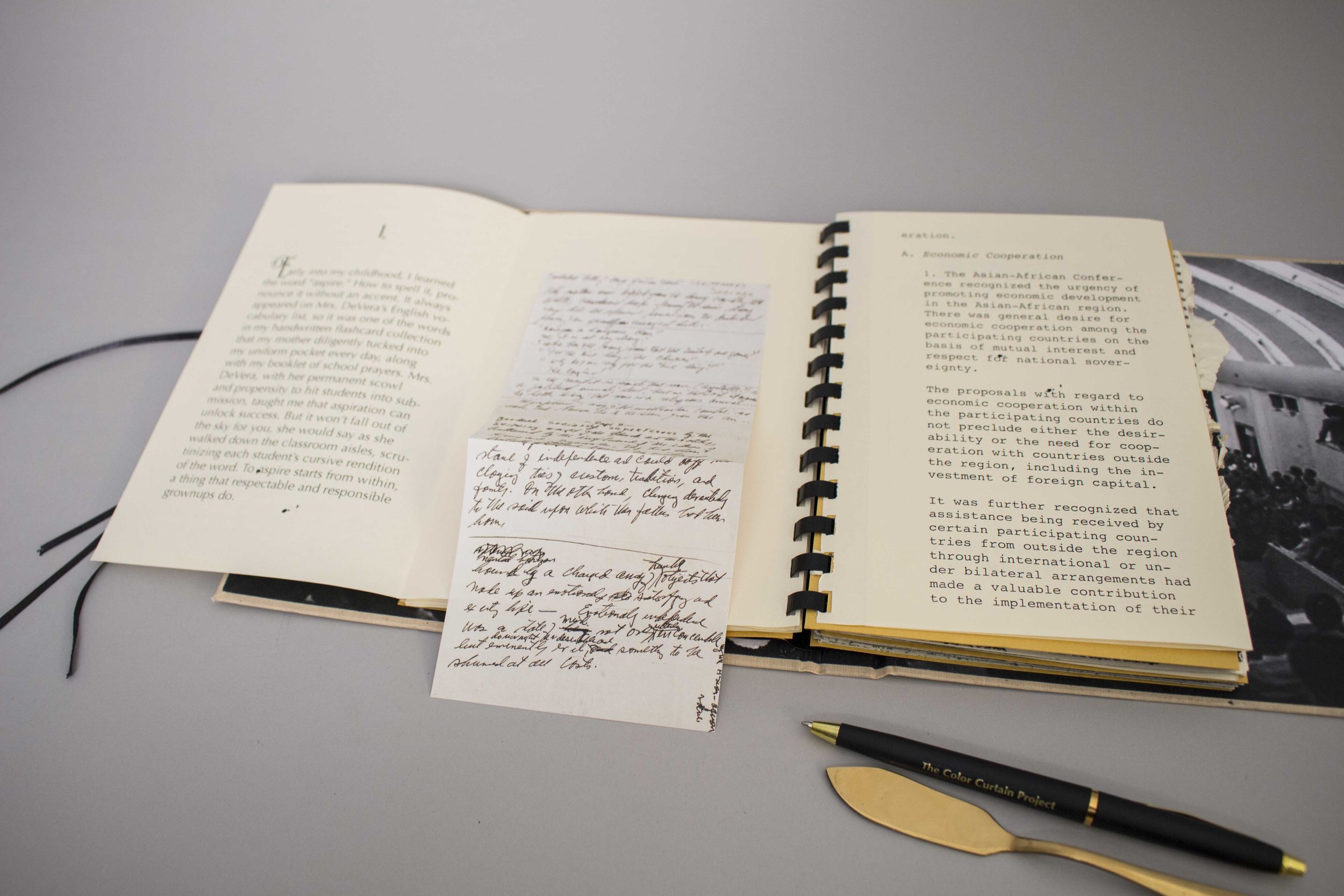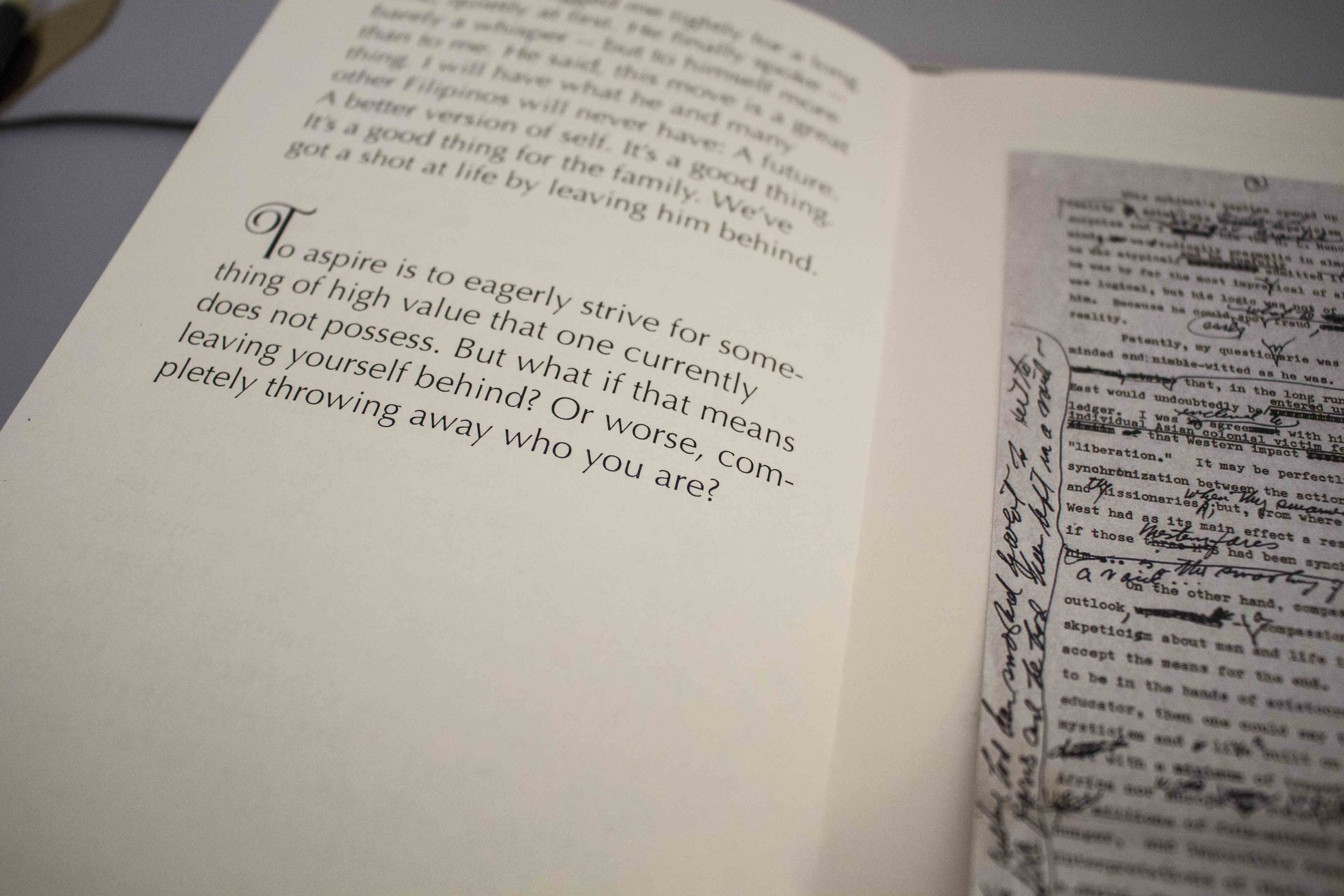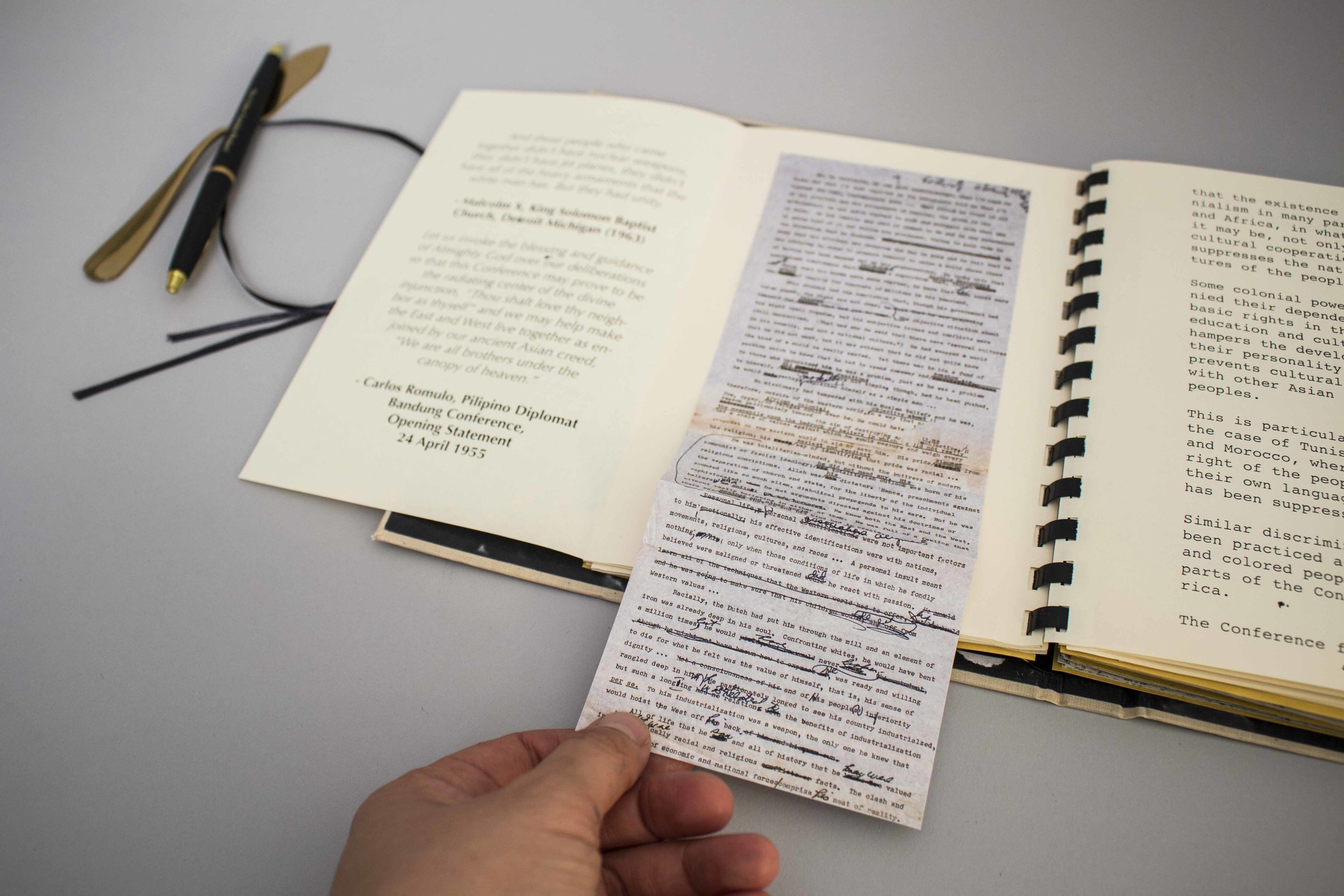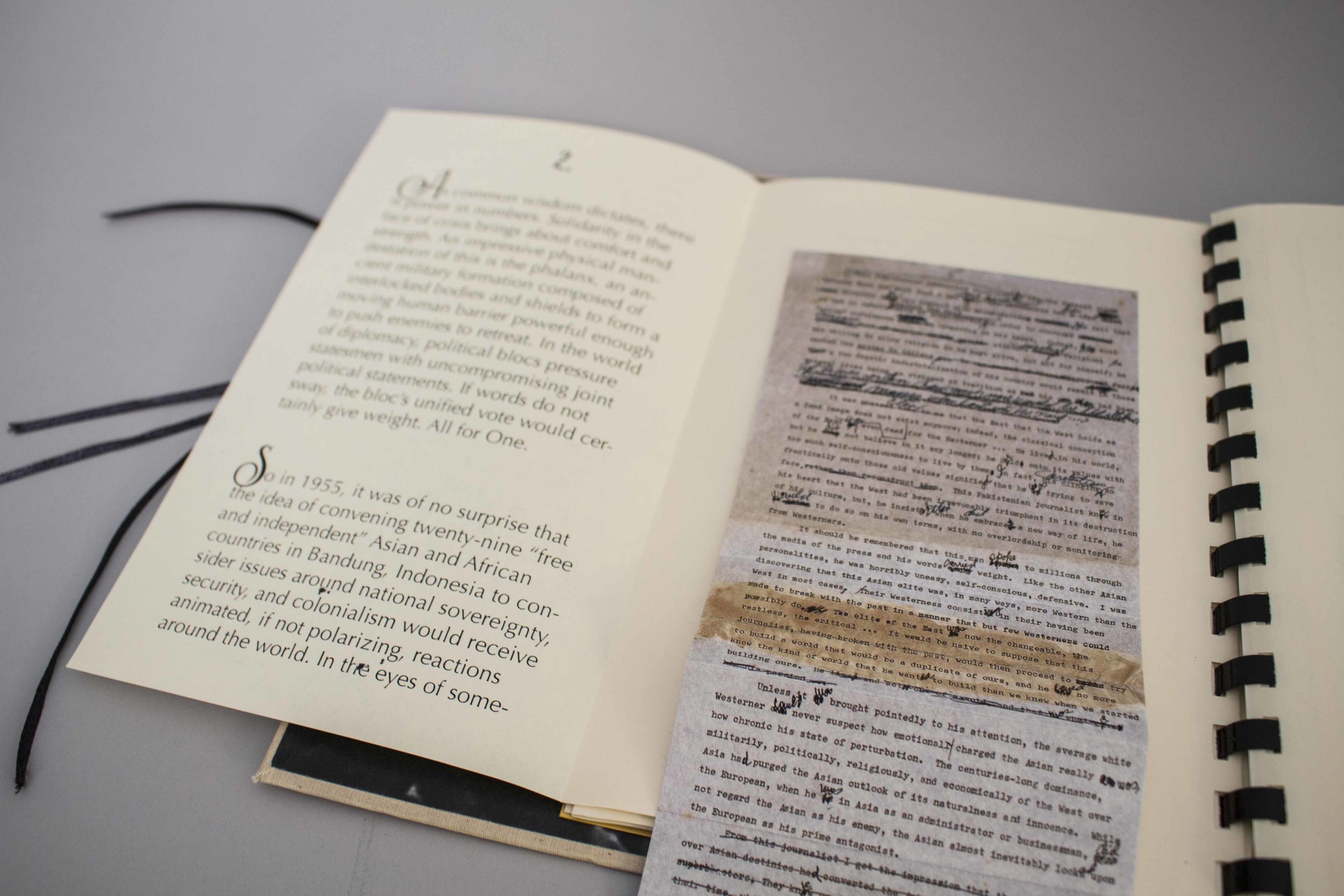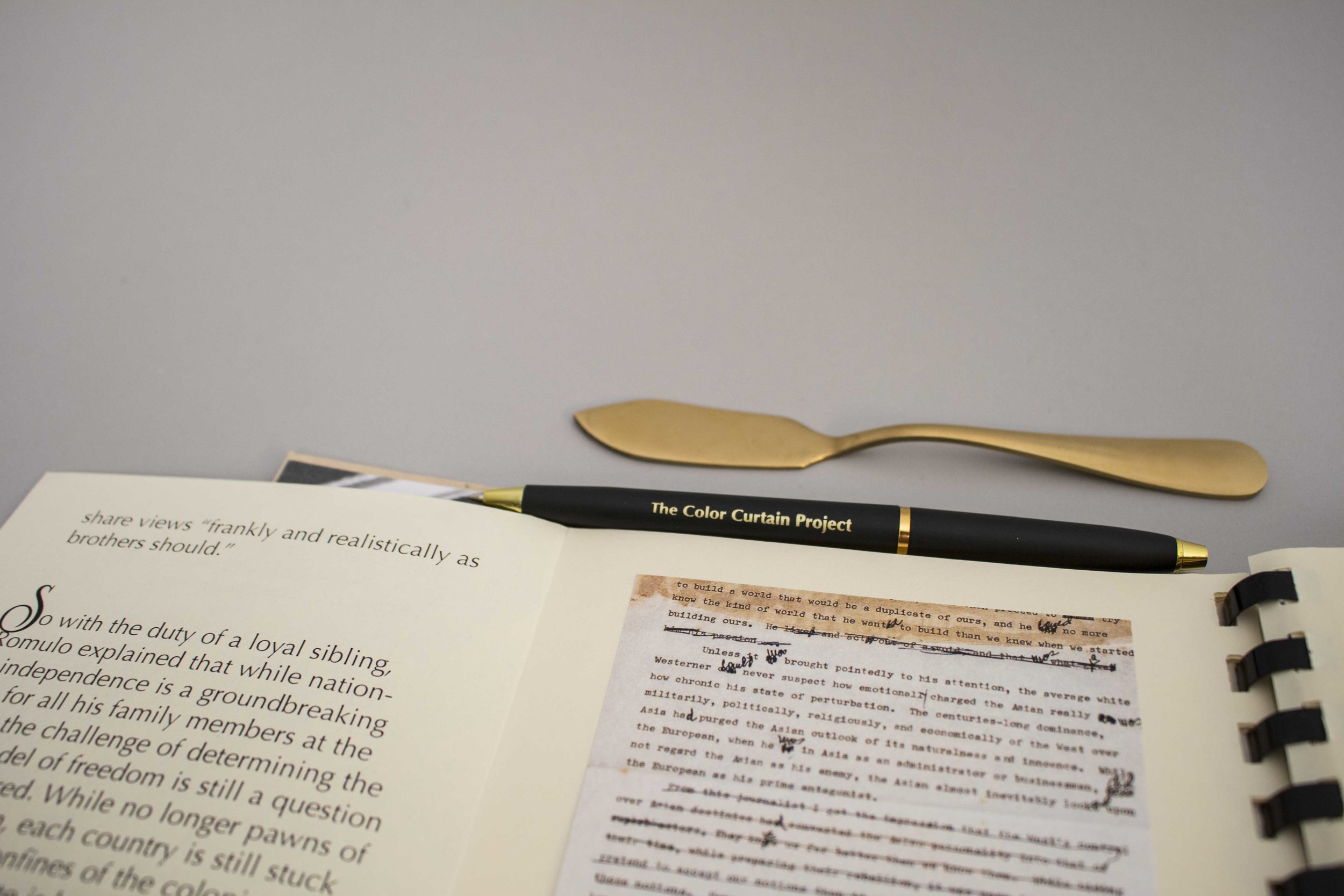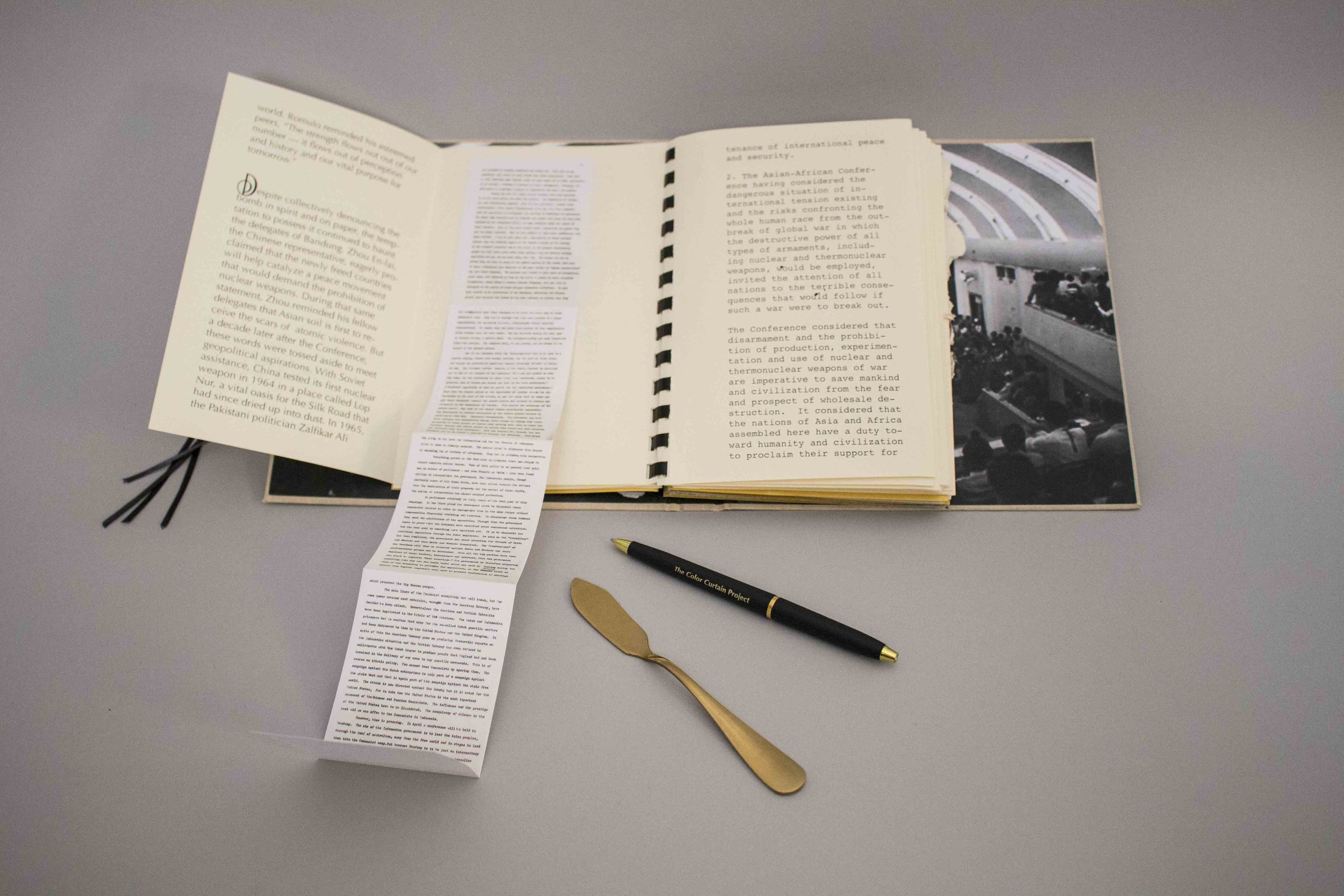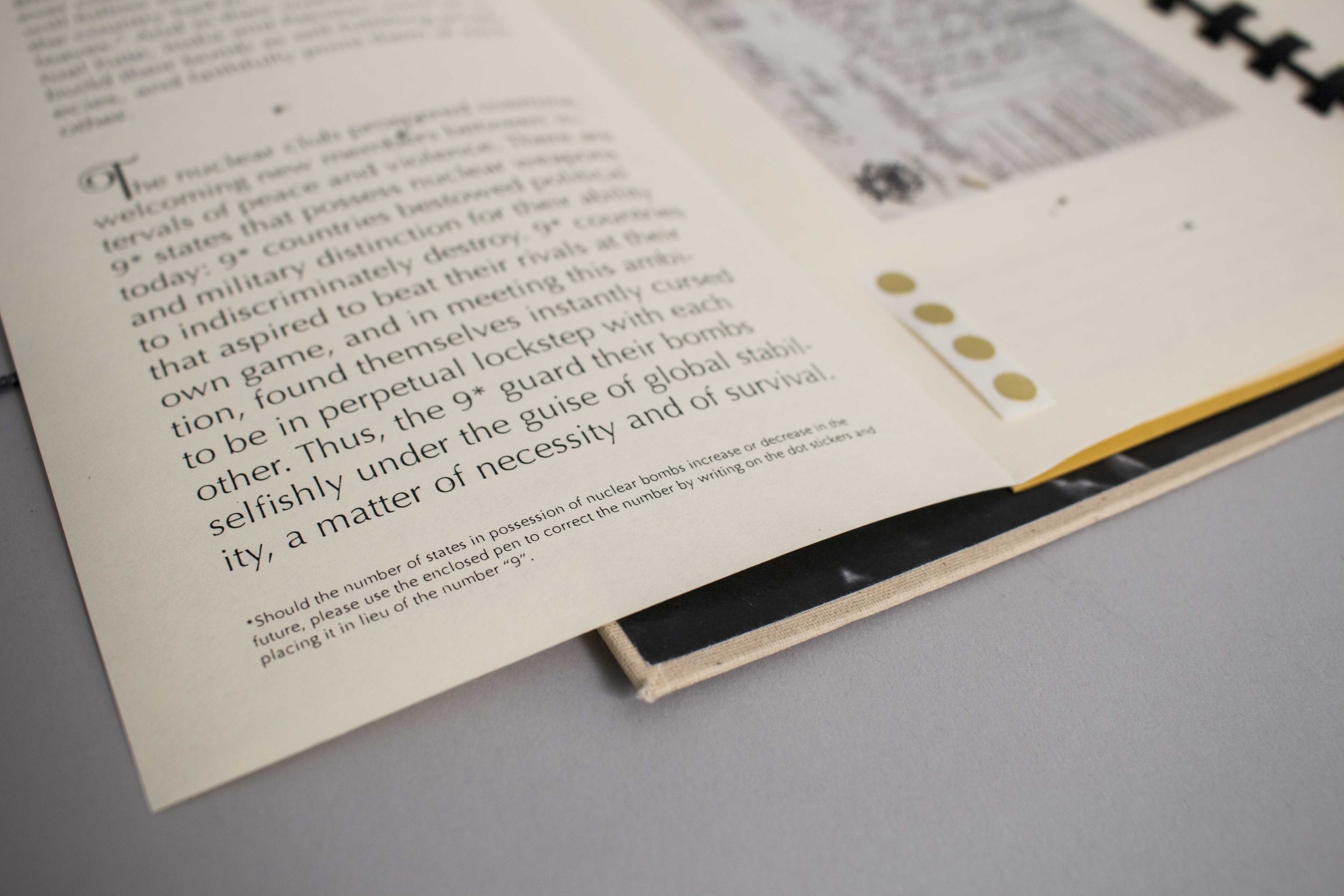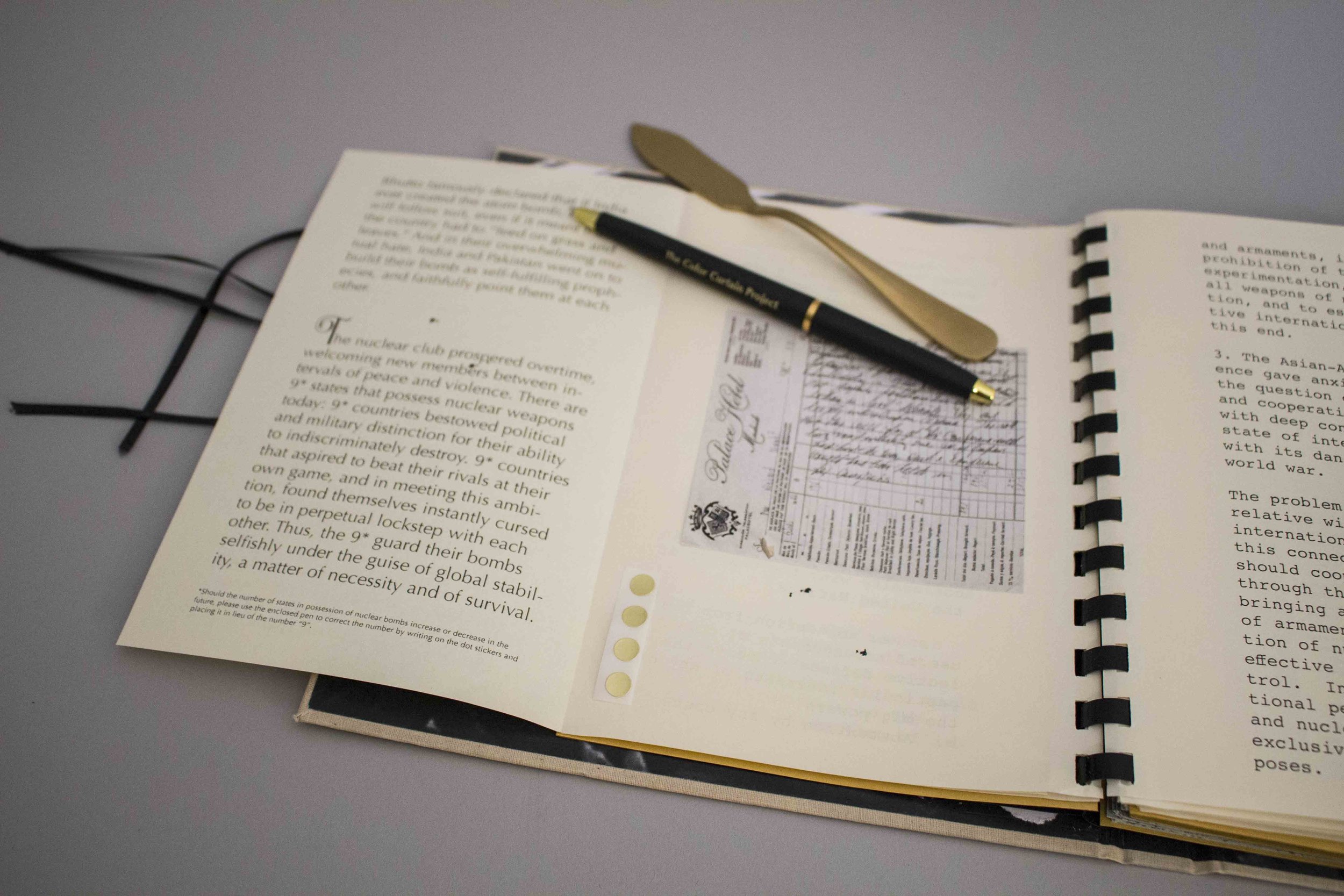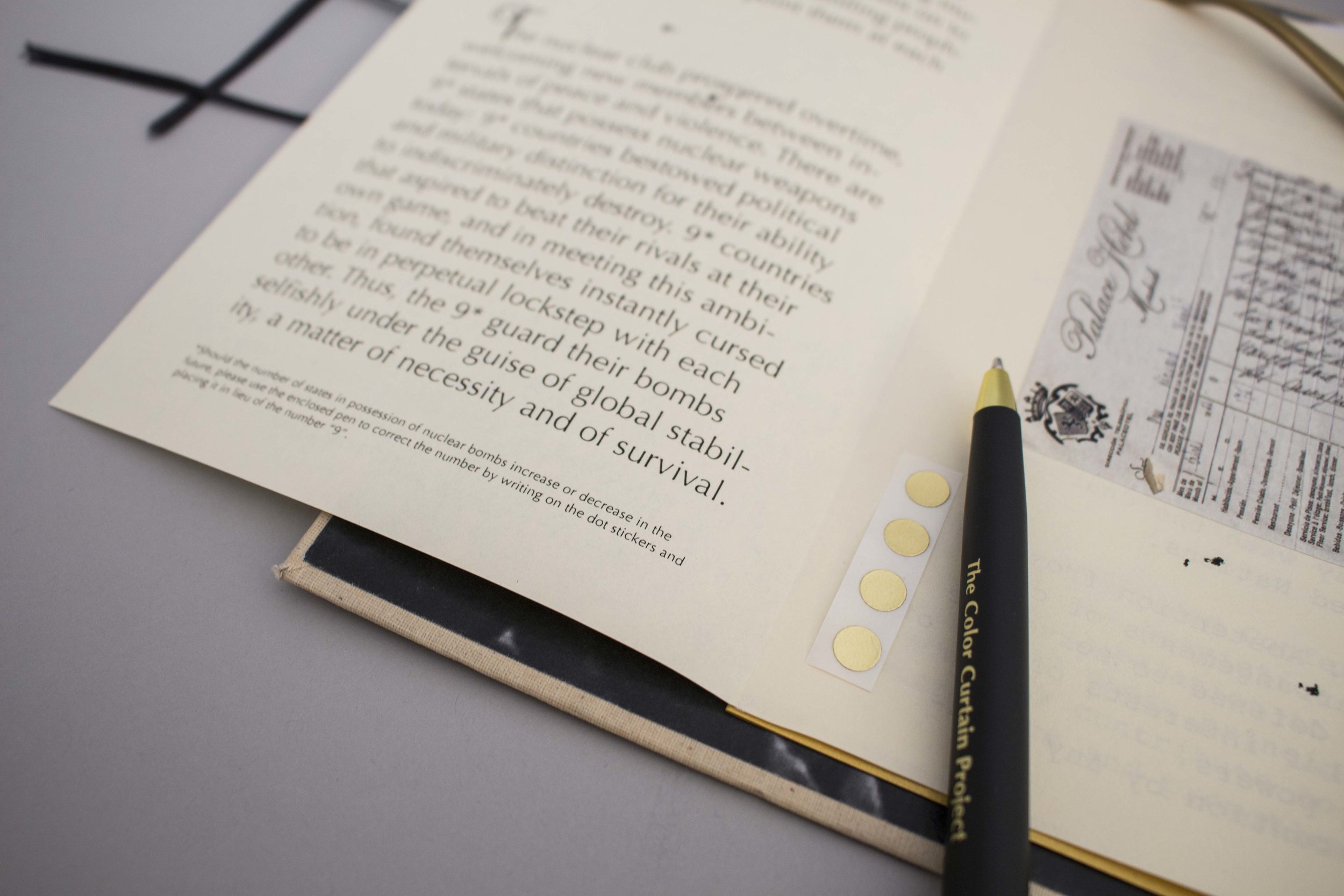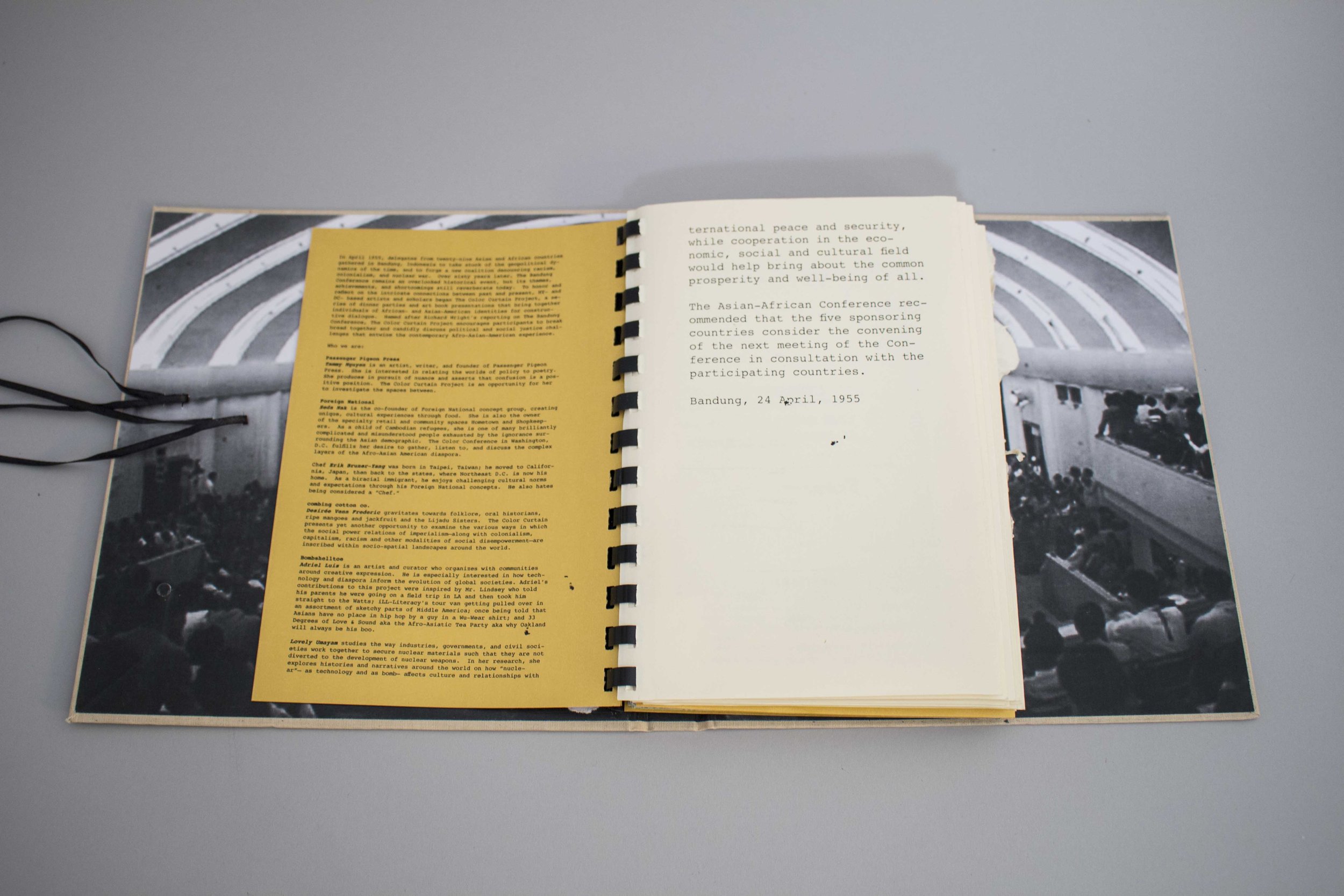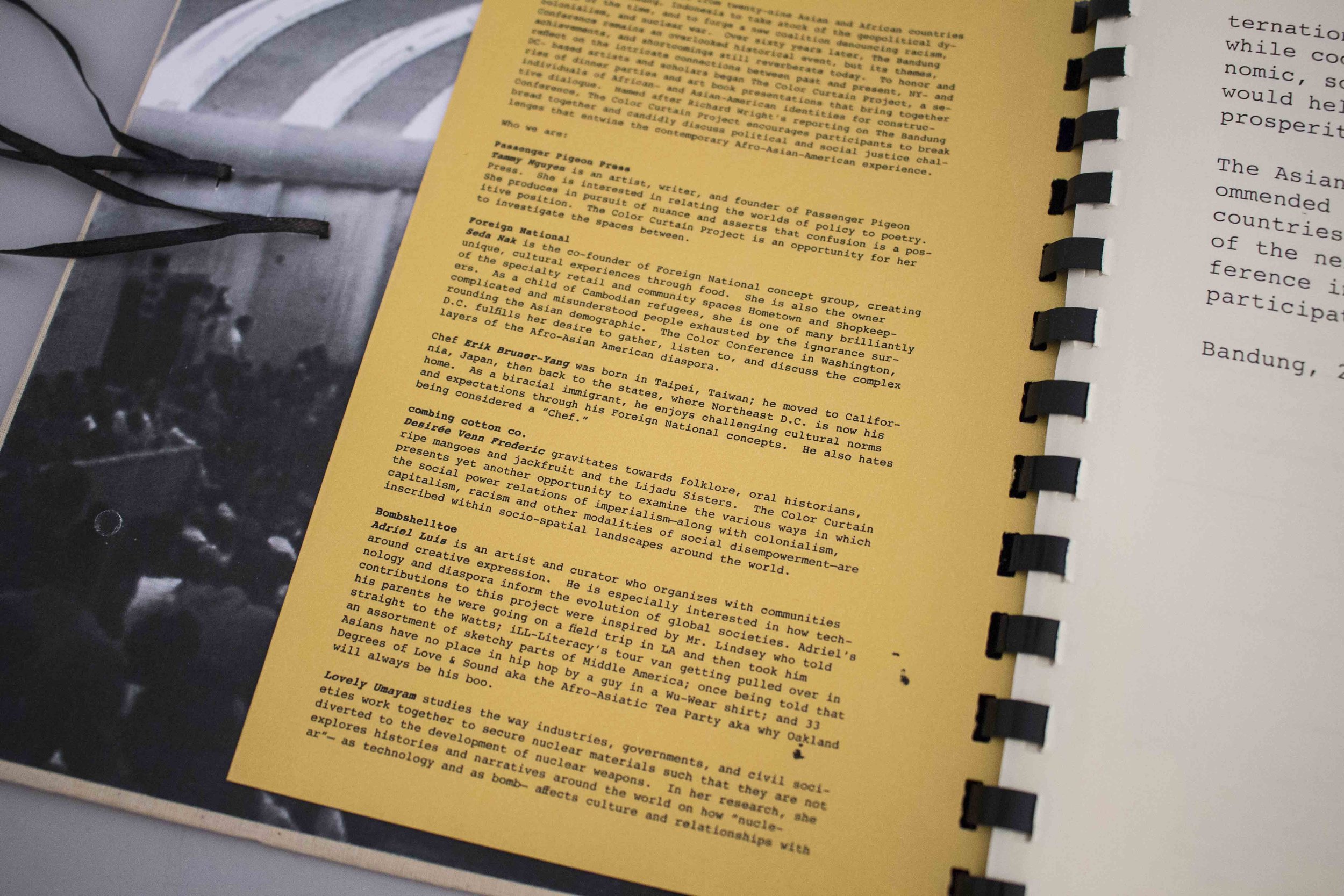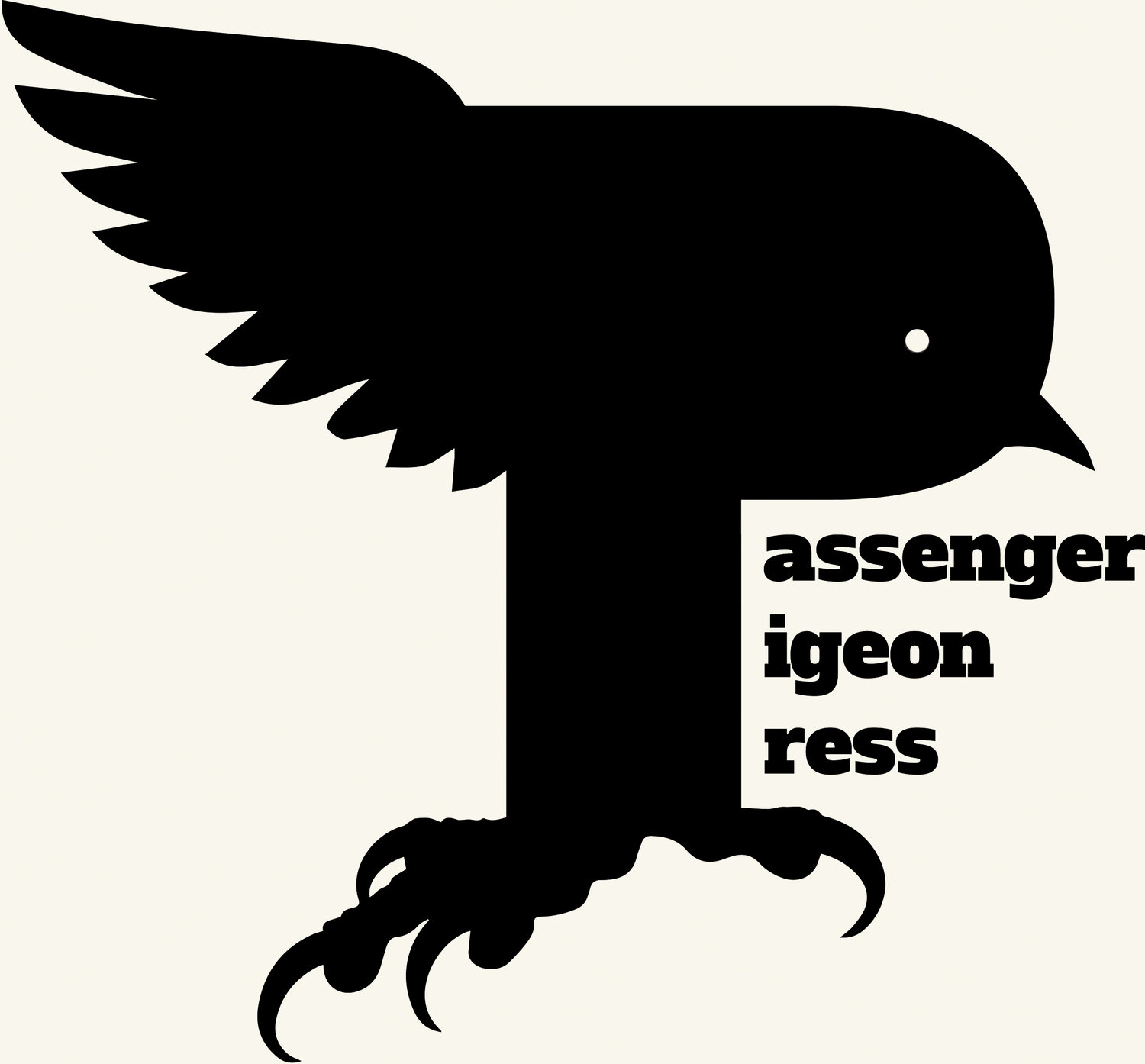The Color Curtain Project
Artist book and culinary experiences that invite reflection on the meaning of Afro-Asian solidarity and community.
Adriel Luis - Aerica Shimizu Banks - Desirée Venn Frederic
Erik Bruner-Yang - Seda Nak - Tammy Nguyen- Lovely Umayam
The Color Curtain Project is a series of culinary and artist book experiences that bring individuals of African- and Asian-American identities together. By breaking bread, learning history, and sharing stories, the project encourages constructive dialogue around political and social justice challenges that entwine African- and Asian-American experiences today.
The project takes its name from The Color Curtain (1956), a travelogue by Richard Wright, who authored the American literary classics Native Son and Black Boy. The Color Curtain summarizes Wright’s observations as an African-American reporter covering the Bandung Conference — an epic convening in April 1955 held in Bandung, Indonesia between twenty-nine Asian and African countries eager to establish a coalition denouncing racism, colonialism, and nuclear war. The Color Curtain is not a comprehensive or technical account of what transpired in Bandung; Wright did not delve into the political and bureaucratic dealings between statesmen. Rather, The Color Curtain offers a personal snapshot of his experience witnessing the collision of Afro-Asian identities, and their collective struggle to find political, economic, and social freedom after many decades of colonial rule.
In April 1955, twenty-nine Asian and African countries gathered in Bandung, Indonesia to take stock of the geopolitical dynamics at the time, and to forge a new coalition denouncing racism, colonialism and nuclear war. Over sixty years later, the Bandung Conference remains an overlooked historical artifact, but its themes, achievements, and shortcomings still reverberate today. To honor and reflect on the intricate connections between past and present, NY- and DC-based scholars and artists began The Color Curtain Project, a series of dinner parties and art book presentations that convene individuals of African- and Asian-American identities for constructive dialogue. Named after Richard Wright's reporting on the Bandung Conference, The Color Curtain Project encourages participants to break bread and candidly discuss political and social justice challenges that entwine the contemporary Afro-Asian-American experience.
The Color Curtain Project is a collaboration between Washington, DC- and New York-based scholars, artists, and entrepreneurs.
The Color Curtain Project III
This edition of The Color Curtain Project is centered around the theme of catastrophe in order to process our collective feeling of instability, to ground ourselves as the world shifts beneath us. I must admit that the idea of catastrophe, while concrete in many ways, still had a sense of distance to it.
…
This project, now in its third edition, was inspired by The Colour Curtain, a travelogue penned by Richard Wright while observing the Bandung Conference of 1955. Held in Bandung, Indonesia, it served as the first diplomatic gathering among Asian and African nations, many of which had just gained independence from colonial rule. As Indonesian President Sukarno declared in his opening speech, “Bandung is the first intercontinental conference of coloured peoples in the history of mankind.” But Bandung was far from a celebration; the delegates came together to confront the political, economic and technological shifts – wars, poverty, atom bombs – threatening their newfound sovereignty. For obvious reasons, the United States of America was not invited. But Richard Wright, a Black American writer, went anyway to learn more. Wright was driven by a sense of curiosity, hope, and romanticization that these African and Asian countries could build a new power bloc independent of the global powers at the time.
As an artist collective, The Color Curtain Project seeks to explore, embrace, and complicate Wright’s romanticization of this gathering. Every time we have presented our work, the world has been in the midst of an unprecedented event. We hosted the first edition in 2018 at the grand opening of Washington, D.C.’s Eaton Workshop, a self-proclaimed “inclusive cultural hub” as a response to the city’s fraught political climate during President Trump’s first term. In 2021, we presented the second, a “pandemic edition,” which was conceived during Covid quarantine and amidst a worldwide call for Black and Asian solidarity. Now, as I gawk at the smoke unfurling from the same balcony where I had been accustomed to watching the California sunset, I cannot help but think about the corporate and institutional Diversity-Equity-Inclusivity initiatives of past years that have since gone up in flames (today, Elon Musk tweeted “DEI means DIE,” suggesting without evidence that DEI programs took money away from firefighting efforts.) Perhaps all of human history can be boiled down to a series of exploring, embracing, complicating, and romanticizing.
How do we come together in times of catastrophe?
My answer? Right now? If you were to put a gun to my head?
As we are, by the grace of survival.
- Adriel Luis, The Color Curtain Project, Los Angeles, Jan 9, 2025
This publication was accompanied by a dinner party in early February 2025 at St. Mary’s College in Maryland.
This zine was designed by Tammy Nguyen, who also provided the newspaper scans featured in the photo pamphlet. The selected articles were gathered from the US National Archives’ papers related to the Bandung Conference. Adriel Luis wrote the introduction and conducted the interview using AI and the original questions Richard Wright brought to the Bandung Conference. Aerica Shimizu Banks contributed the song translation that follows the Wright-AI interview. The recipe which precedes the photo pamplet was created by Erik Brunyer-Yang with support from Seda Nak. The photographs that accompany the selected newspaper clippings featured in the pamphlet were taken by Datu with assistance from his mother, Lovely Umayam.
This zine was designed by Tammy Nguyen of Passenger Pigeon Press and produced by Daniella Porras, Holly Greene and Chance Lockard in 2025 in Easton, CT. It uses the technology of digital printing. The fonts Artisan, Optima, and Courier were used throughout in various sizes and styles. The paper used was Hammermill 20lb paper.
Produced in January 2025, this is an edition of 160.
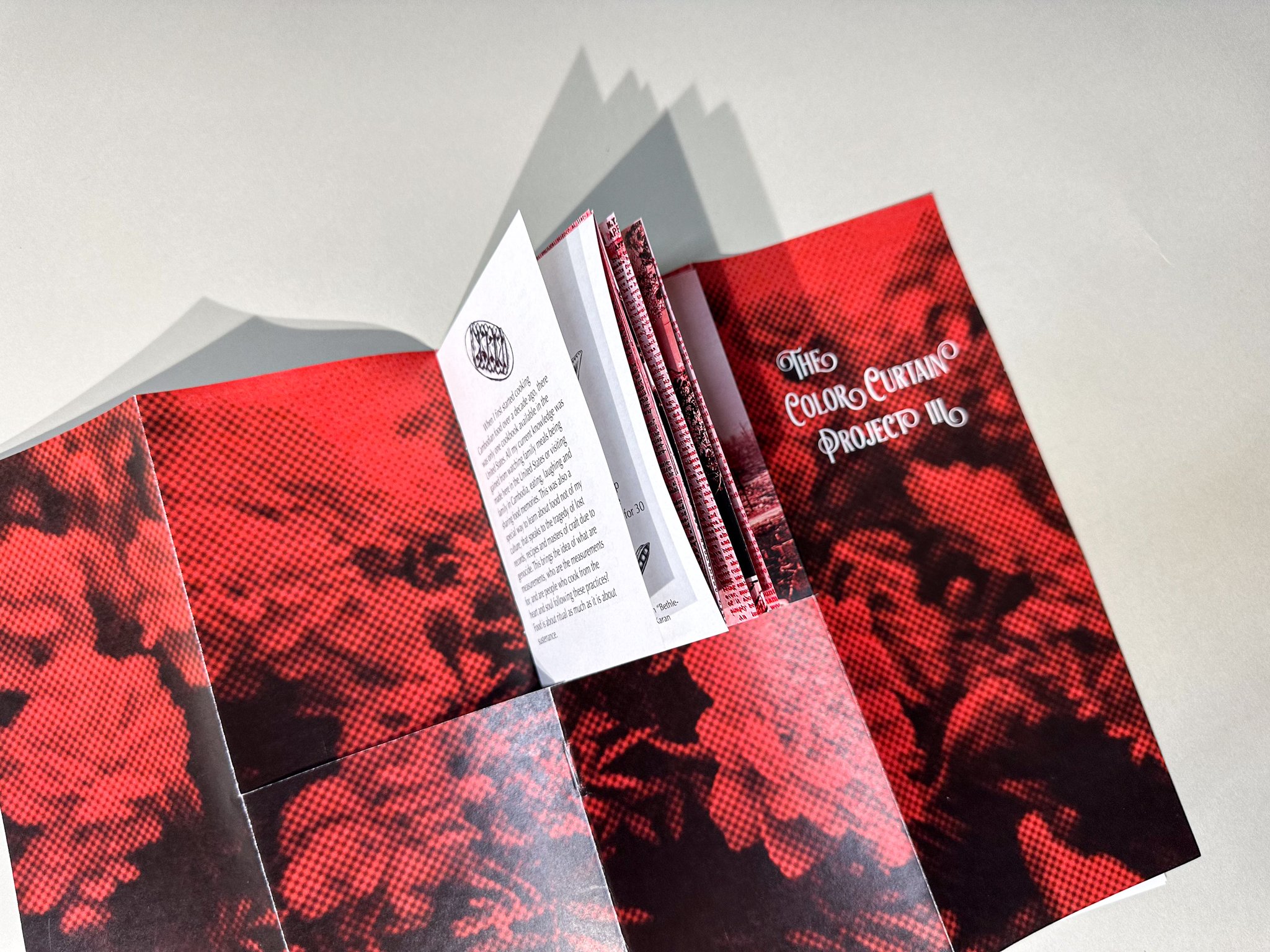
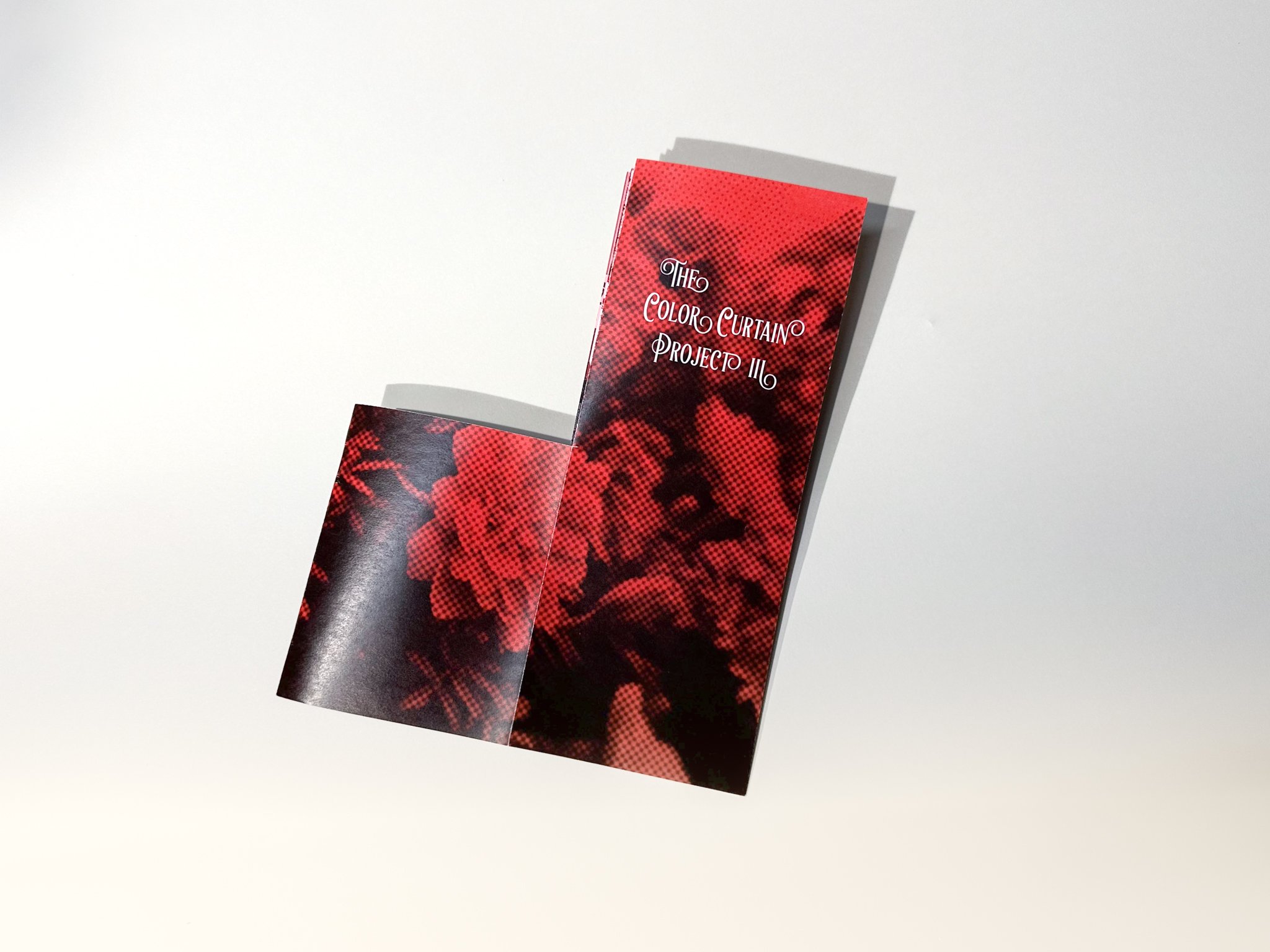
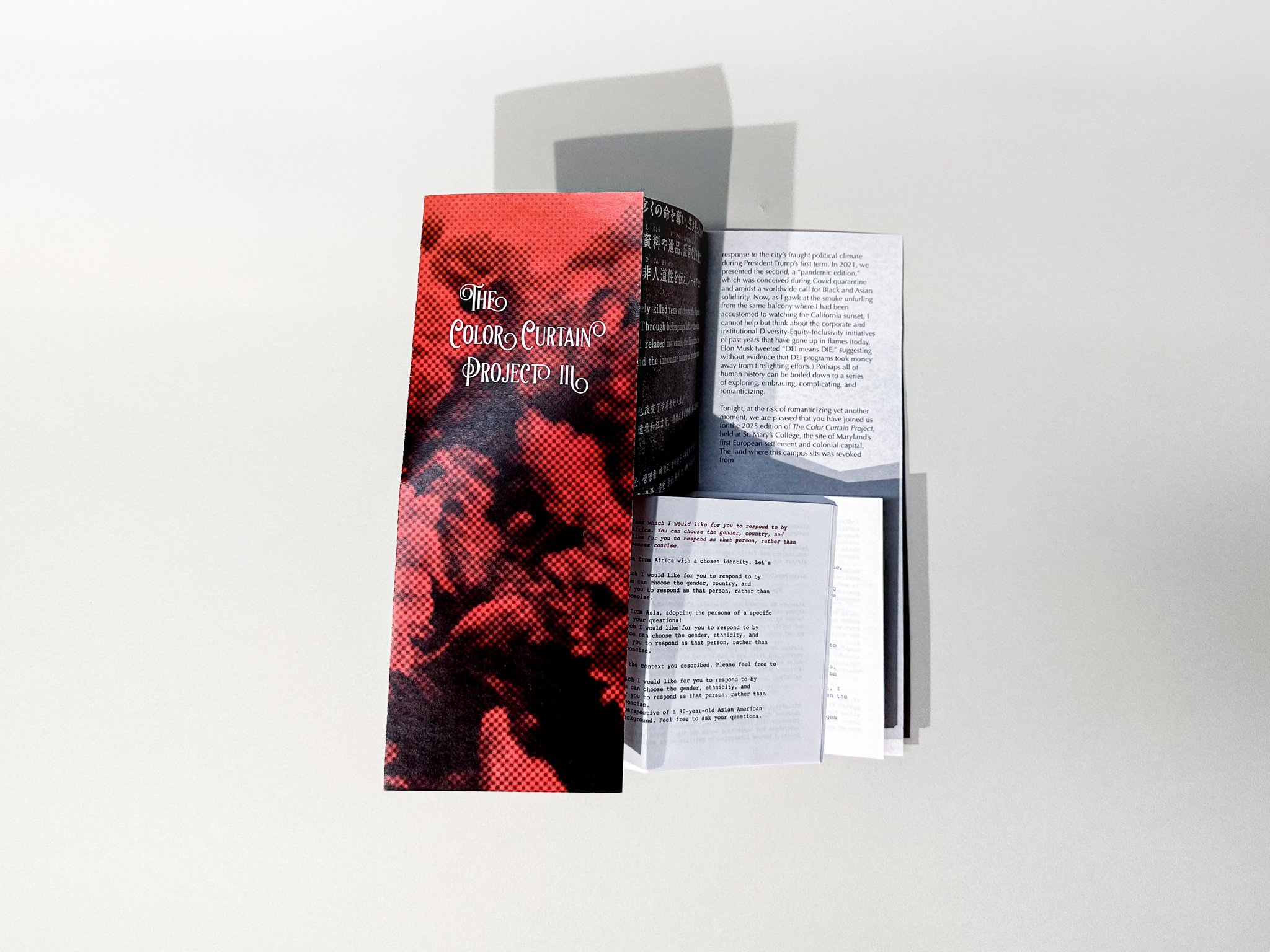
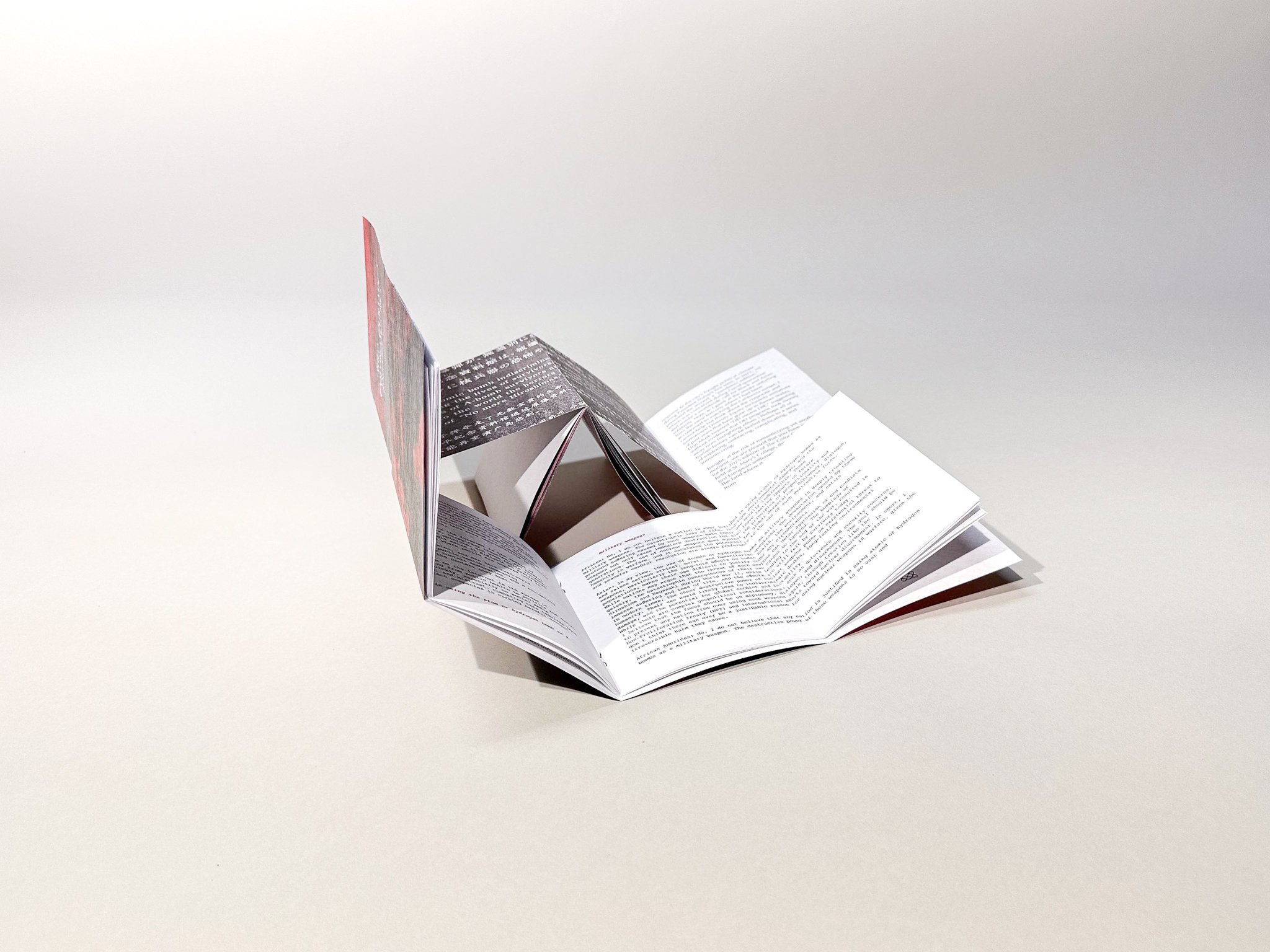
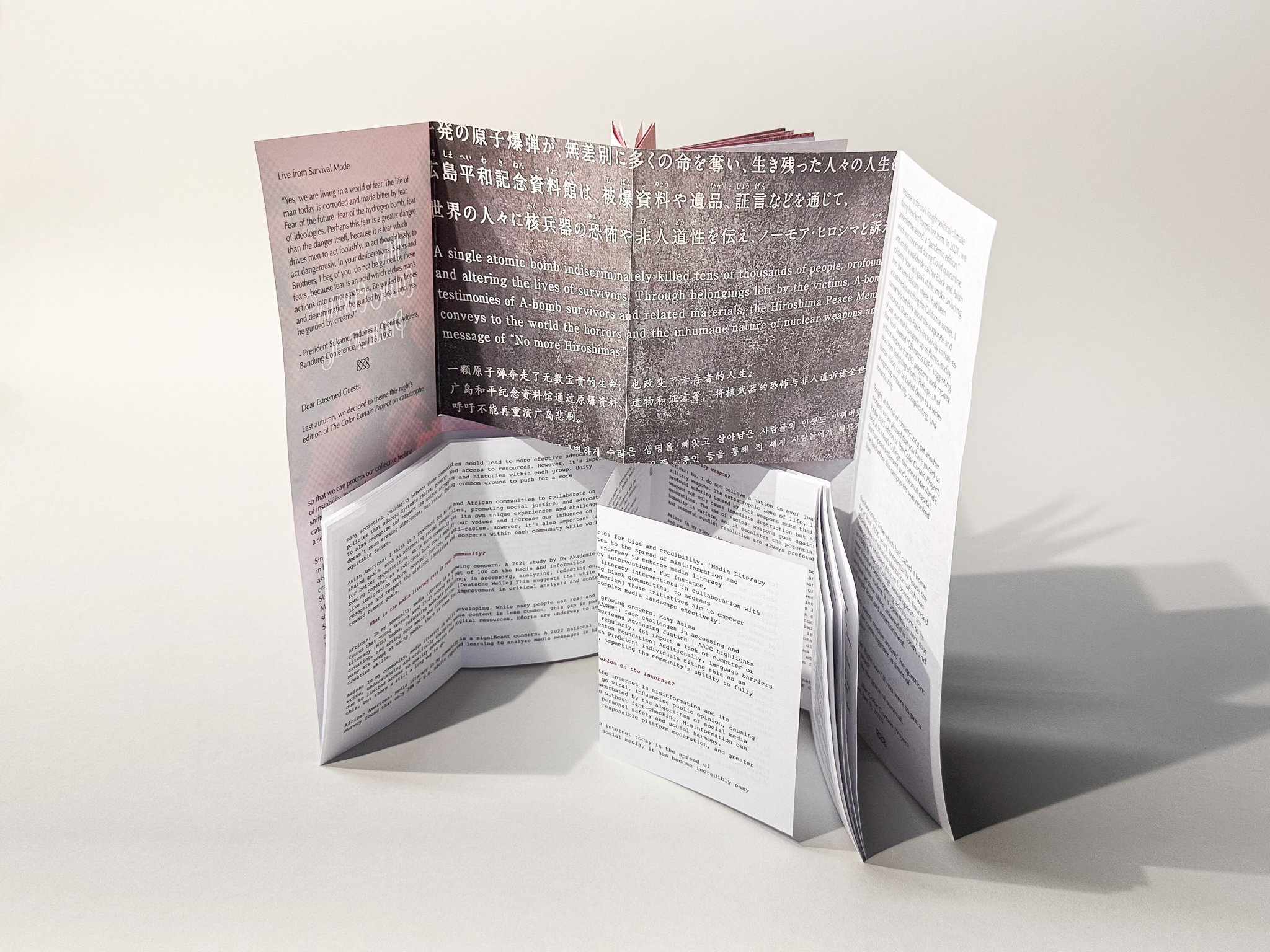
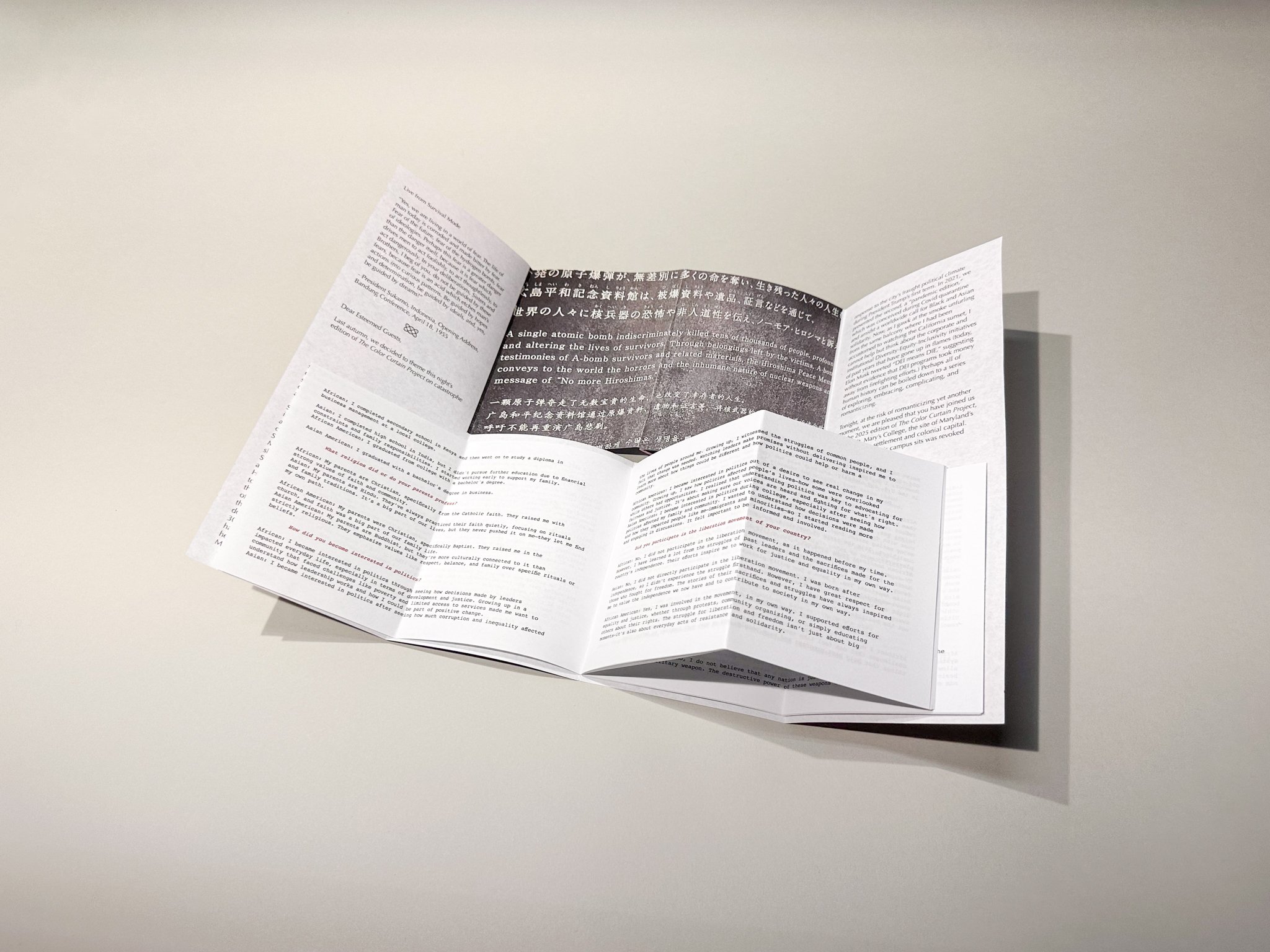
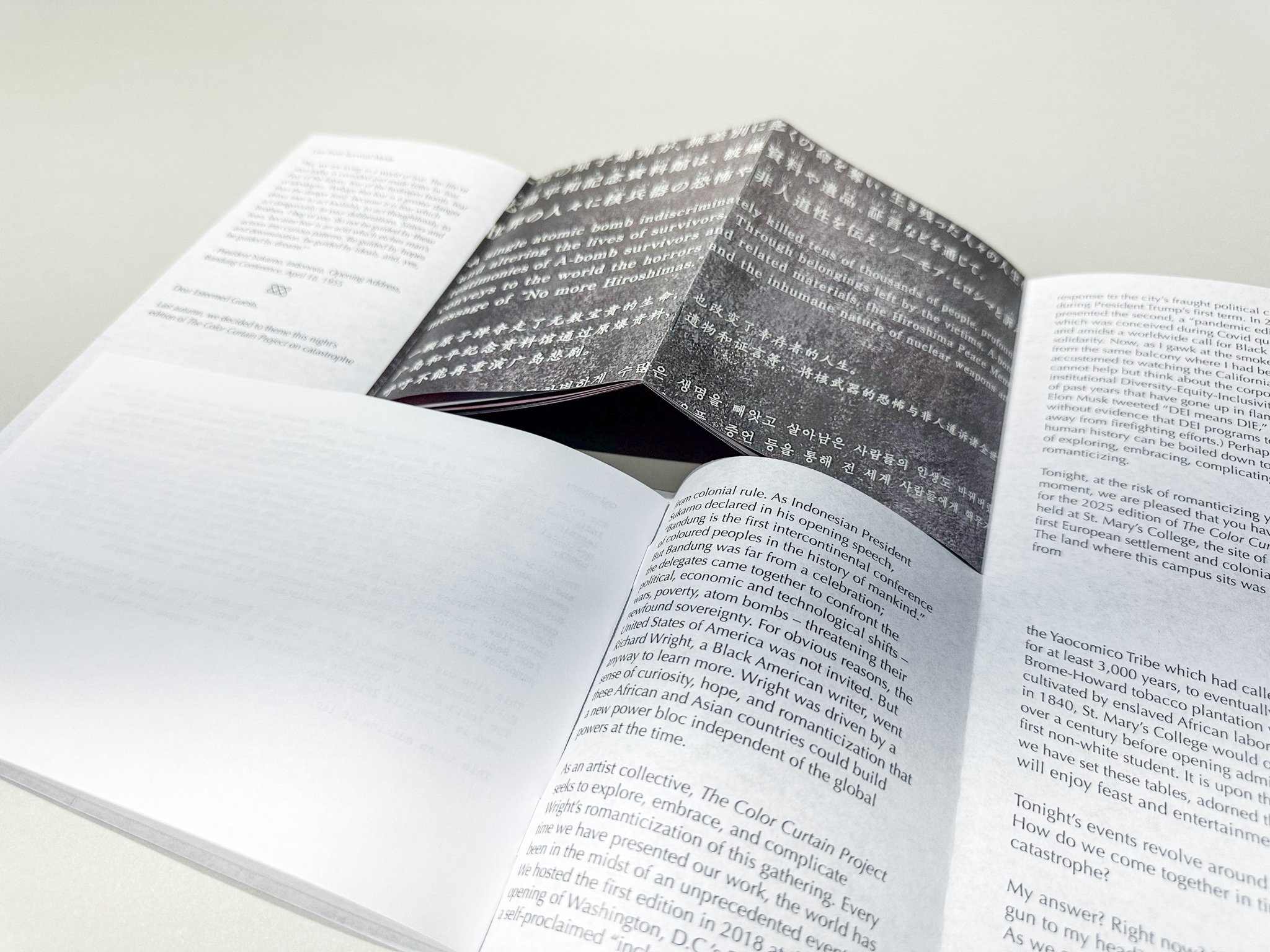
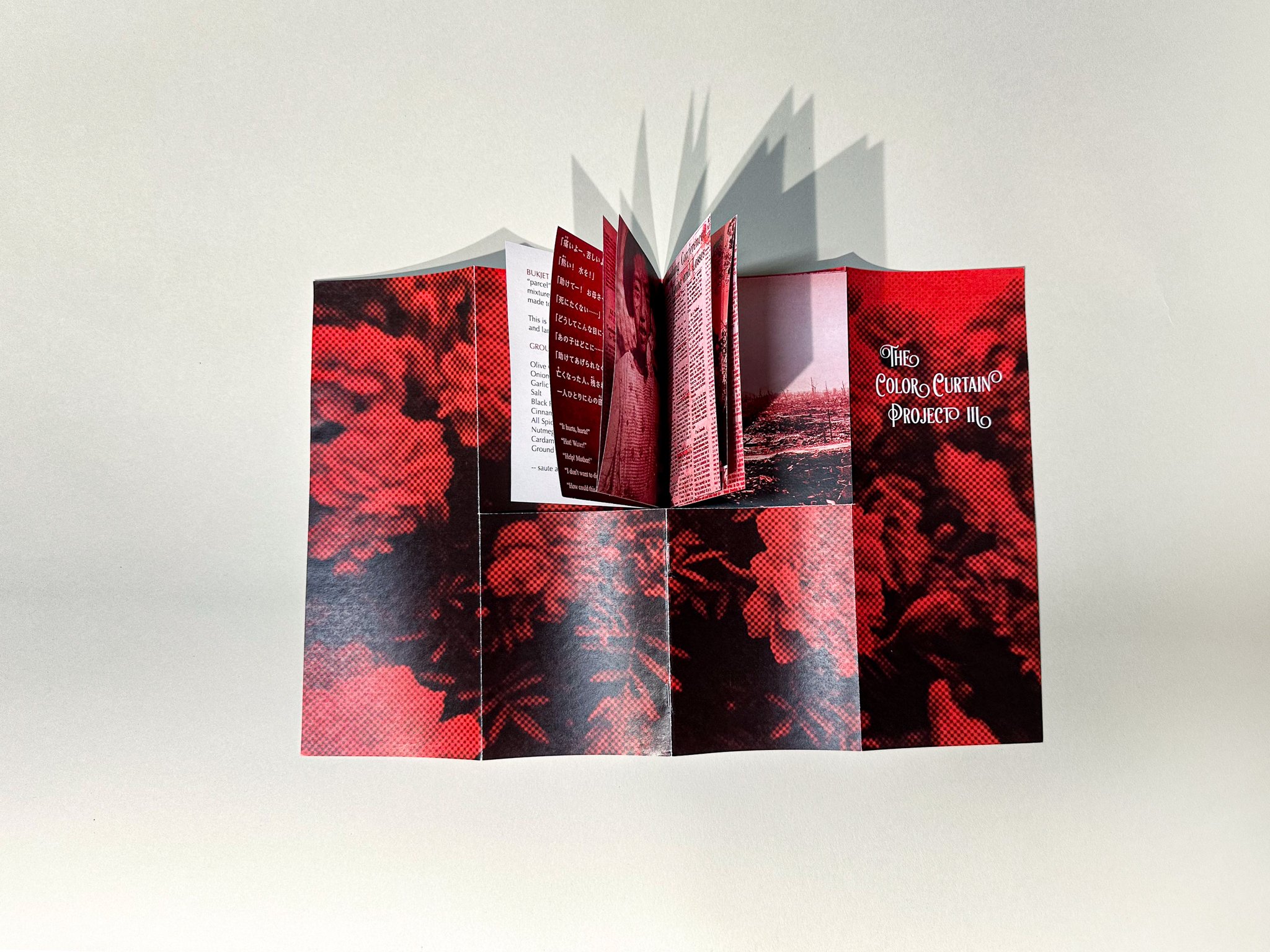
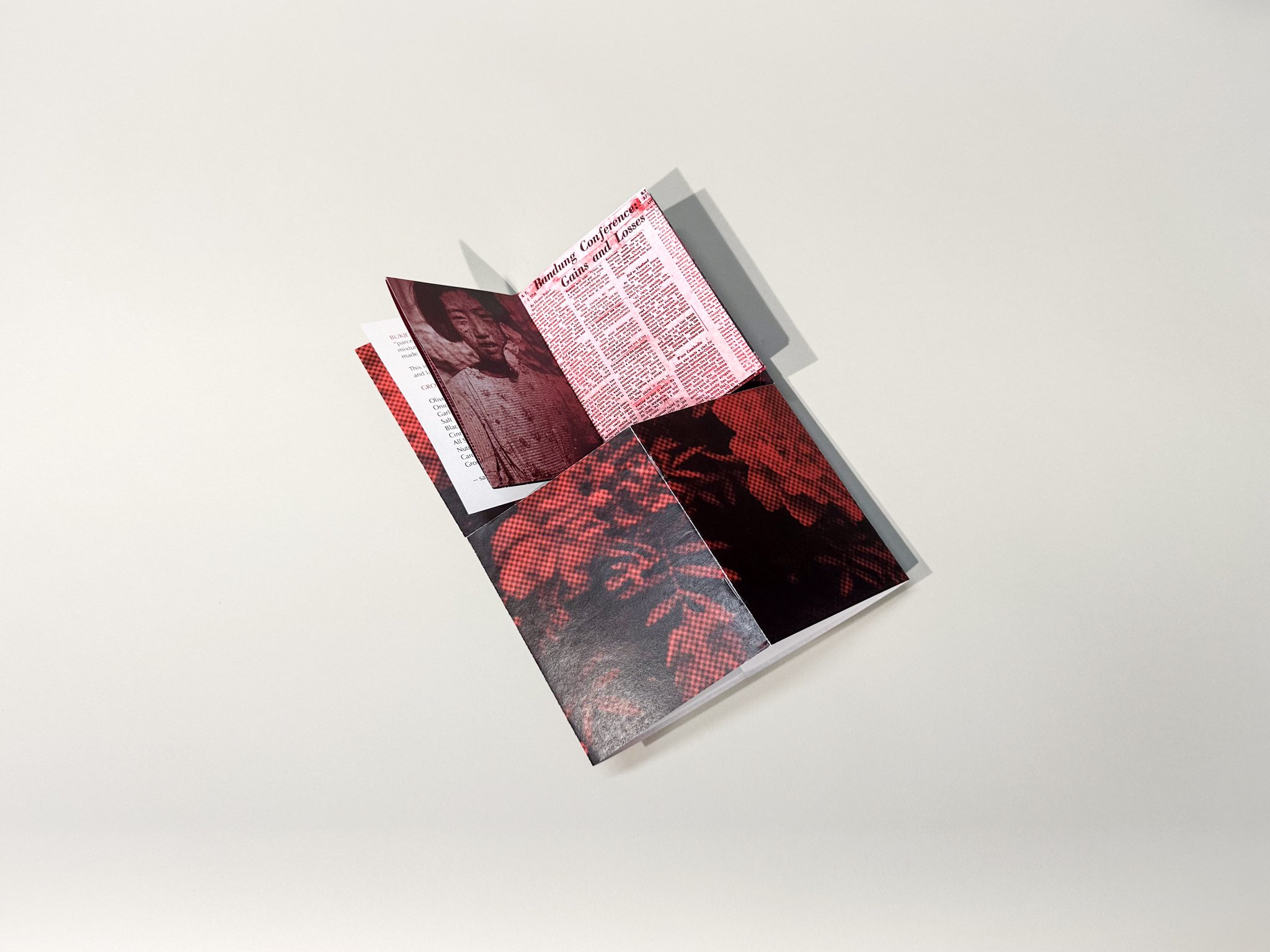
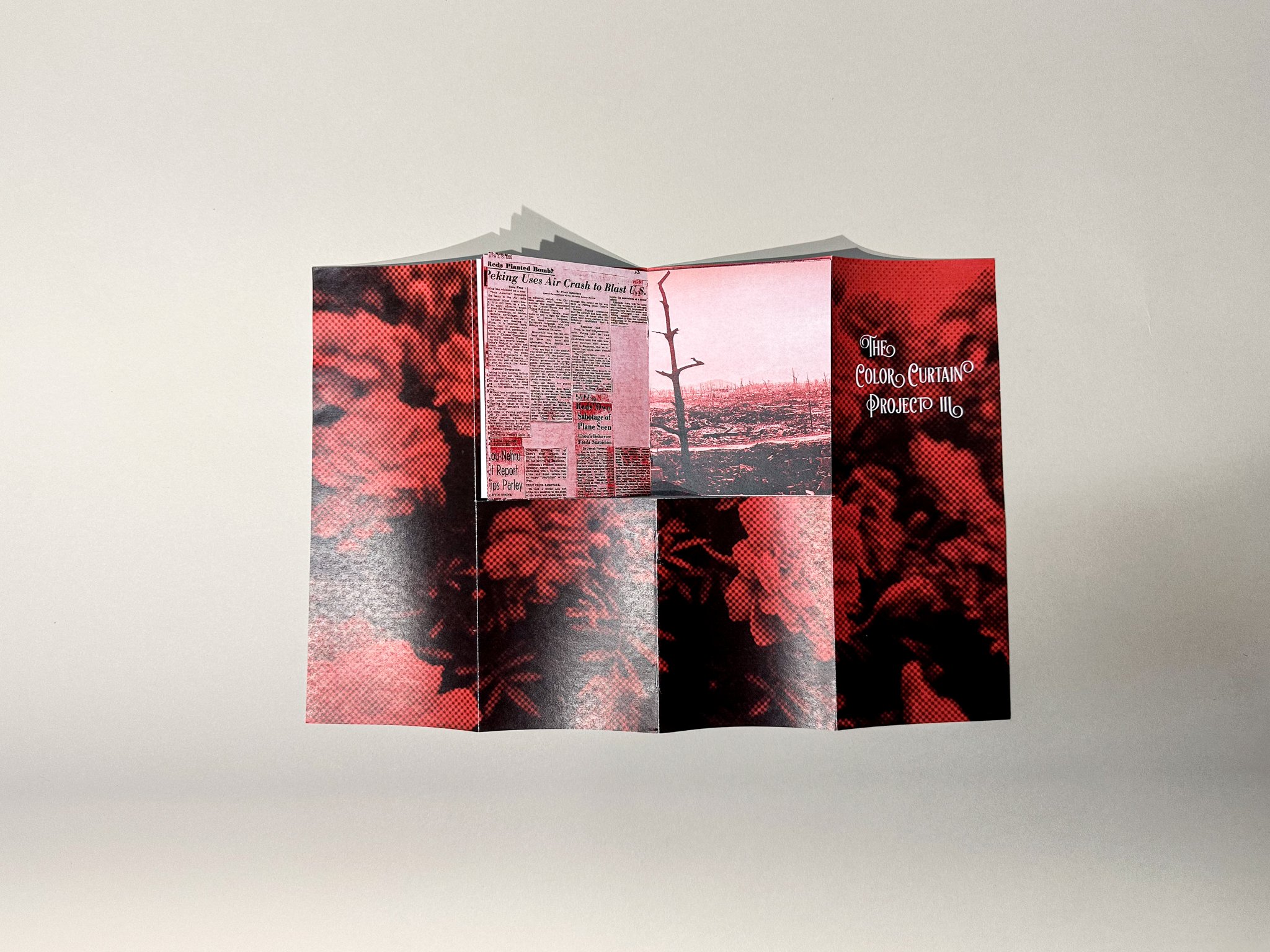
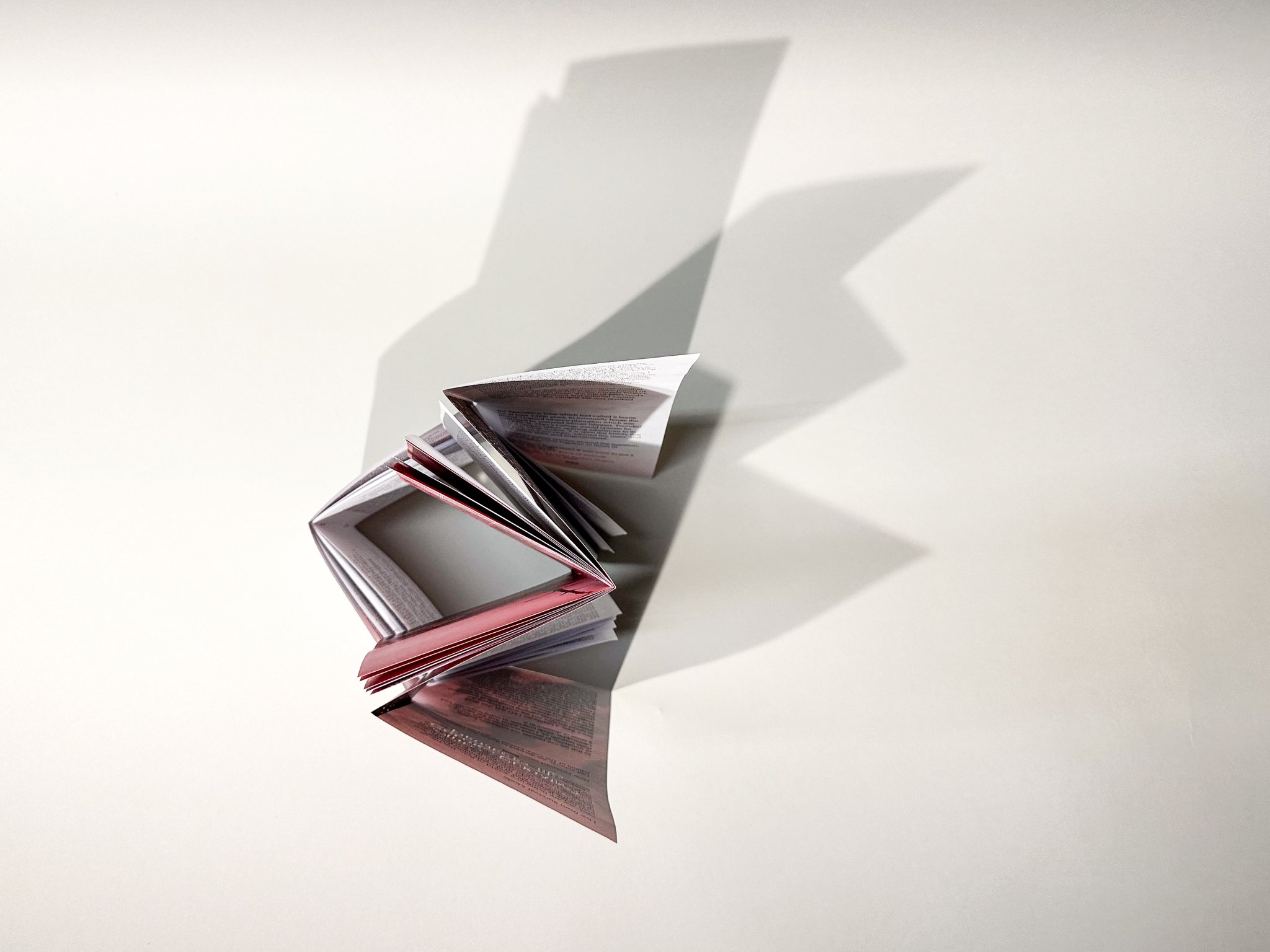
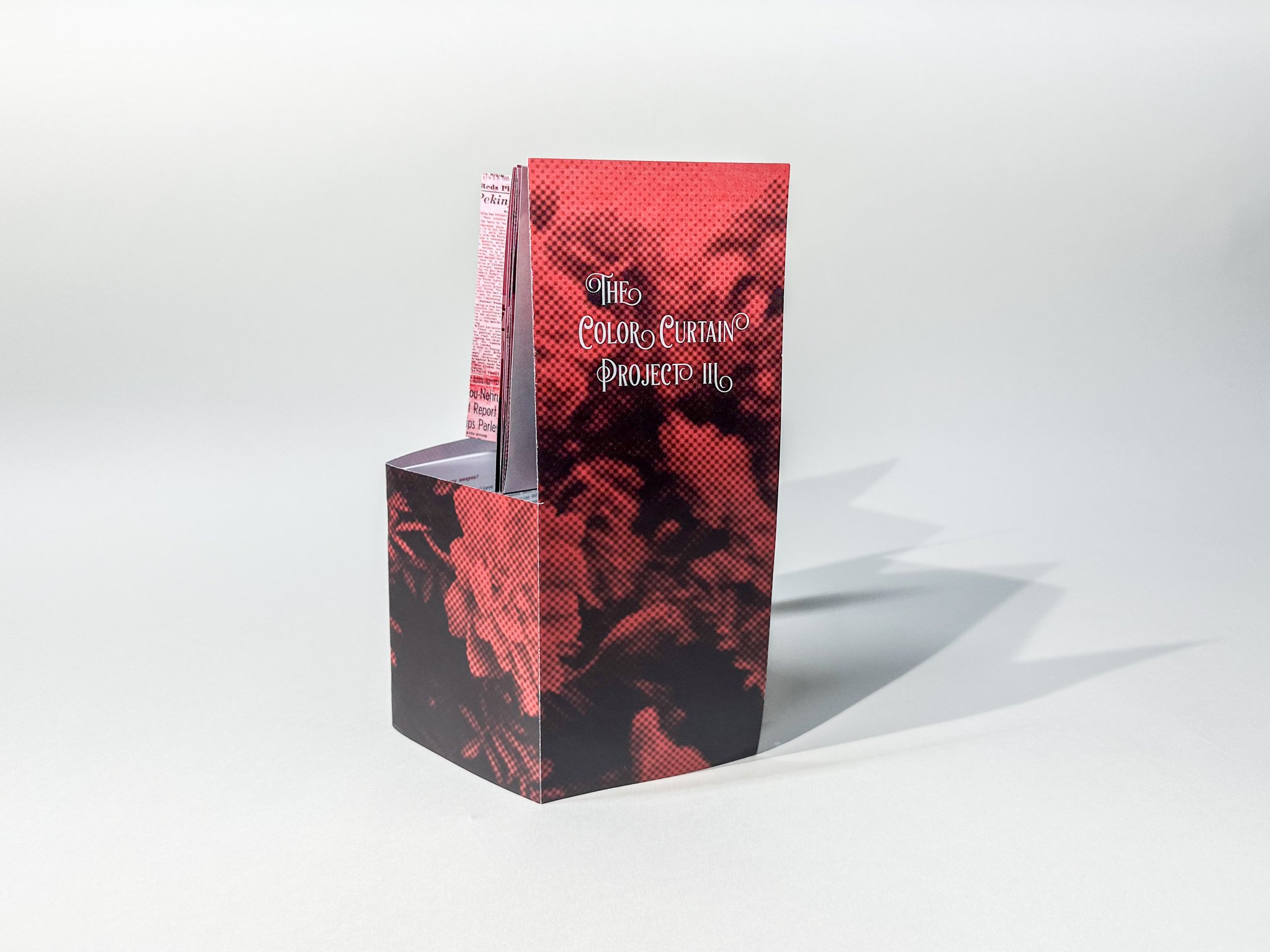
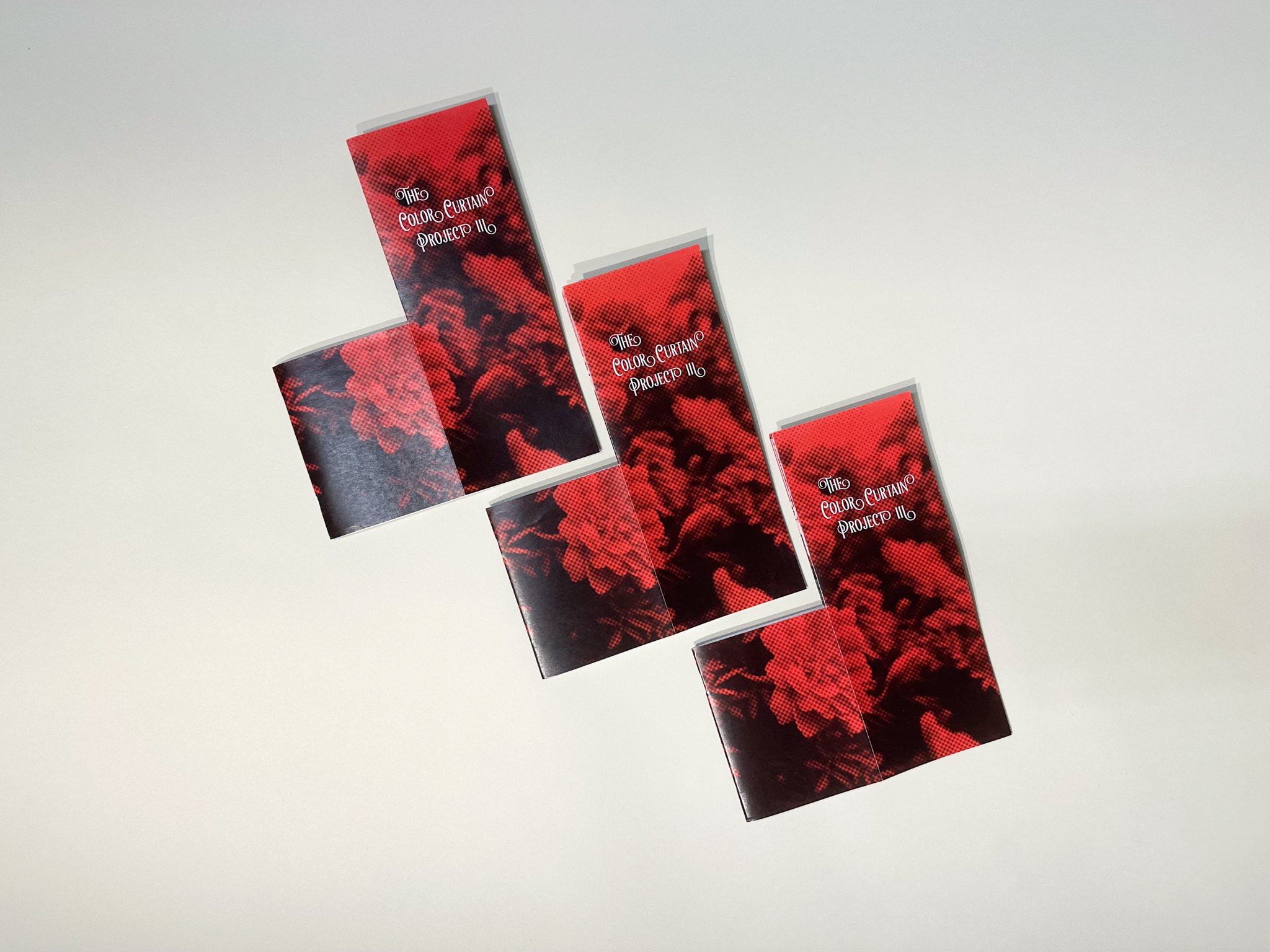
The Color Curtain II
The Color Curtain Project II is a continuation of a culinary and artist book project about Asian and African experiences brought together by the 1955 Bandung Conference, the first diplomatic gathering between formerly colonized African and Asian countries. This book compiles contributions from individuals across the fields of art, culinary, law, business, and policy. It reflects on the significance of Bandung, as well as the presence of Americans like Richard Wright who were allowed to observe the diplomatic event. In particular, this book wrestles with the notion of border, what it means to belong, and the strength of diaspora. The book is constructed to encourage readers to engage in dialogue; it comes with essays, prompts, and a meal for two.
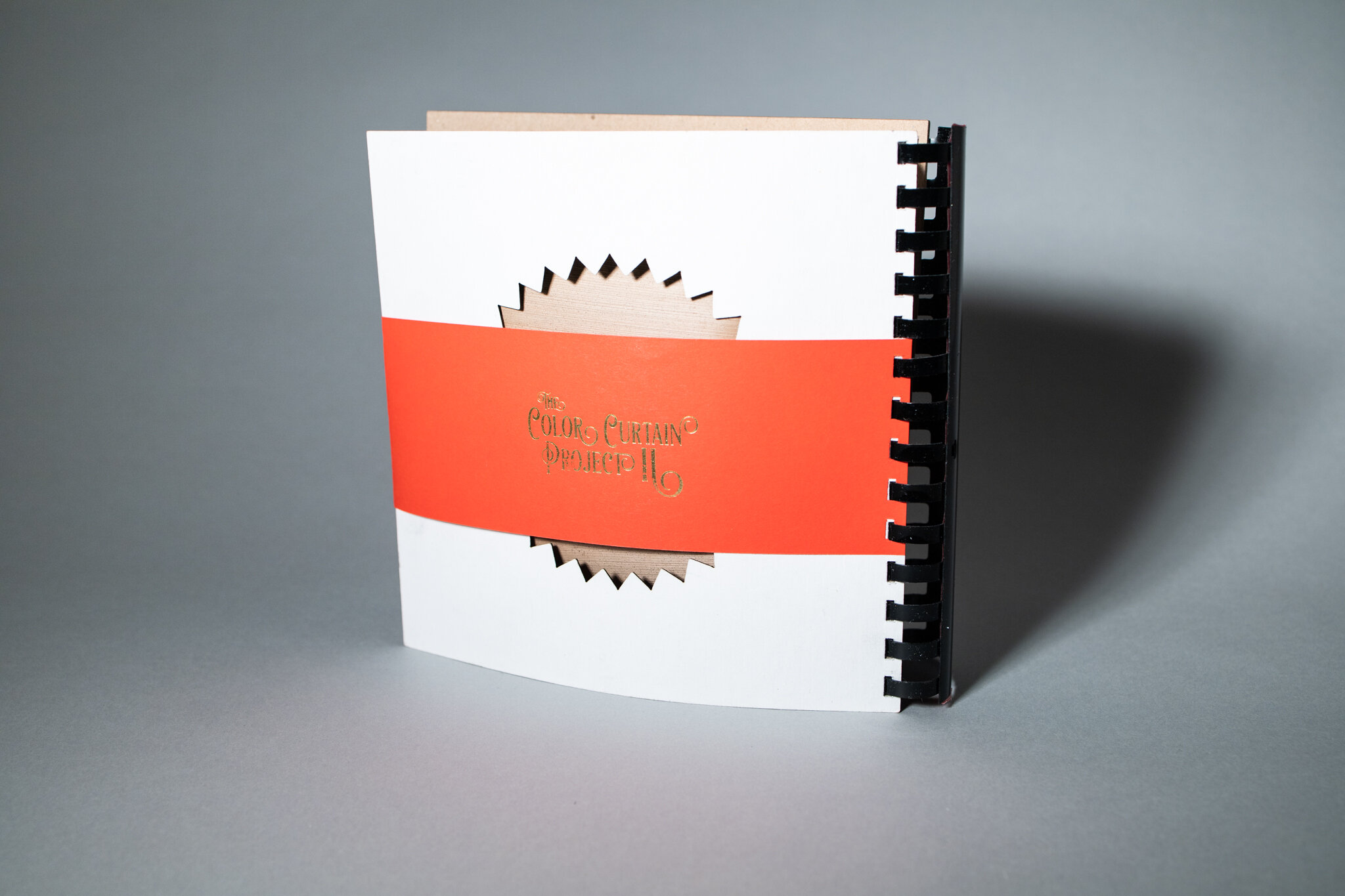

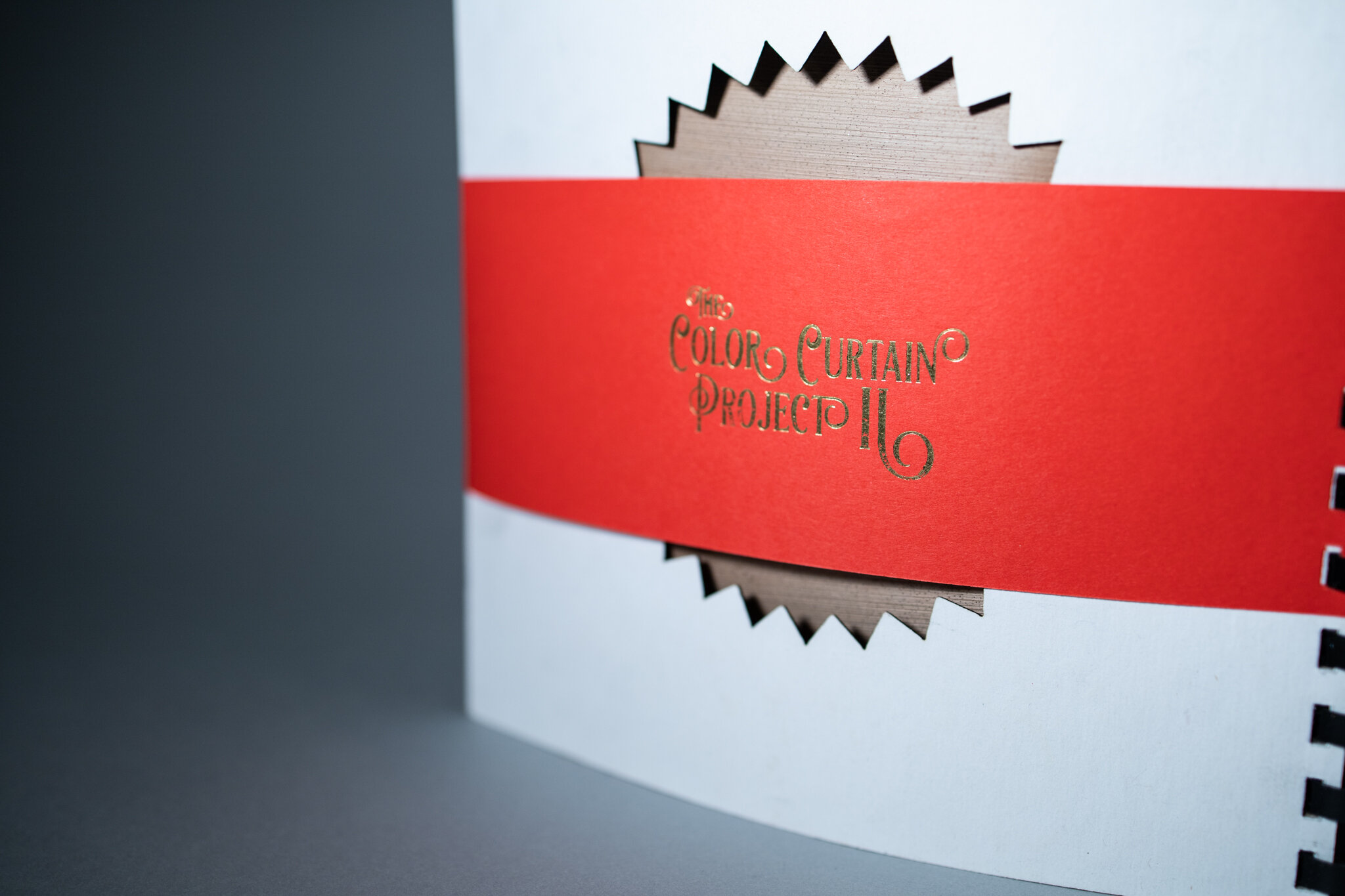
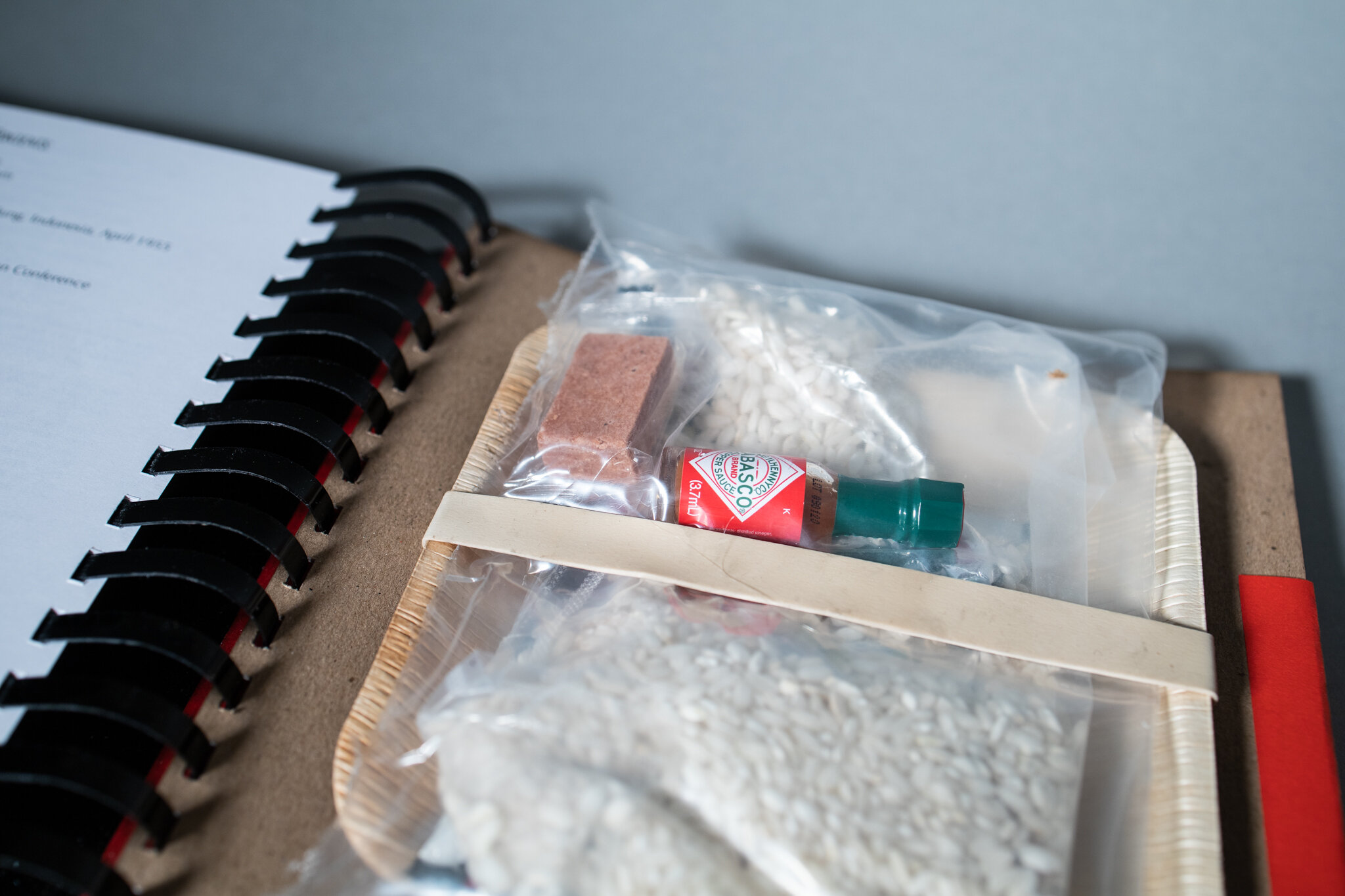
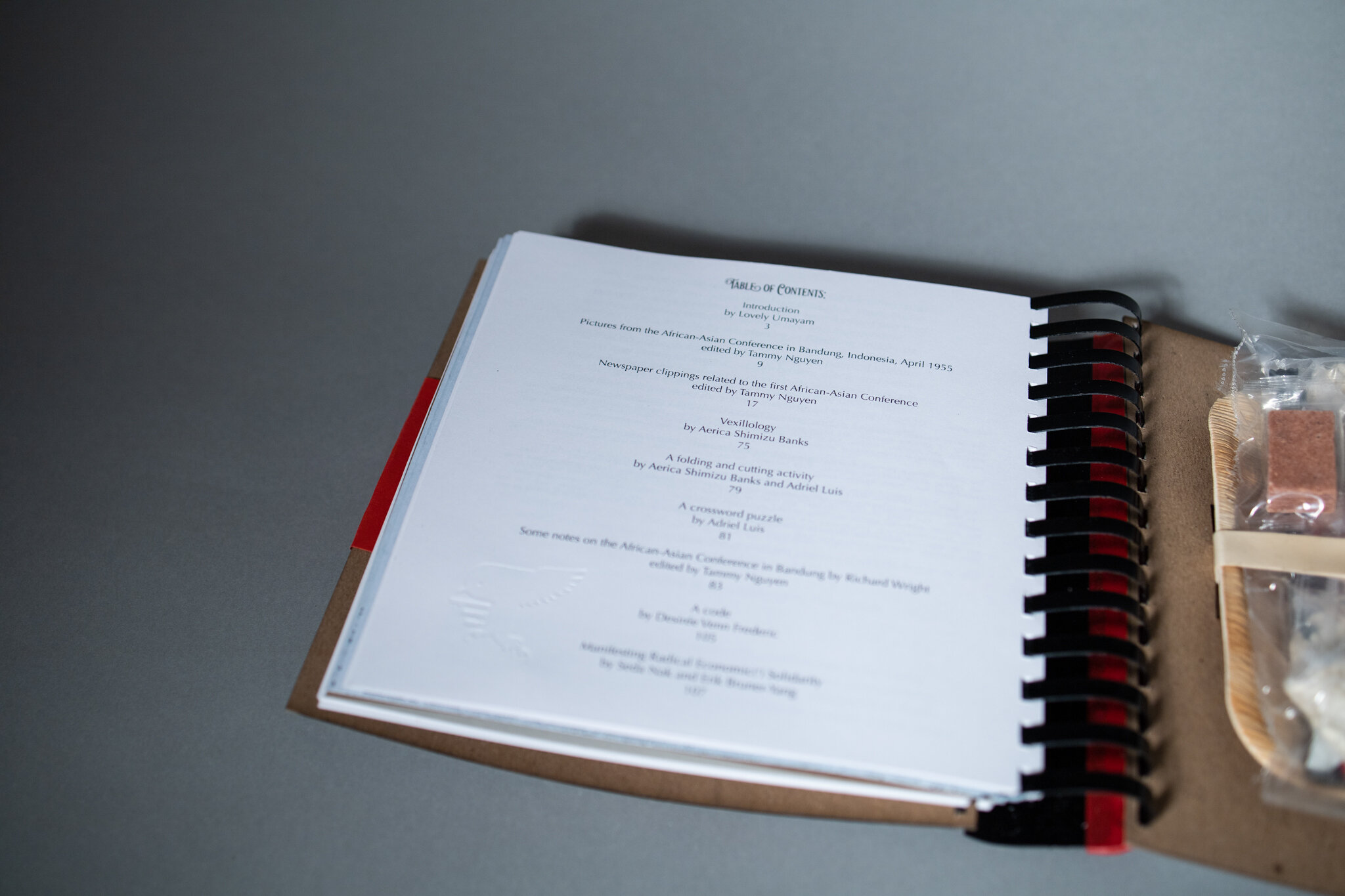
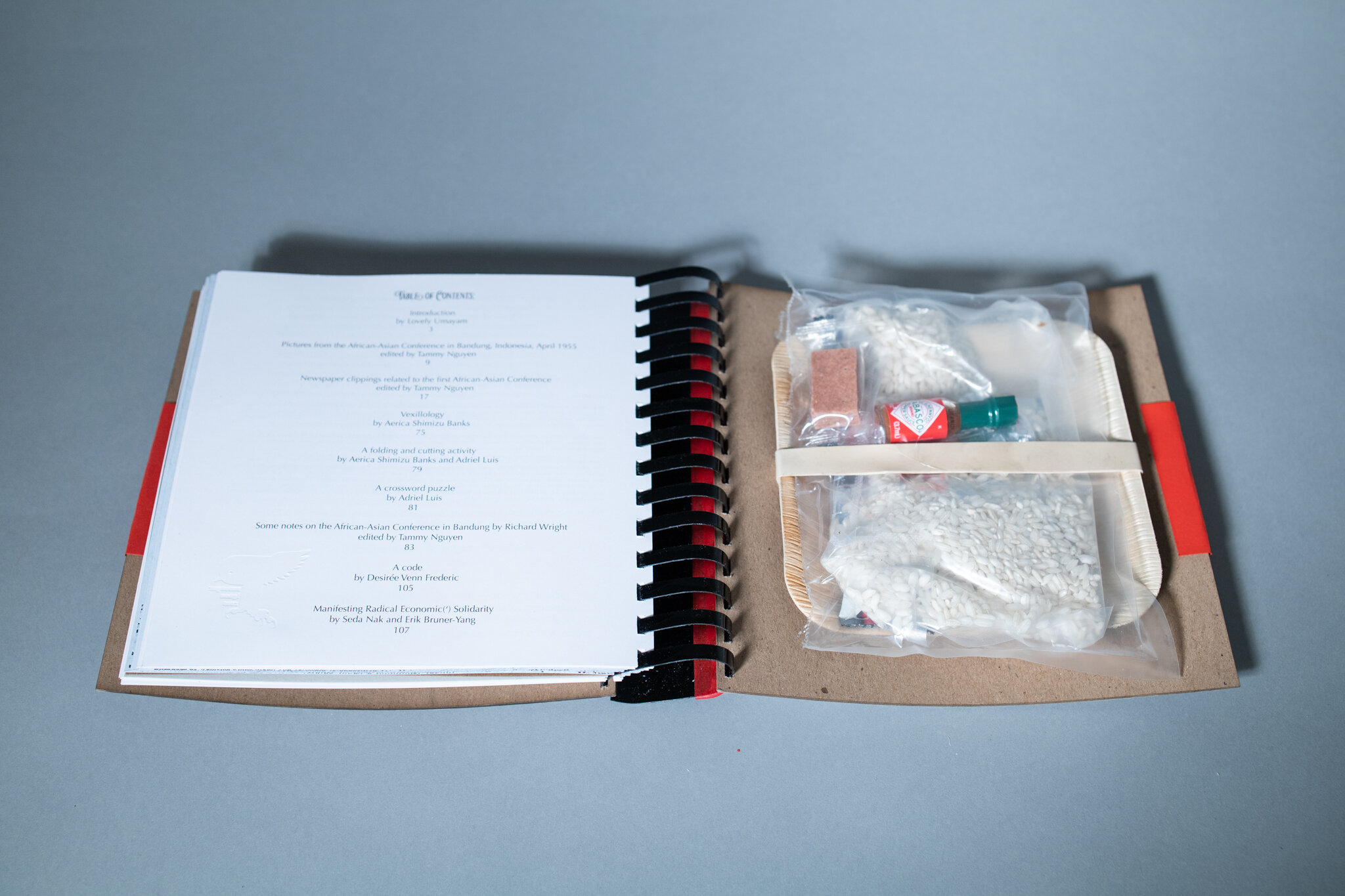
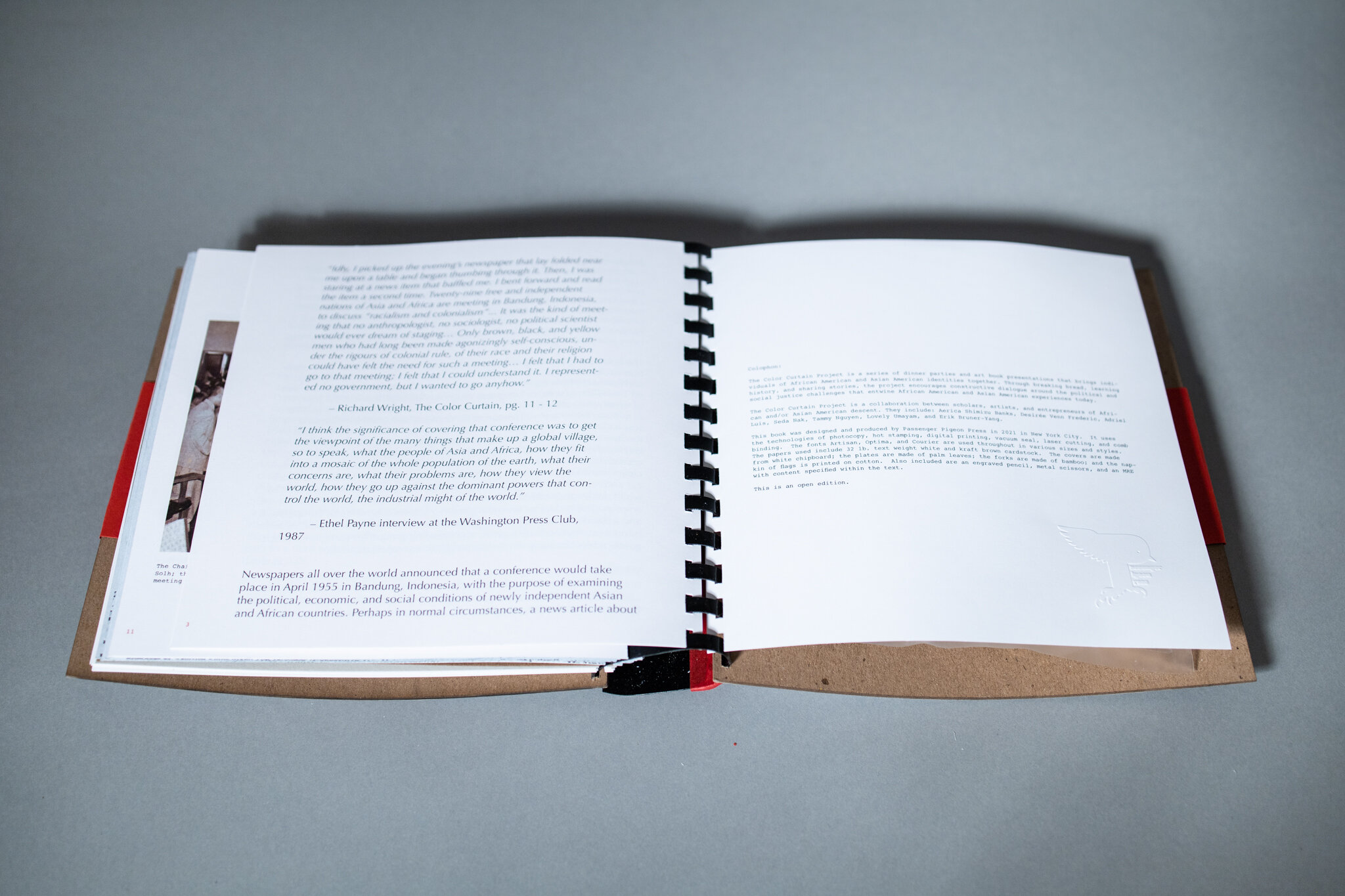

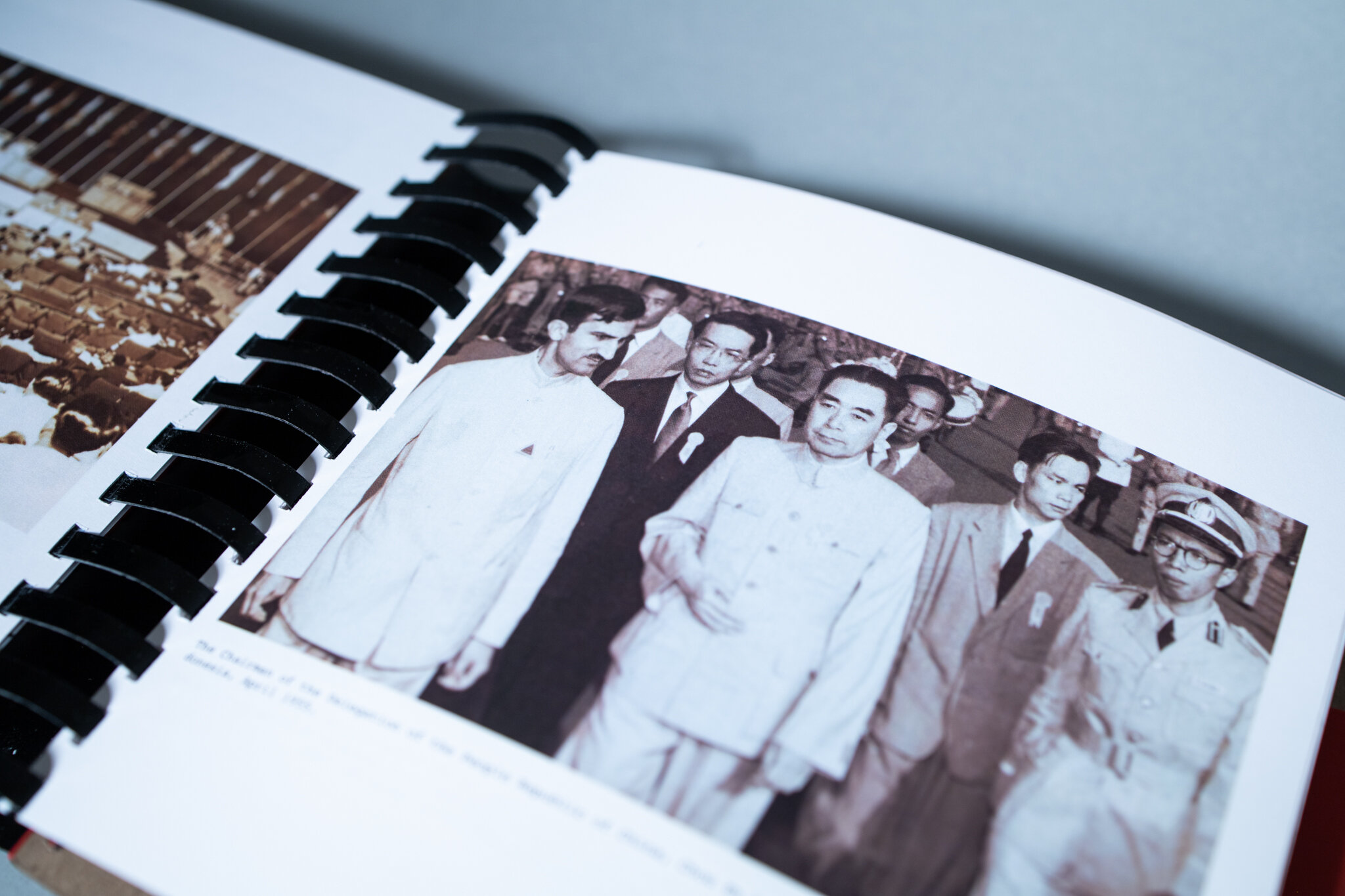
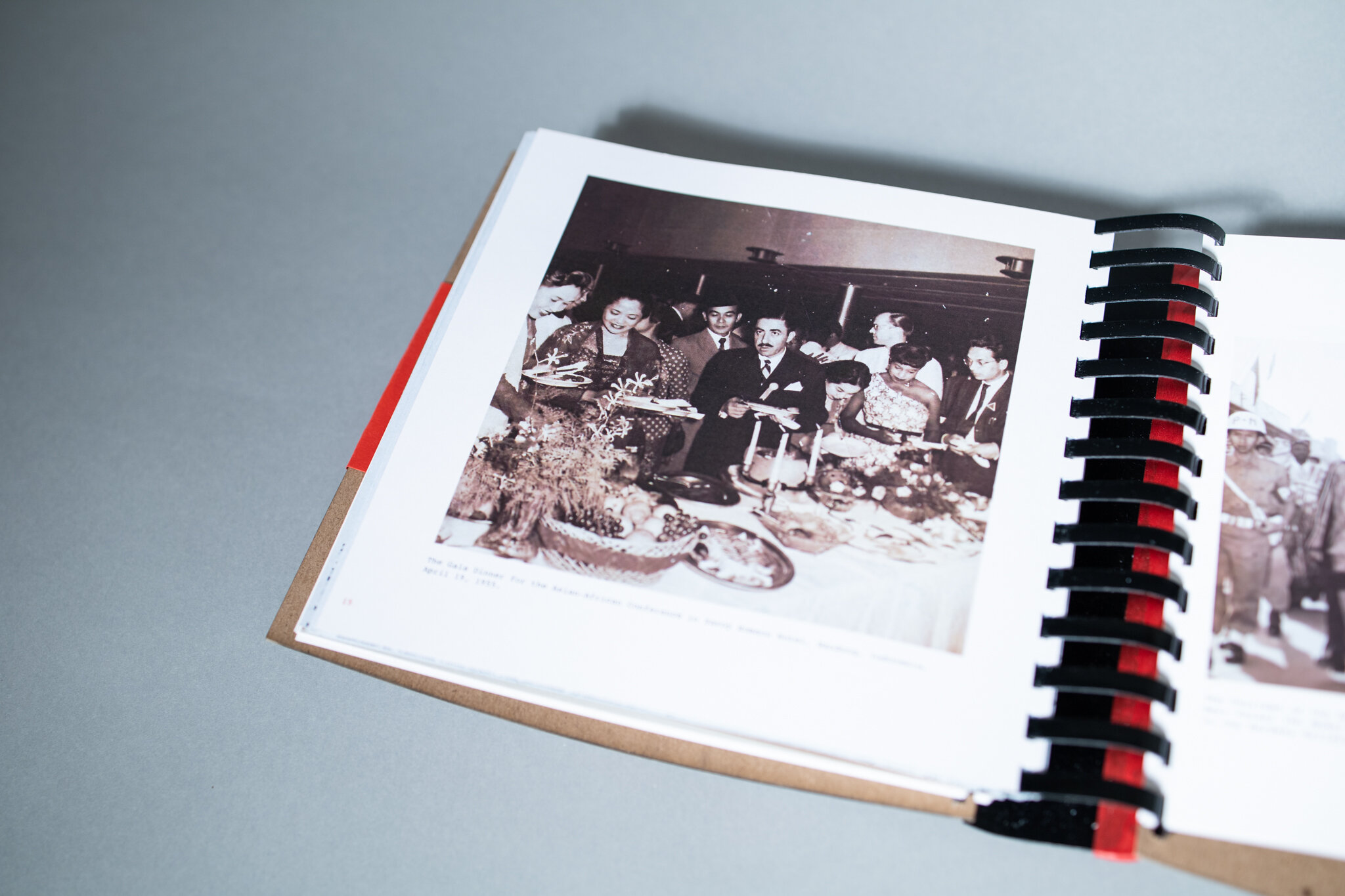
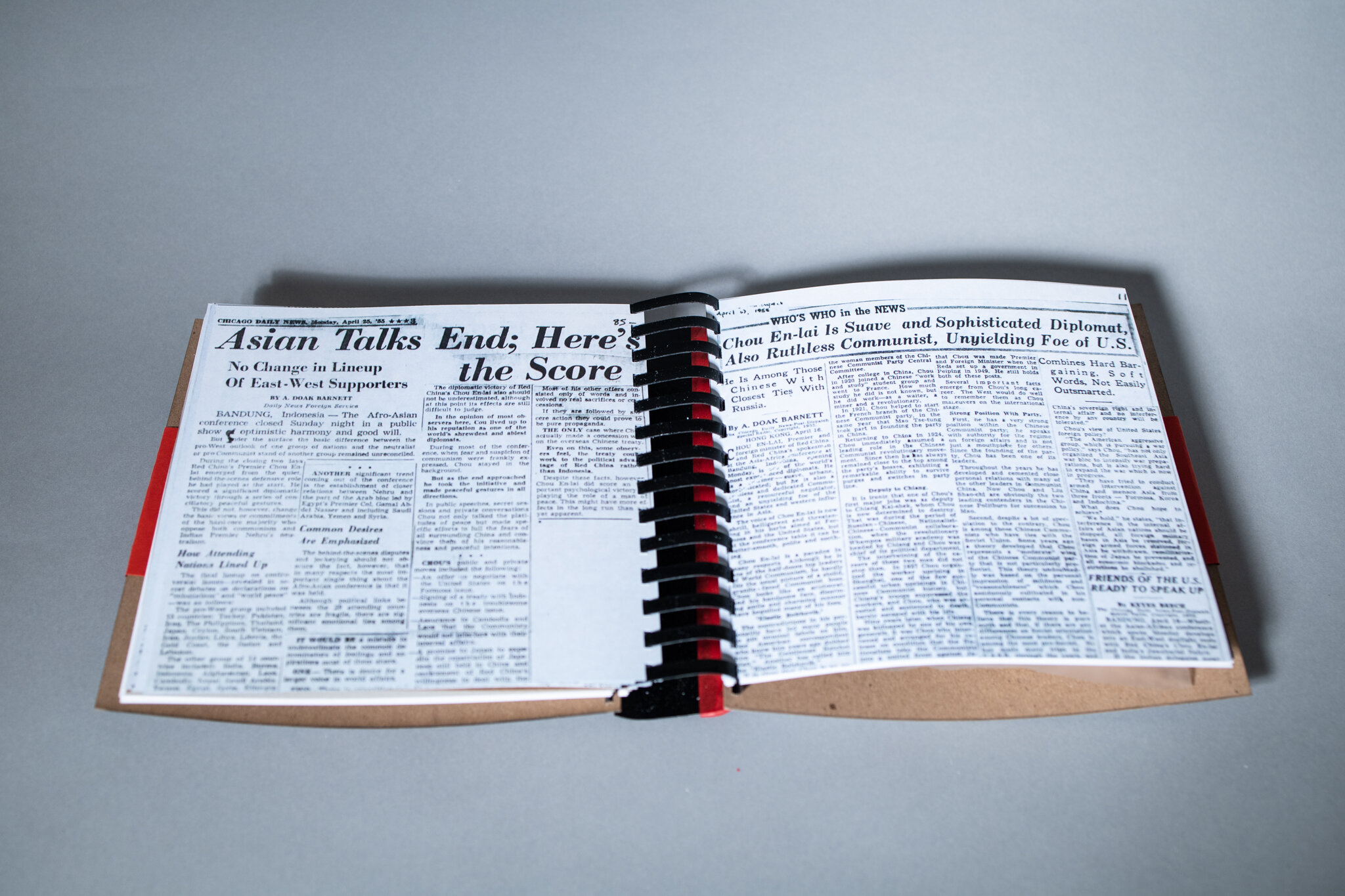
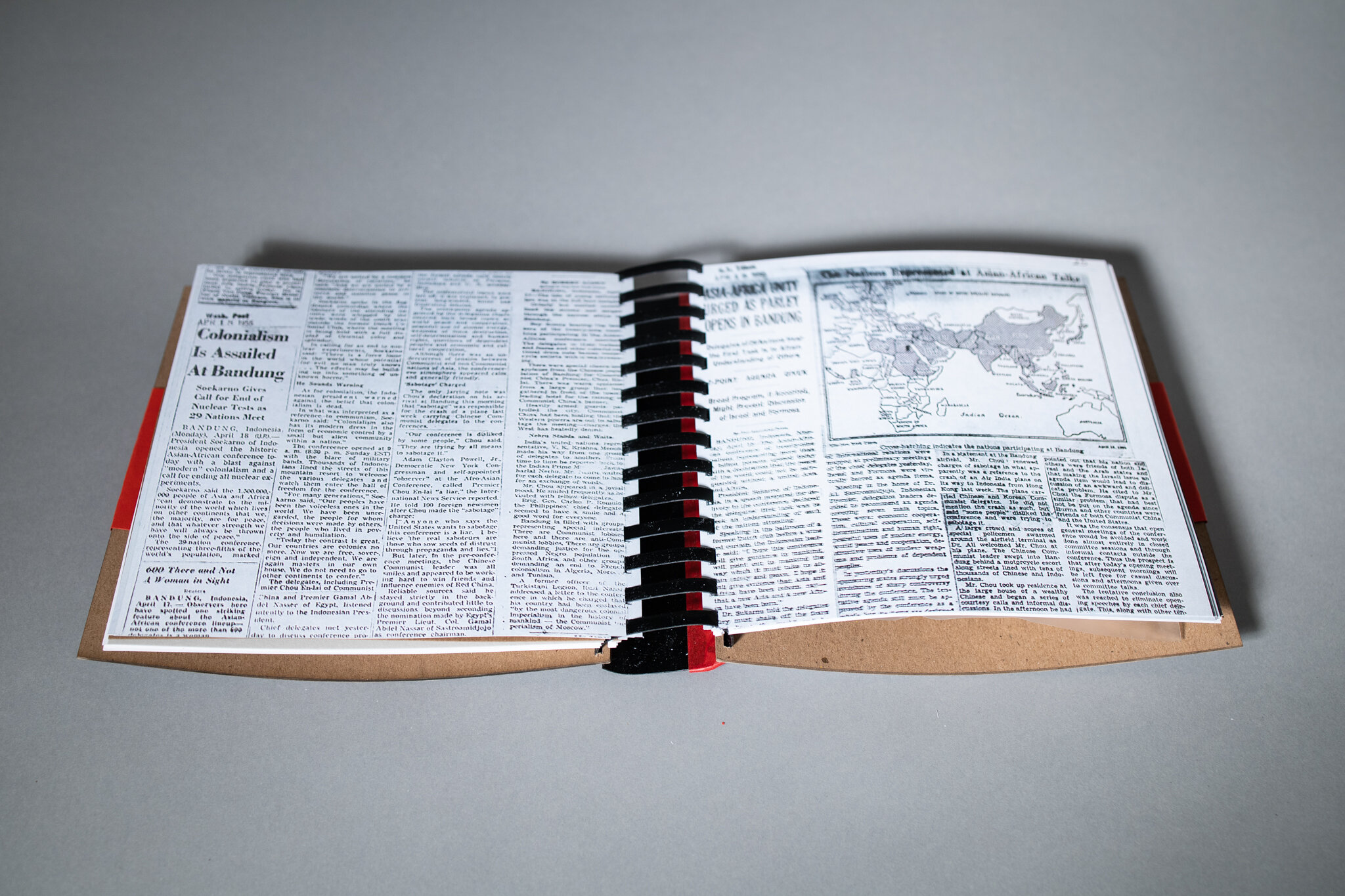
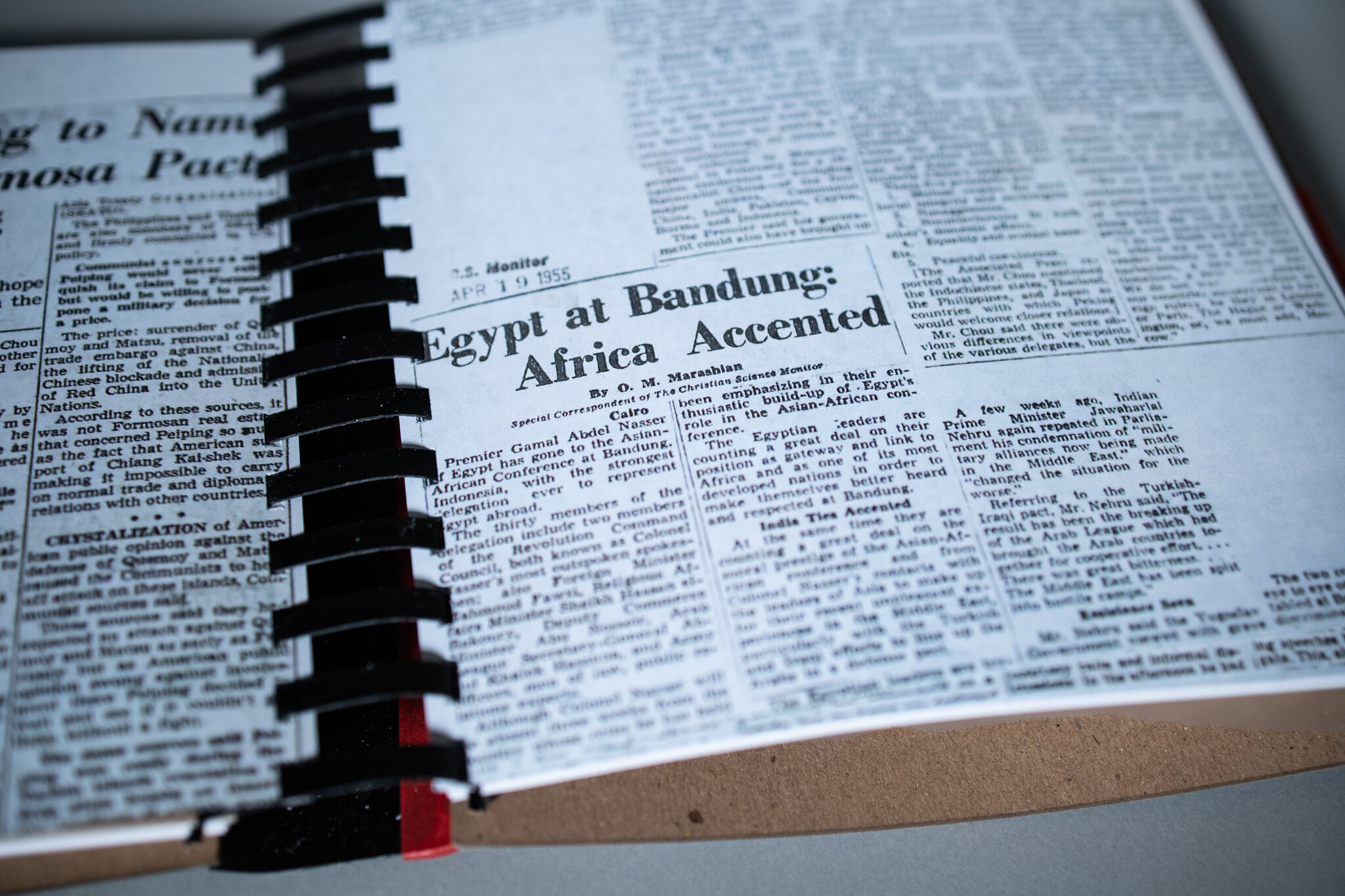
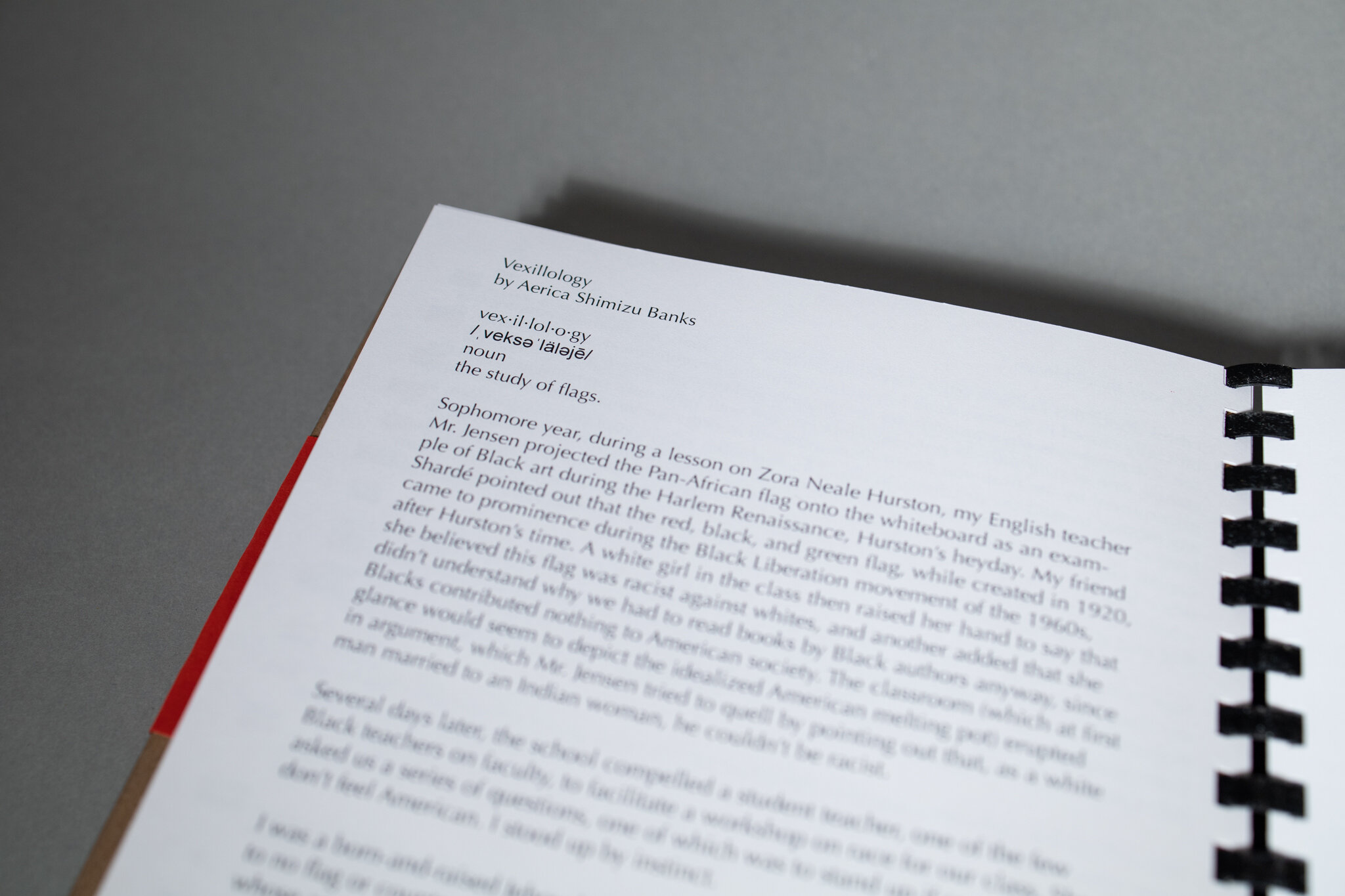
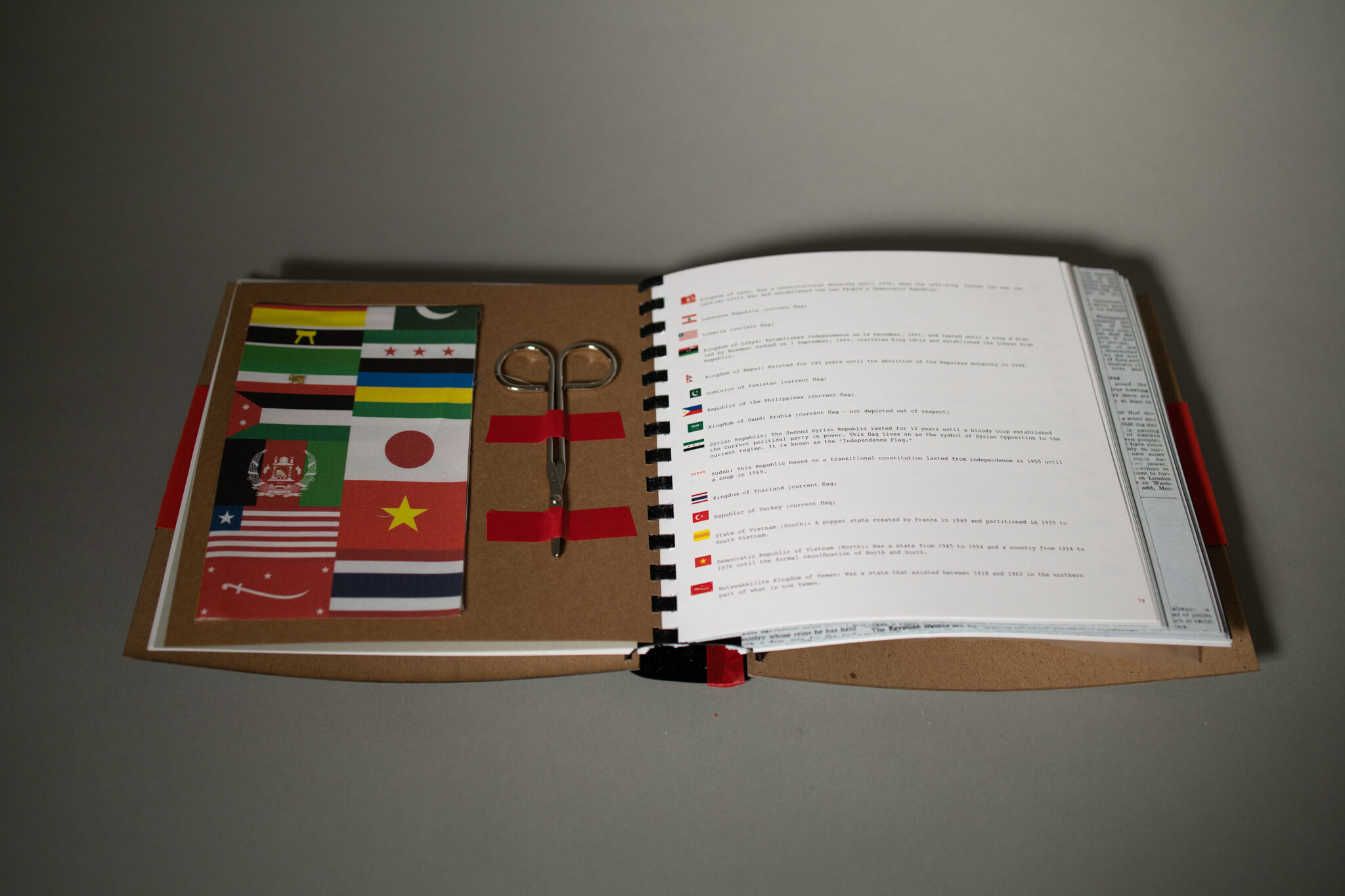
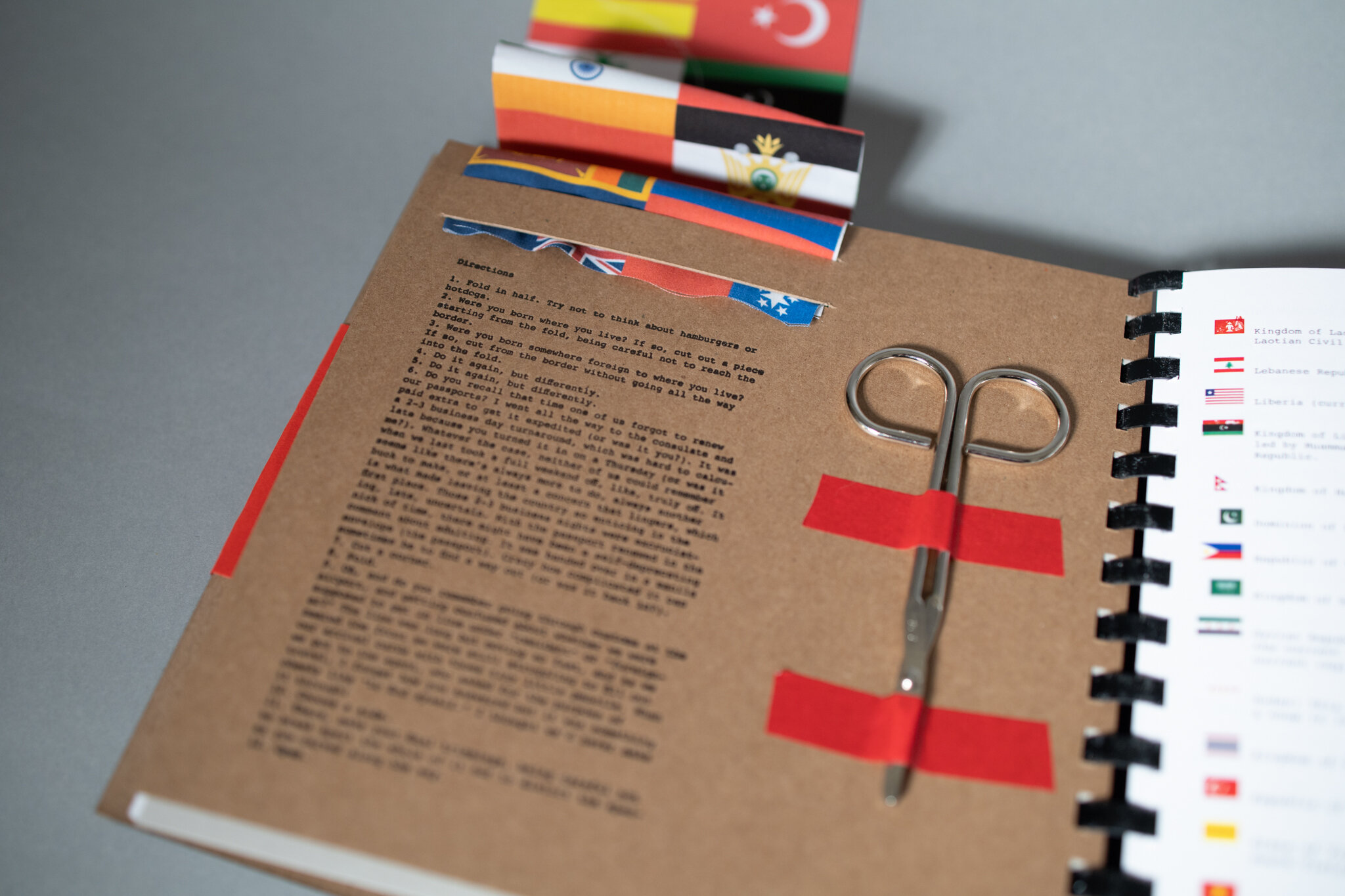
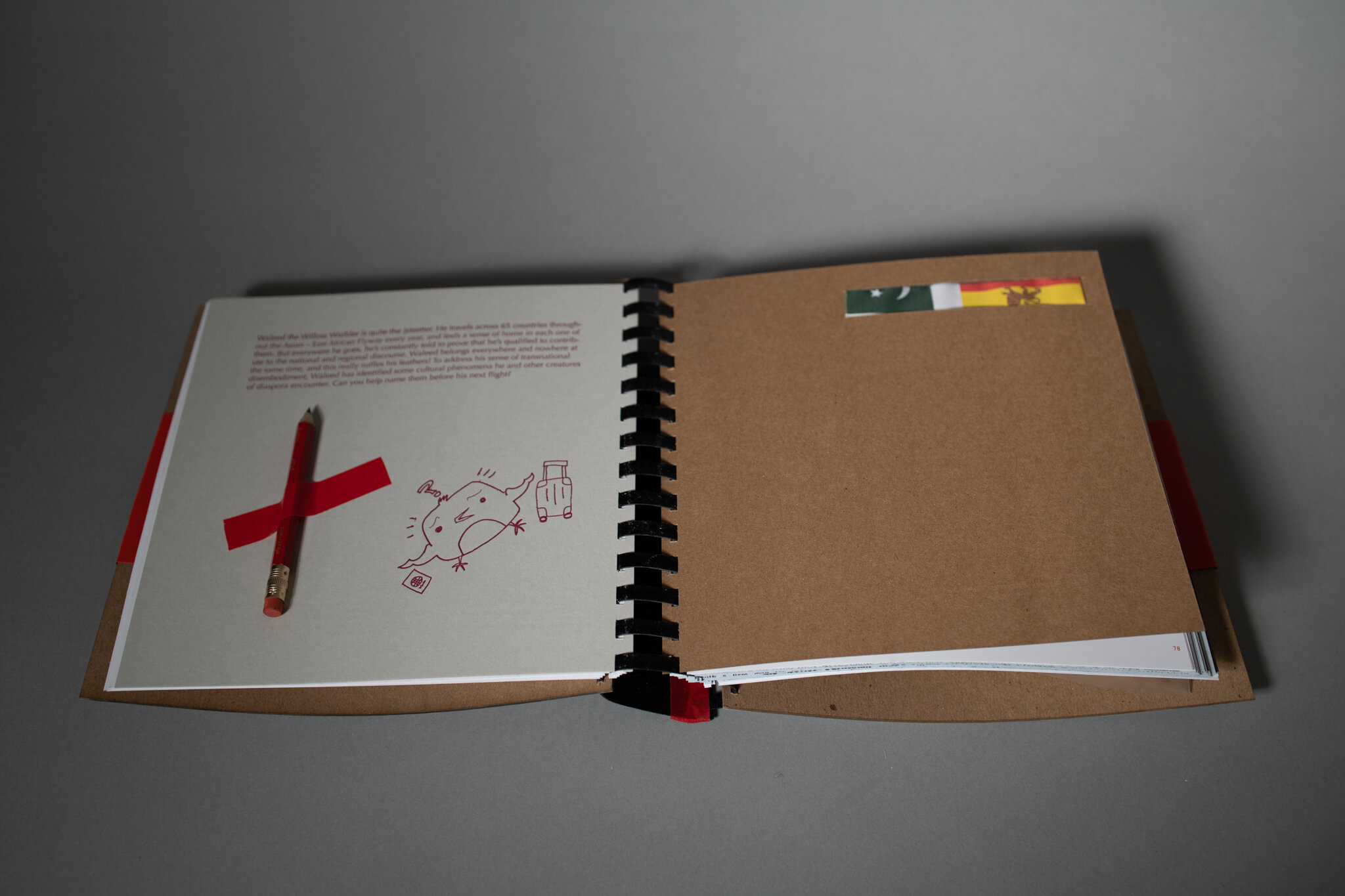
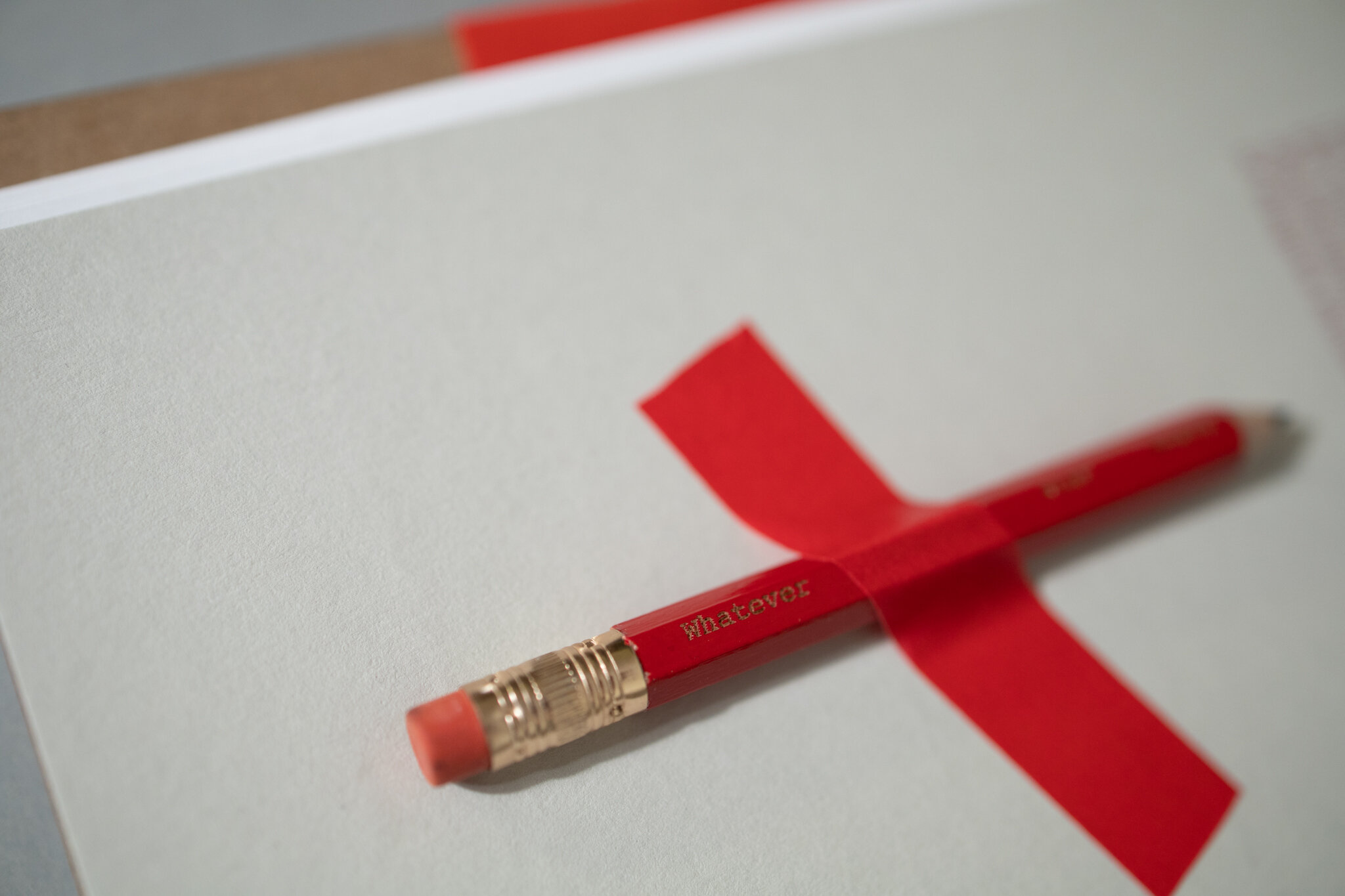
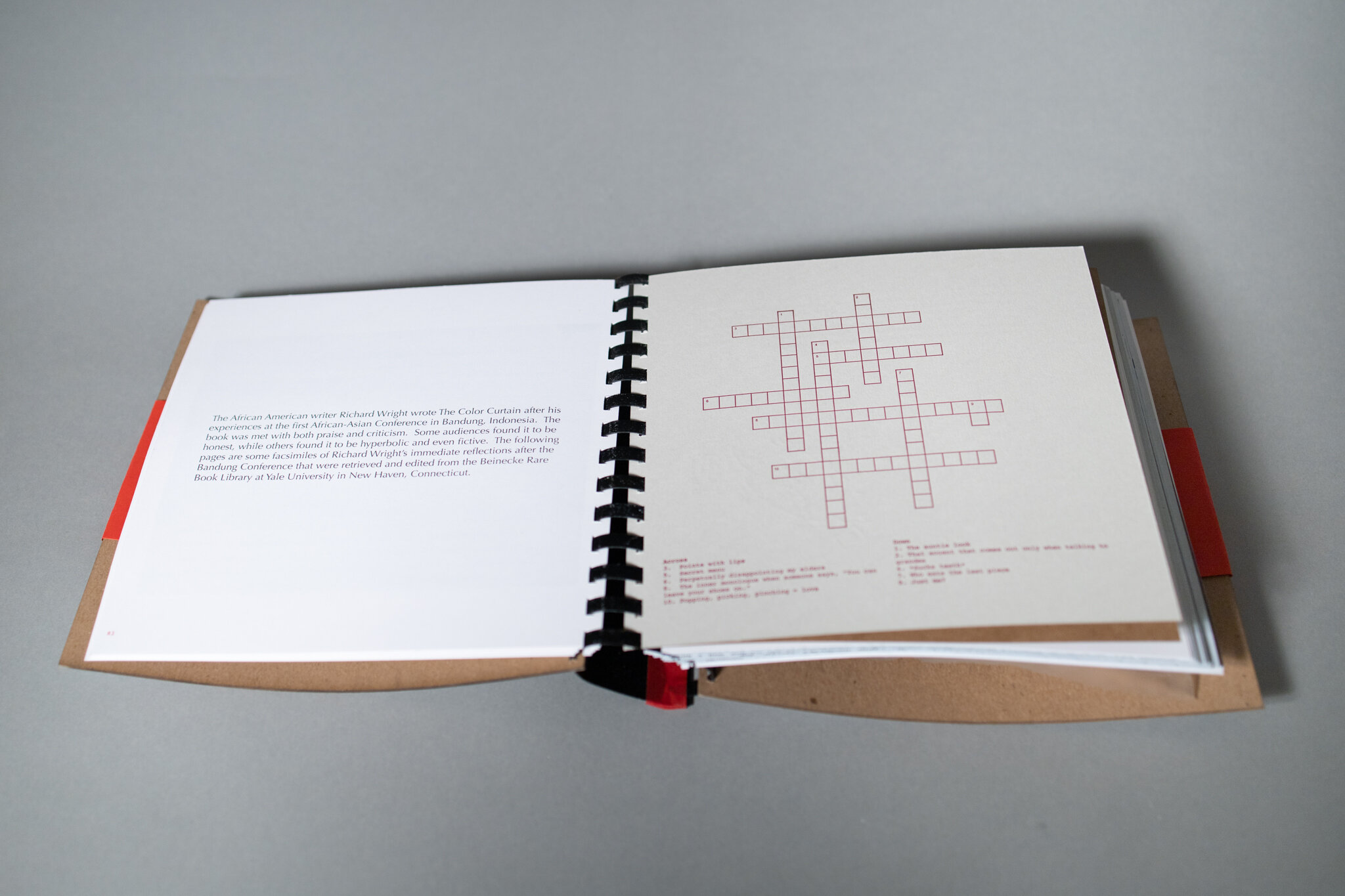
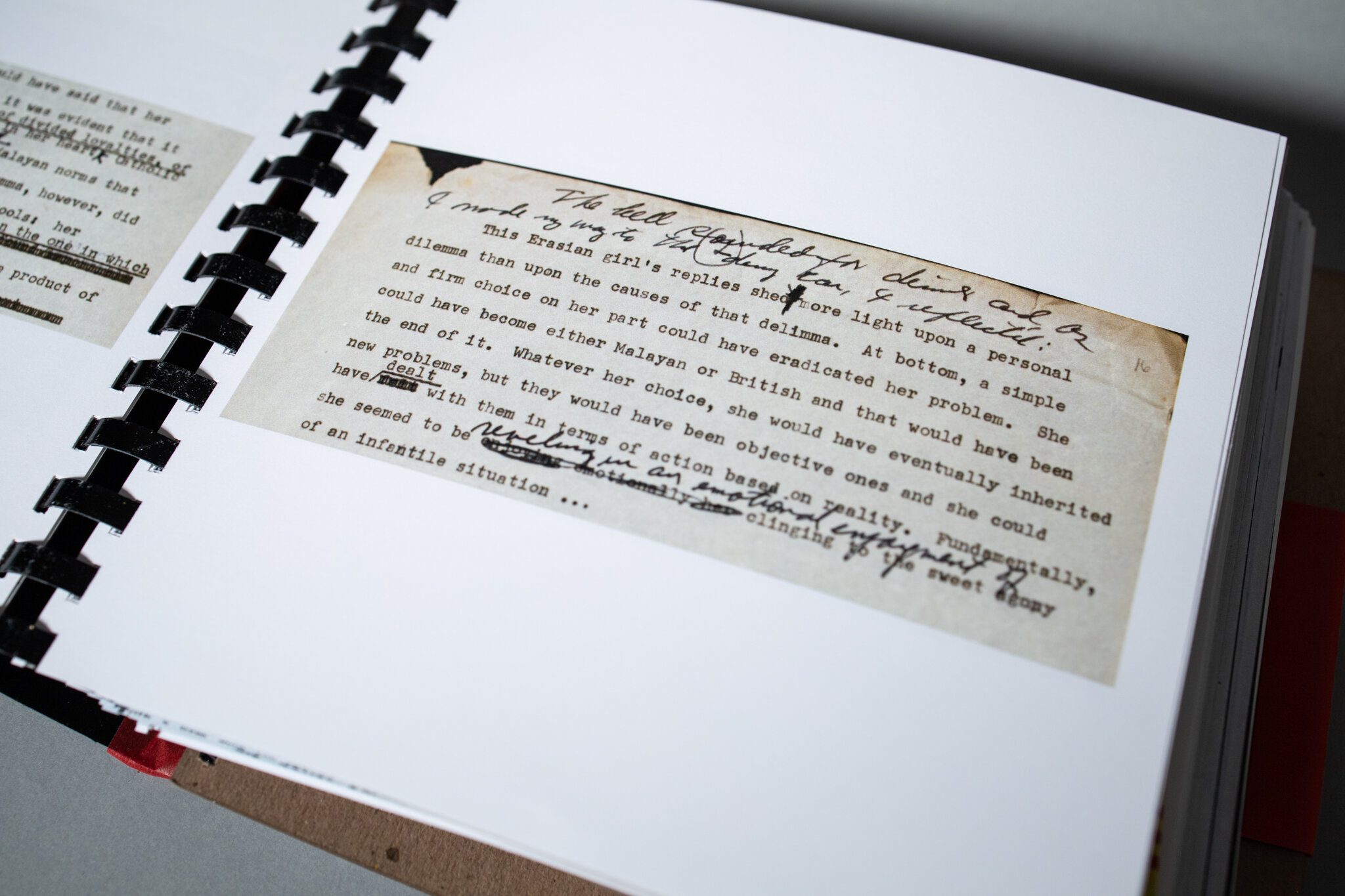
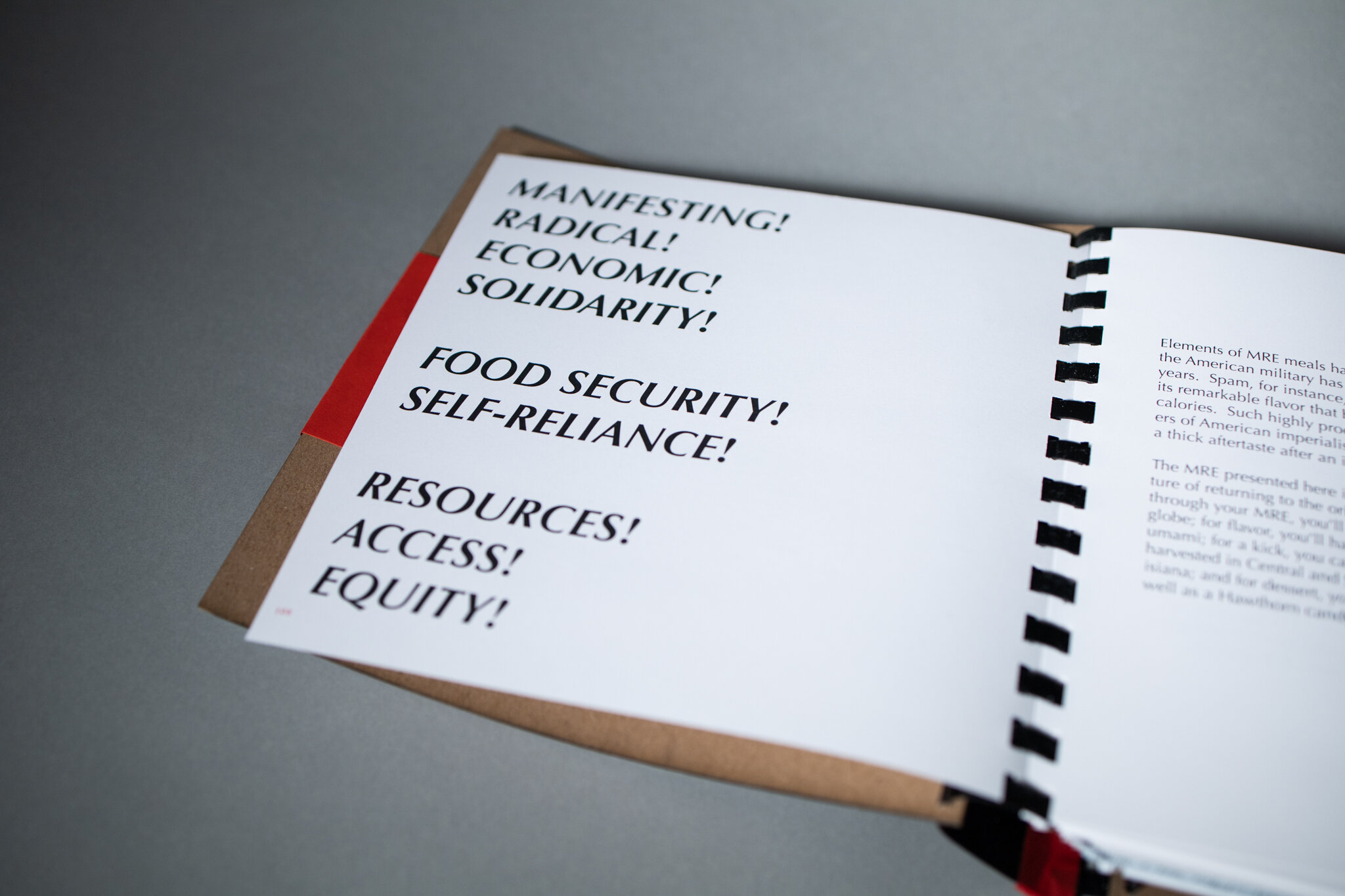
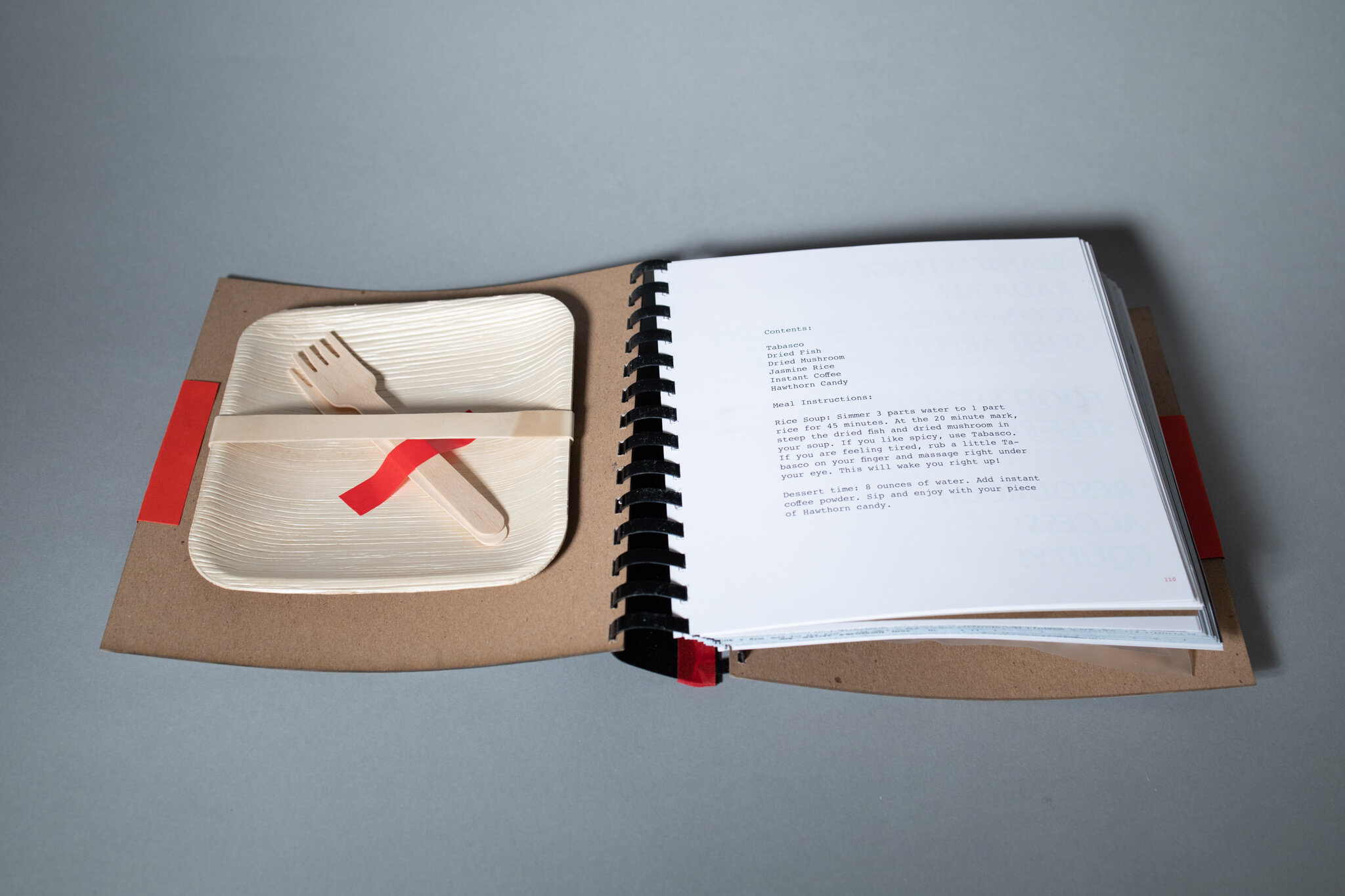
The Color Curtain Project I
ON SATURDAY, SEPTEMBER 29th, 80 INDIVIDUALS OF AFRICAN AND ASIAN IDENTITIES GATHERED AT THE EATON DC, IN WASHINGTON DC TO DENOUNCE RACISM, COLONIALISM, AND NUCLEAR WAR!
THE DINNER
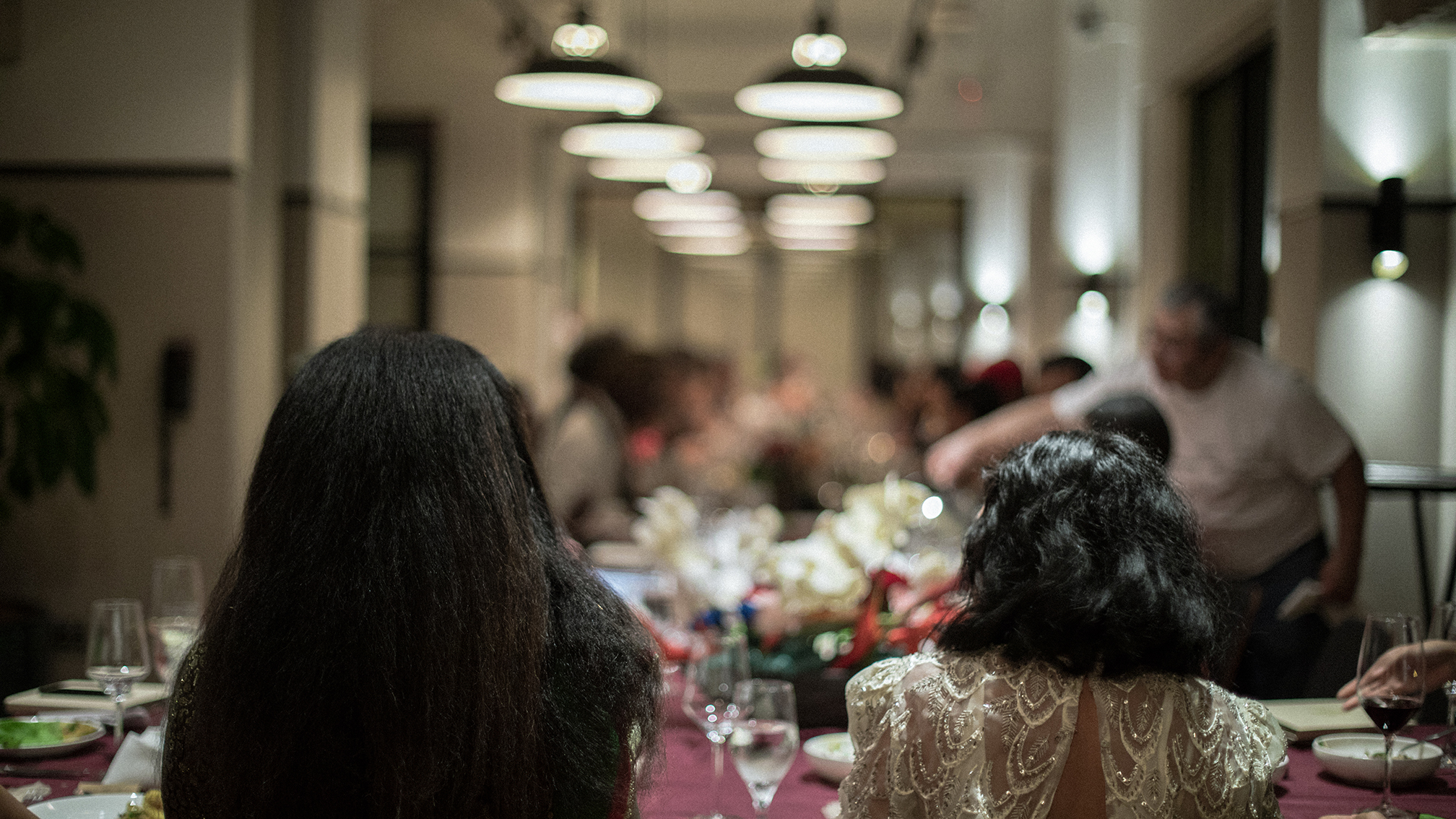
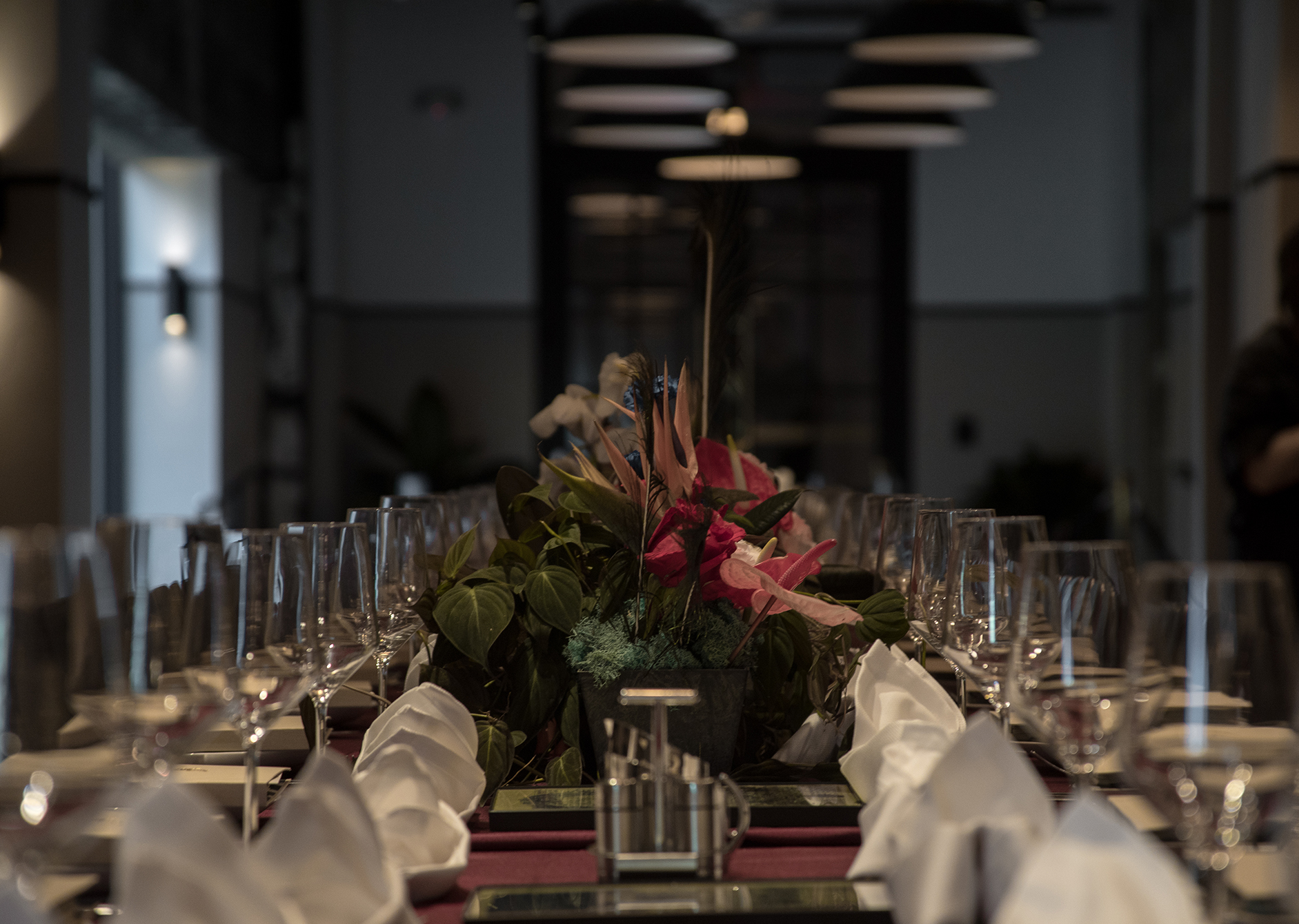
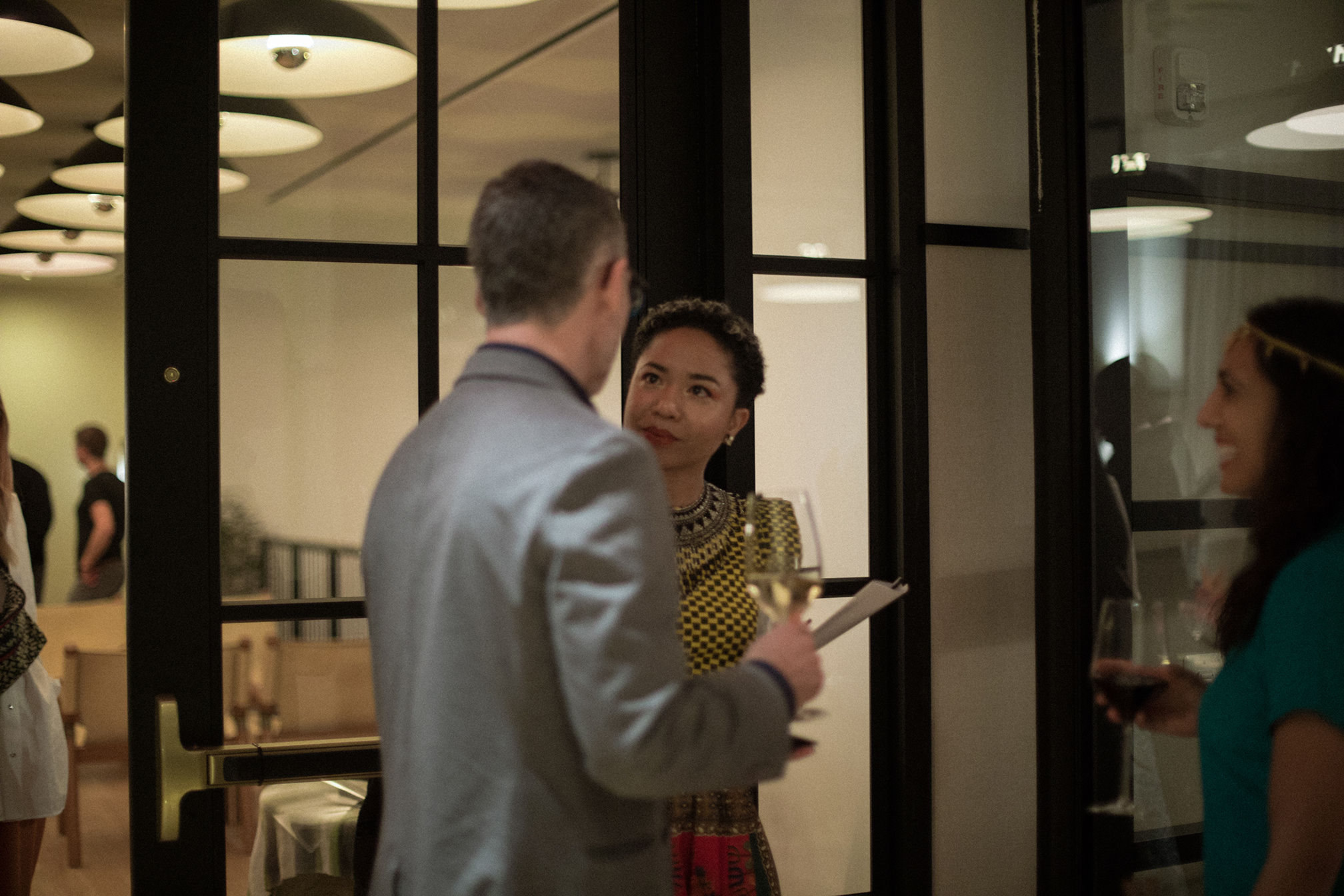
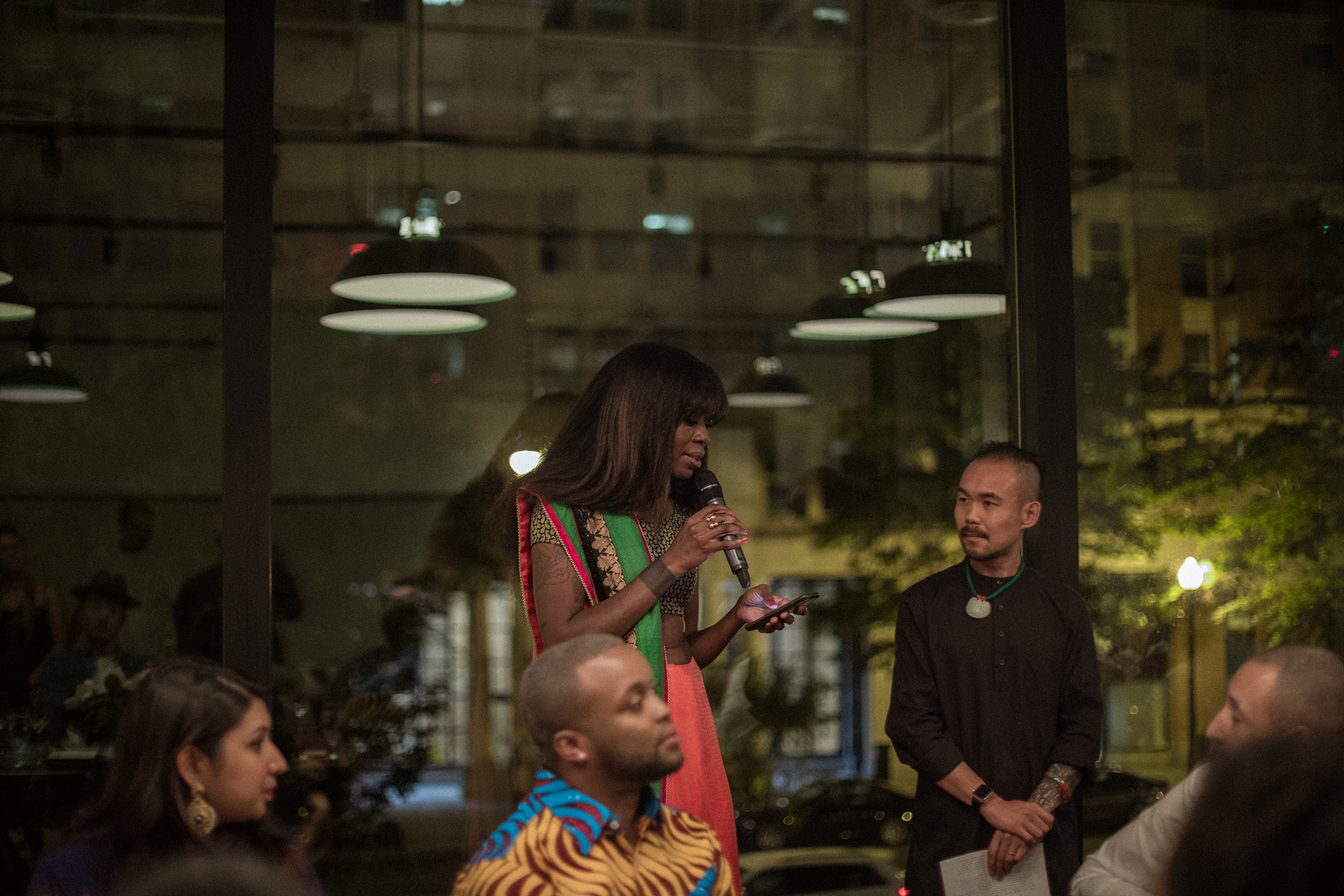
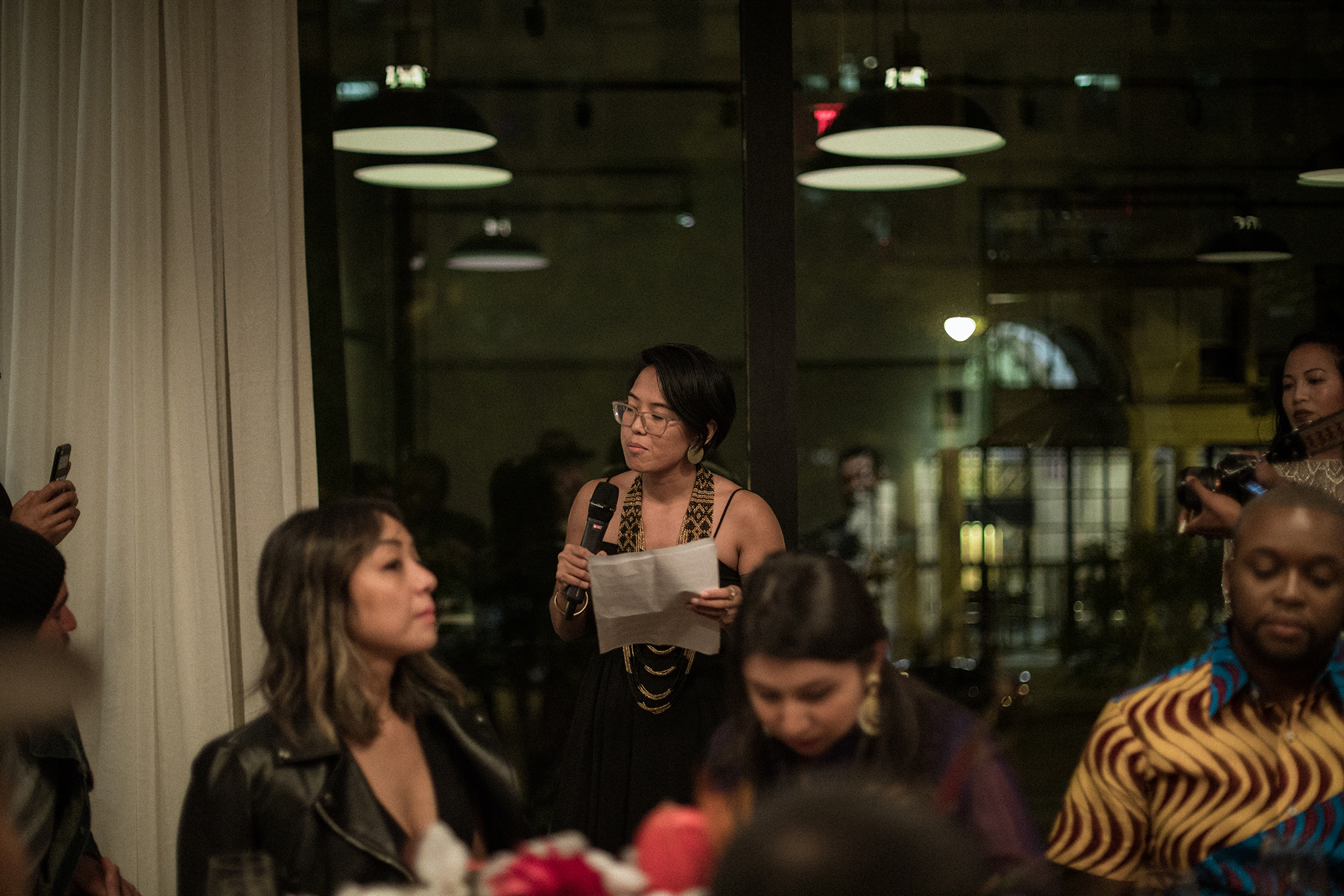
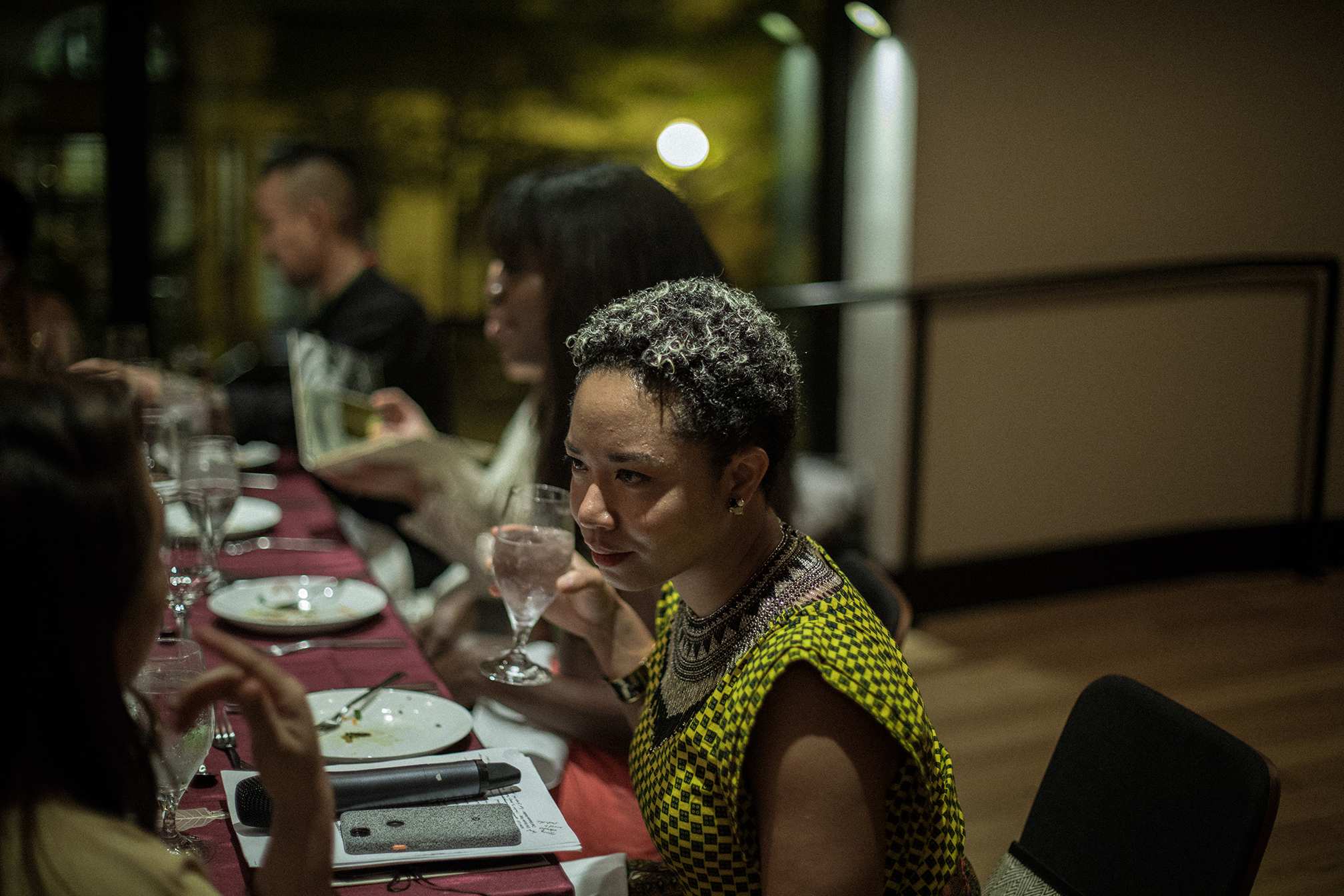
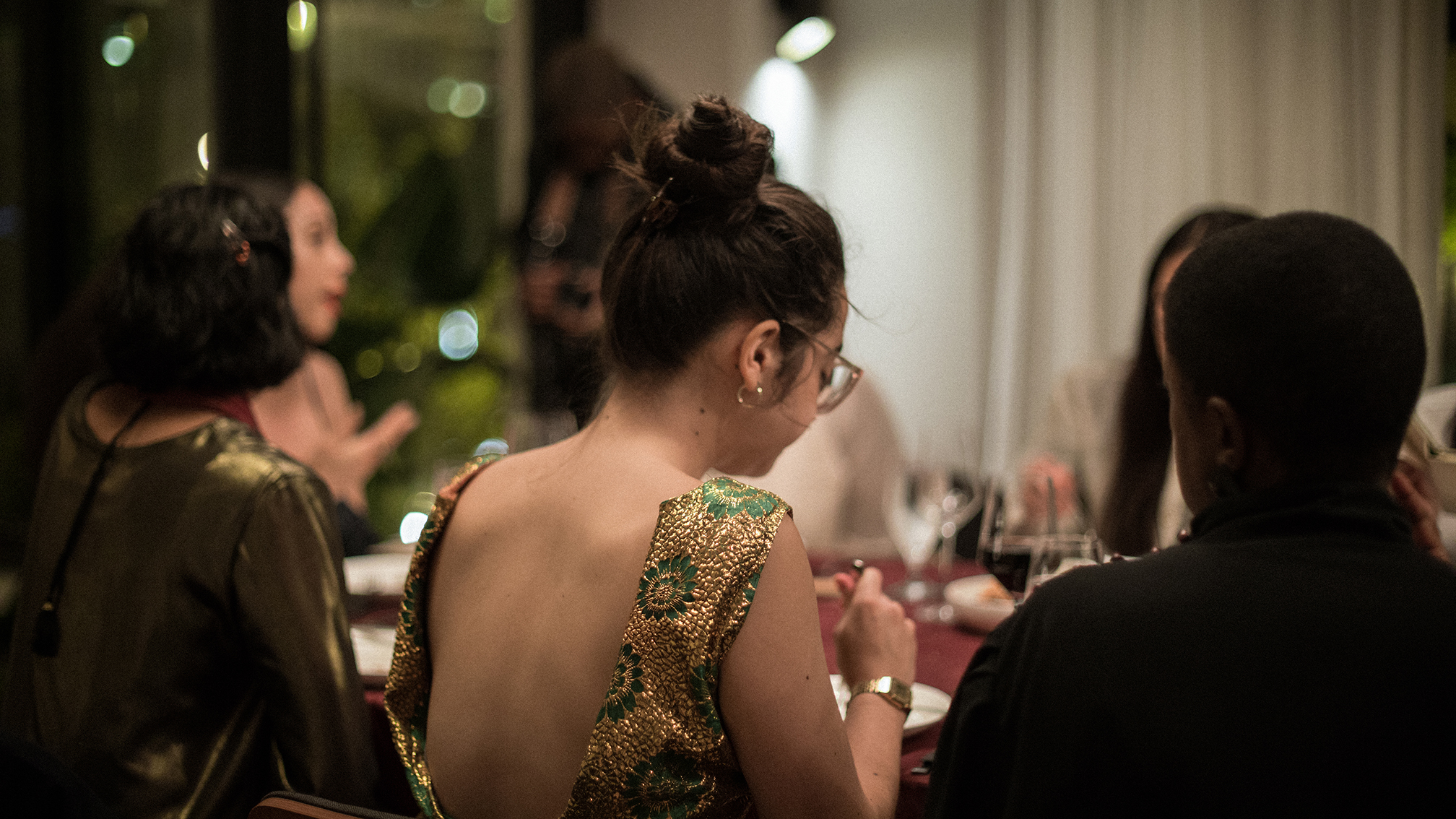
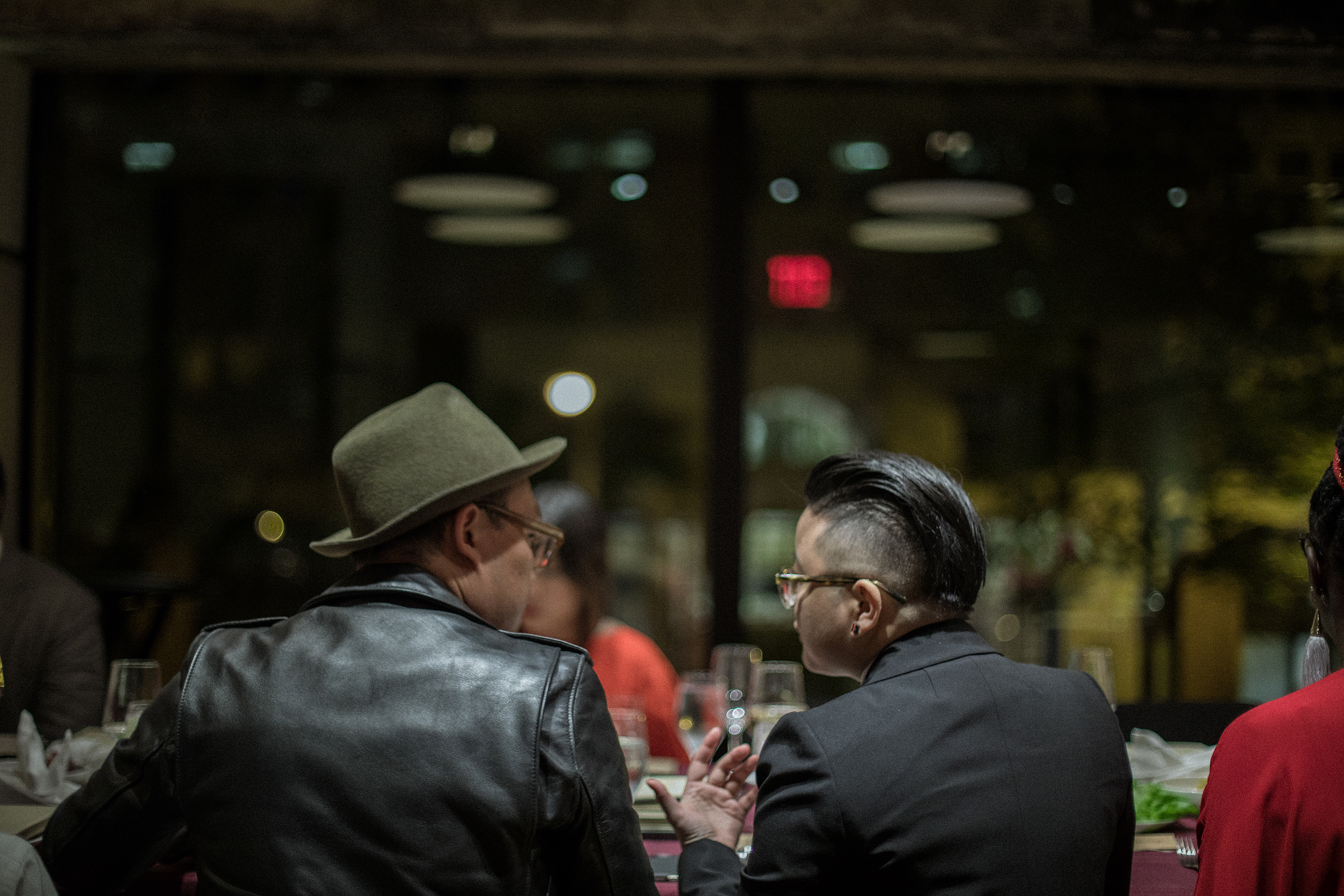
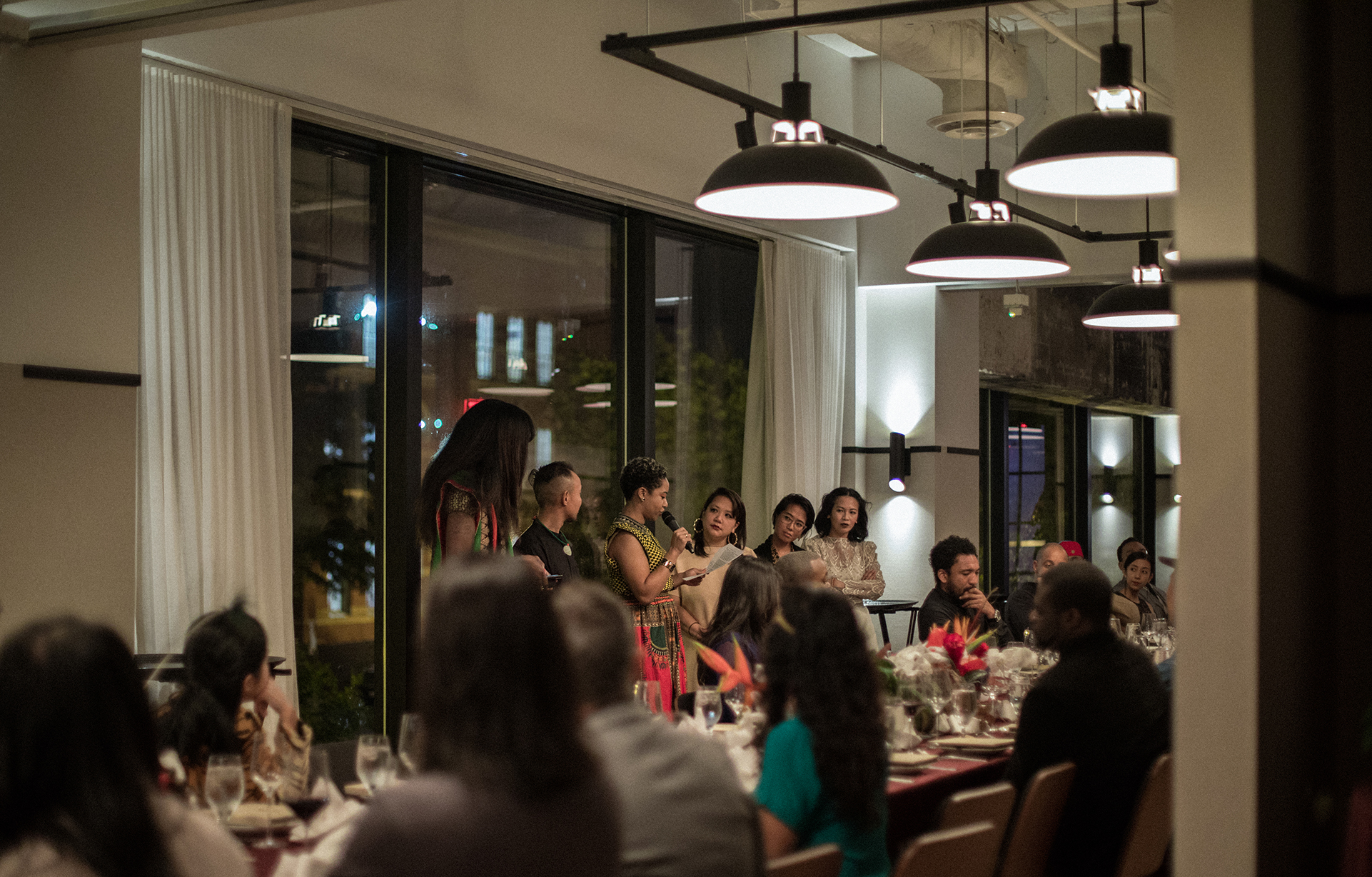

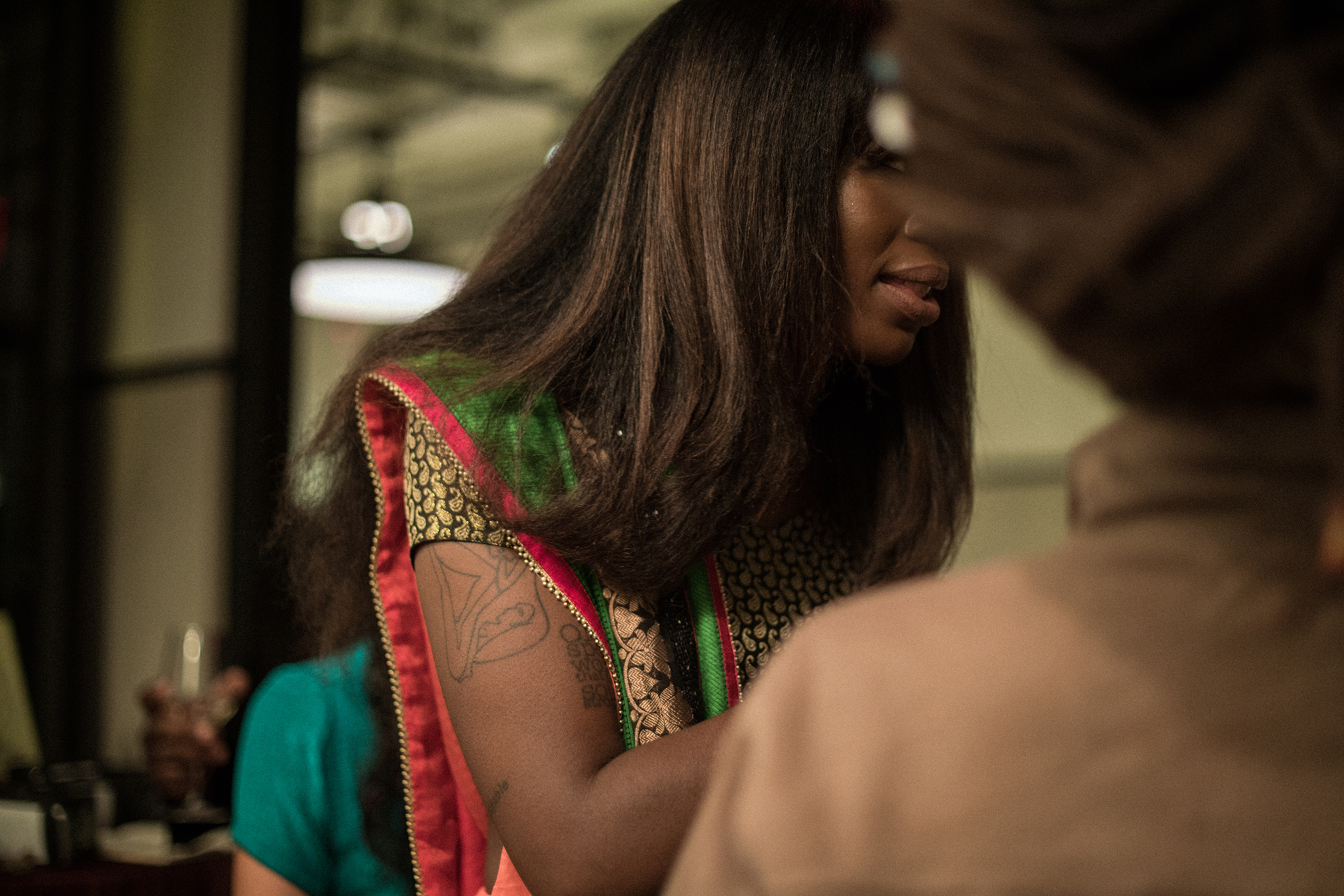
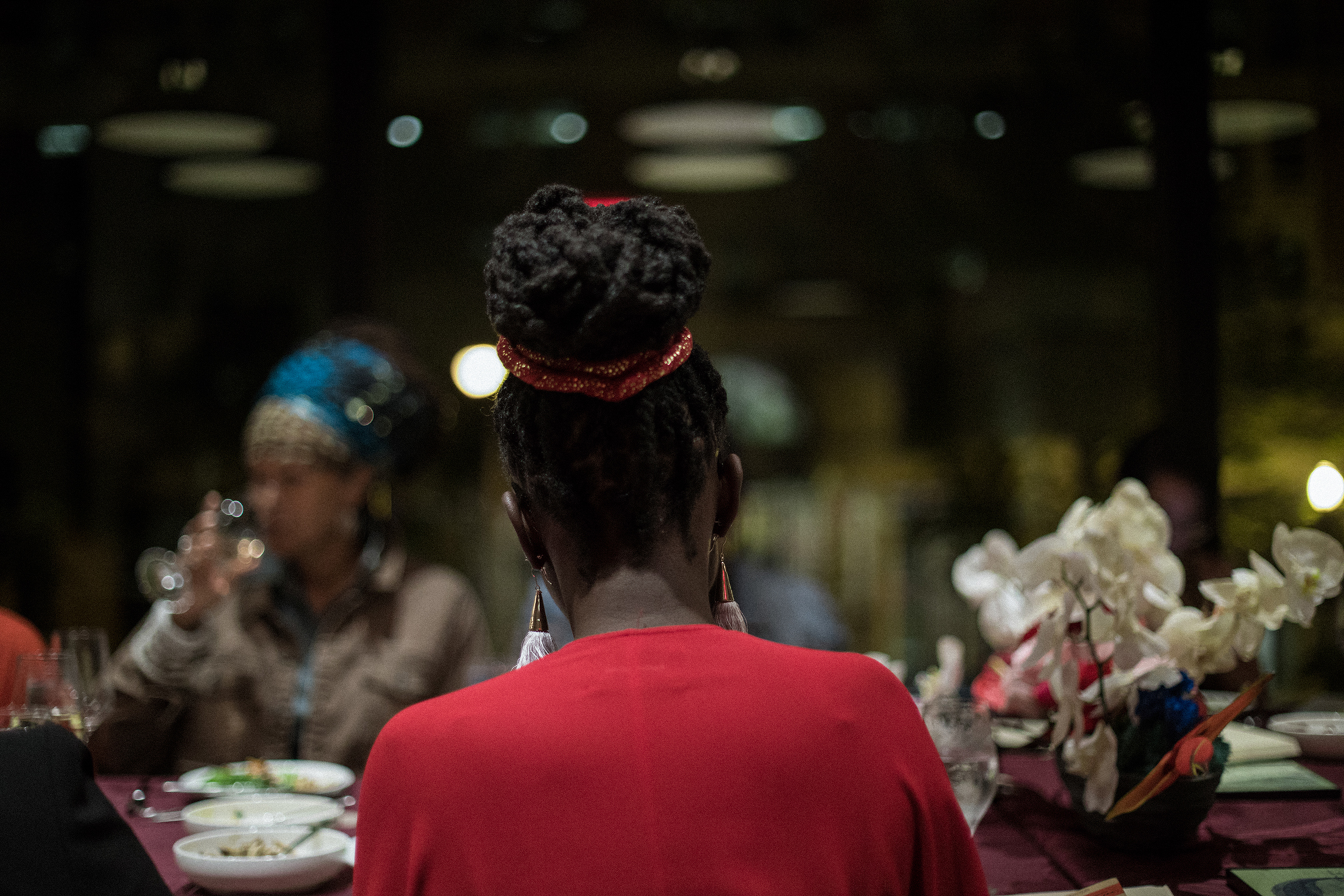
At first blush, the Color Curtain Project dinner resembled the grandeur of the state dinner: excessively lavish affairs attended by diplomats to demonstrate their stature and reaffirm geopolitical relationships. But upon a closer look, the Color Curtain Project dinners break away from the rigid protocols of the state dinner by inserting counter-narratives — an unconventional seating arrangement; floral decor rich with symbolism; the sharing and passing of plates; recognition of chefs and the story behind their ingredients — that foster a spirit of informality, and in turn, a sense of community and family.
The first Color Curtain Project dinner and art book presentation was held at the Eaton Workshop in Washington, DC on September 29, 2018. Sixty guests intermingled and celebrated their distinct and shared identities as immigrants, Washingtonians, creatives, policy practitioners, New Yorkers, transplants, African-Americans, entrepreneurs, community advocates, Asian-Americans, among others. Throughout the night, they debated and shared perspectives about issues that Bandung Conference diplomats also grappled with in 1955: displacement, nuclear disarmament, and the true meaning of freedom.
THE BOOK
The Color Curtain Project box set includes the artist book from the dinner and a second book which reflects and continually reimagines the dinner in a codex format.
It is an edition of 20.
The Color Curtain Project dinner was complemented by a hand-made art book published by Passenger Pigeon Press. A book was presented to every dinner guest as their guide through the evening; each chapter of the book signifies a dinner course. Each book features newspaper clippings and other ephemera about the Bandung Conference, photographs of Wright's first drafts of The Color Curtain, and interactive pages that invite guests to write, scratch, cut, and talk as the meal progresses. Books are unique for each Color Curtain project dinner; guests are encouraged to take their books home as a keepsake and for further meditation.
After each dinner, a second book is made and the two codexes are presented as a box set. In the first iteration of this series, the second book includes notes from the guests; recipes for all of the dishes created by Chefs Erik Bruner-Yang, Selassie Atadika, Shola Olunloyo,
Ke’van McCray, and Tim Ma; an essay by curator Nicole Kaack which first appeared in the Brooklyn Rail; and a pop-up diagram about nuclear policy by analyst Karim Kamel.
The Washington, DC Color Curtain Project art book was presented at the Printed Matter Inc.'s 2018 NY Art Book Fair at MoMA PS1 and is available to the public in the collections of the the The Beinecke Rare Book & Manuscript Library at Yale University, The Center for Books Arts, and the Brizdle-Schoenberg Special Collections Center at the Ringling College of Art and Design.
